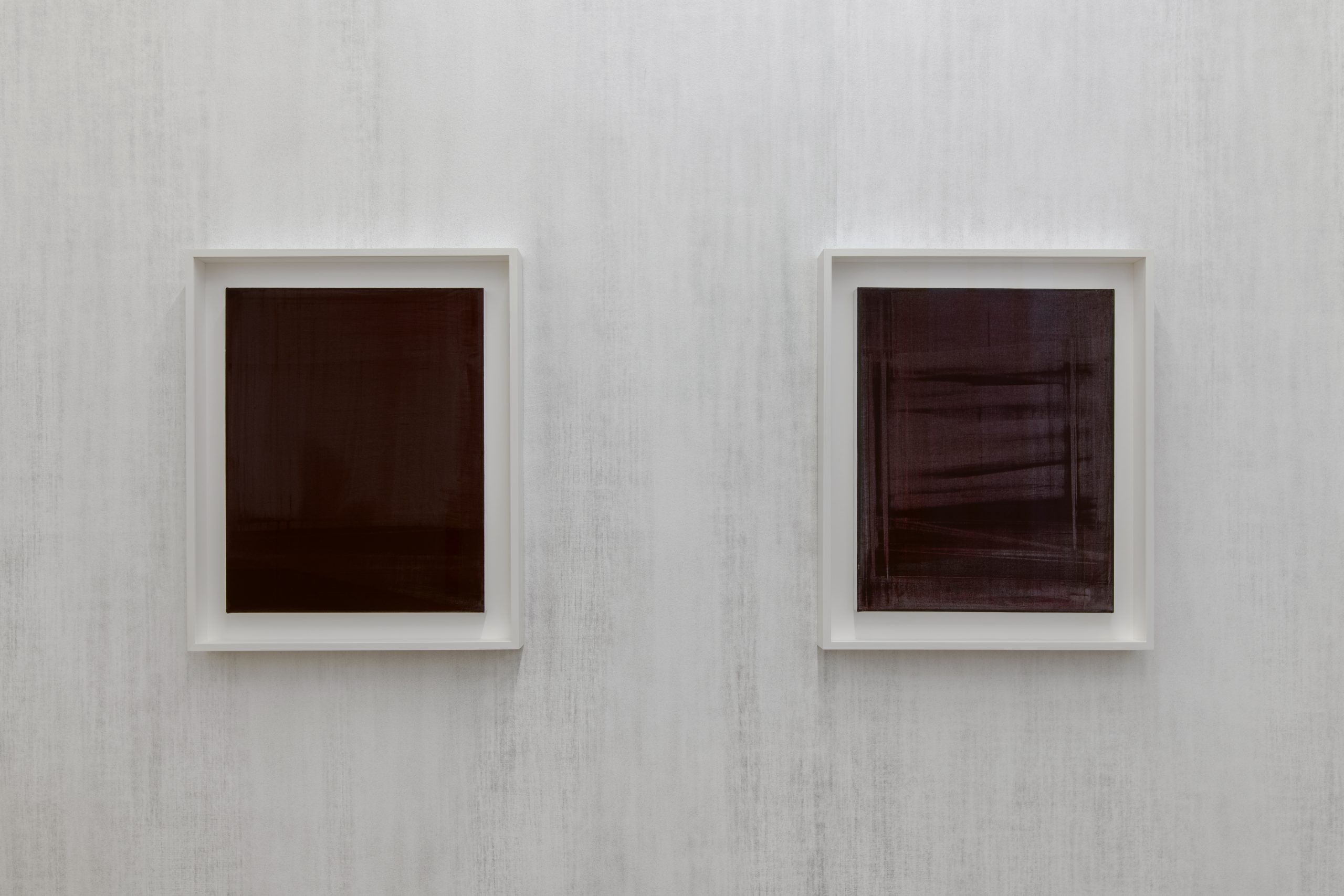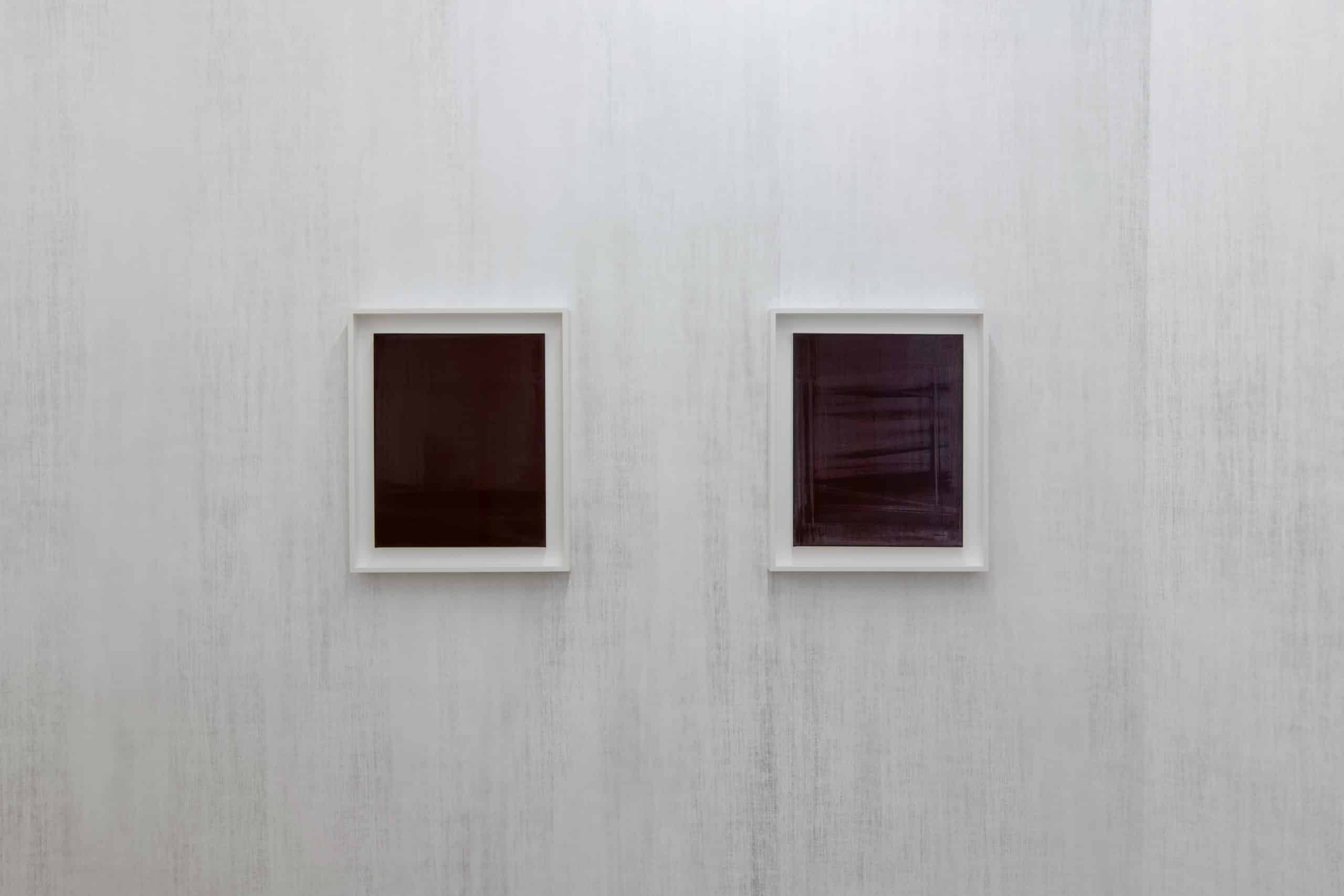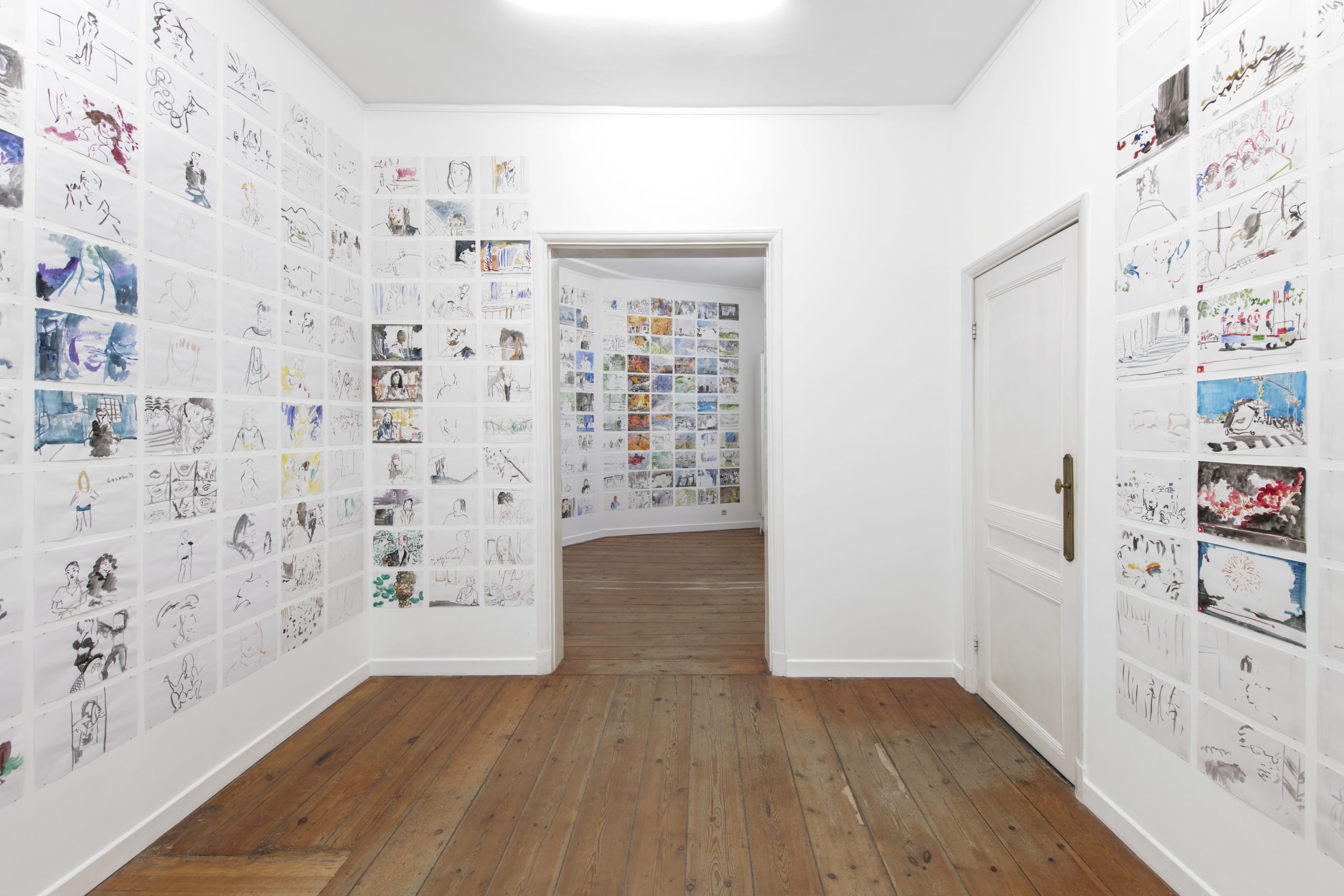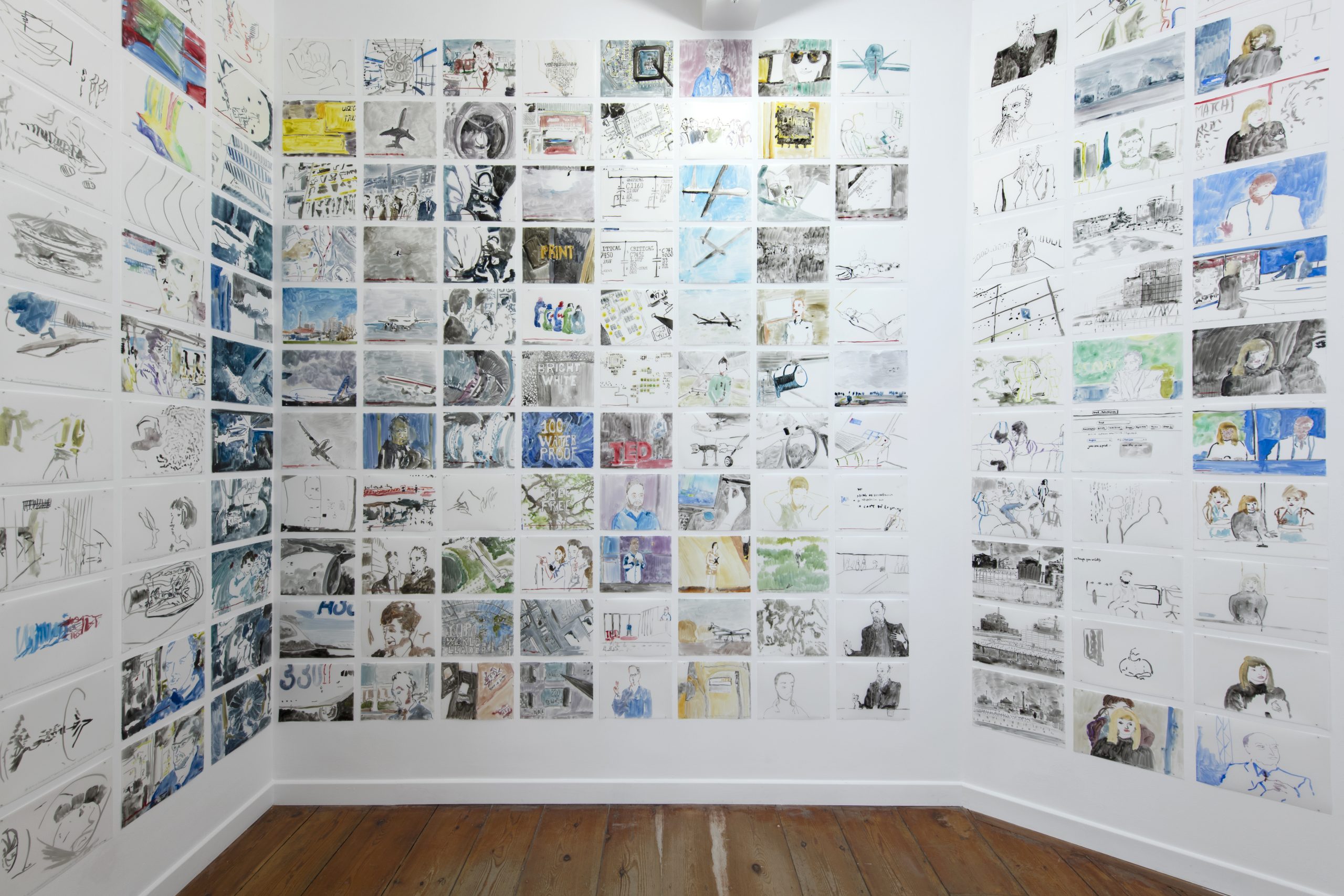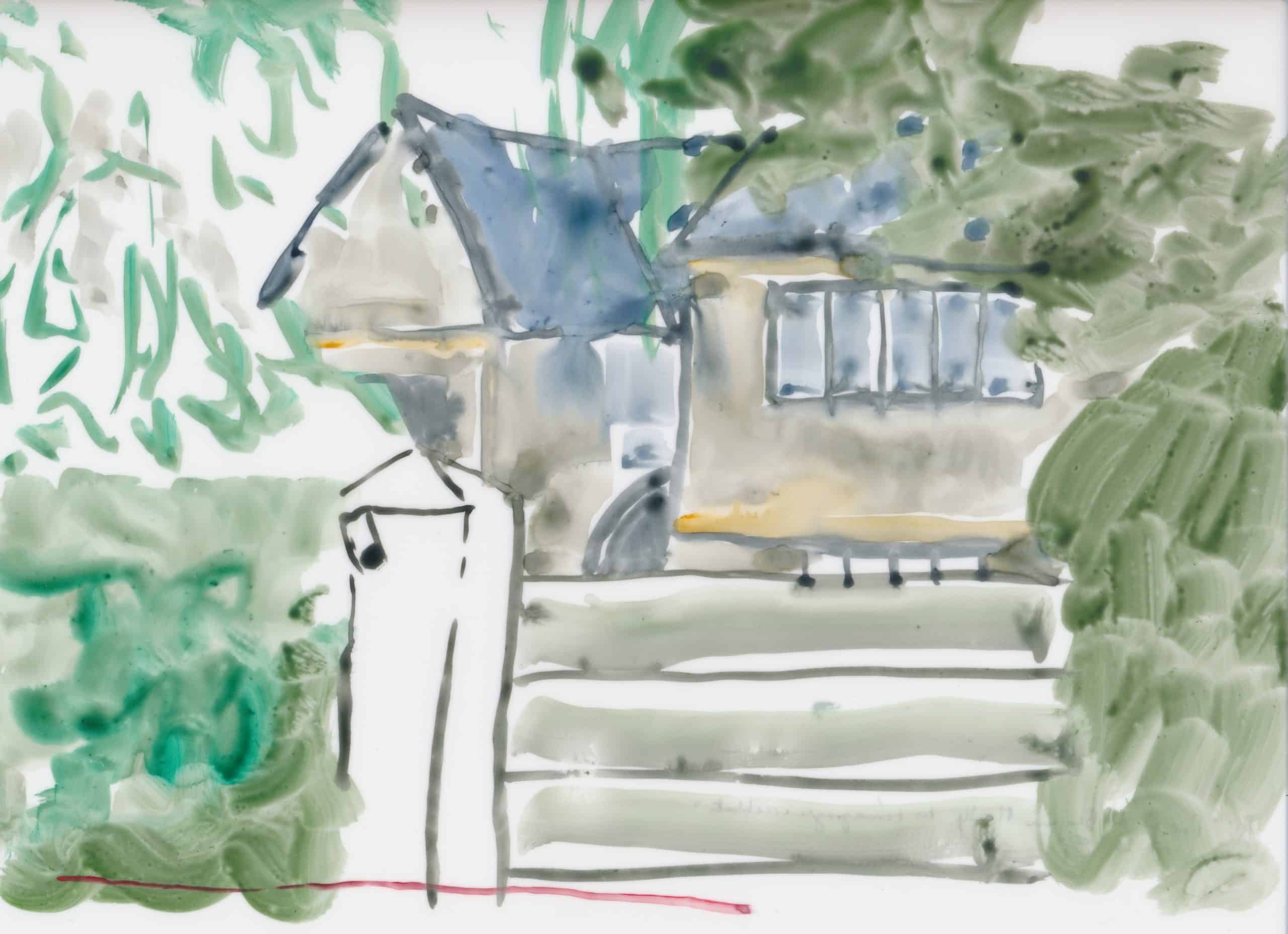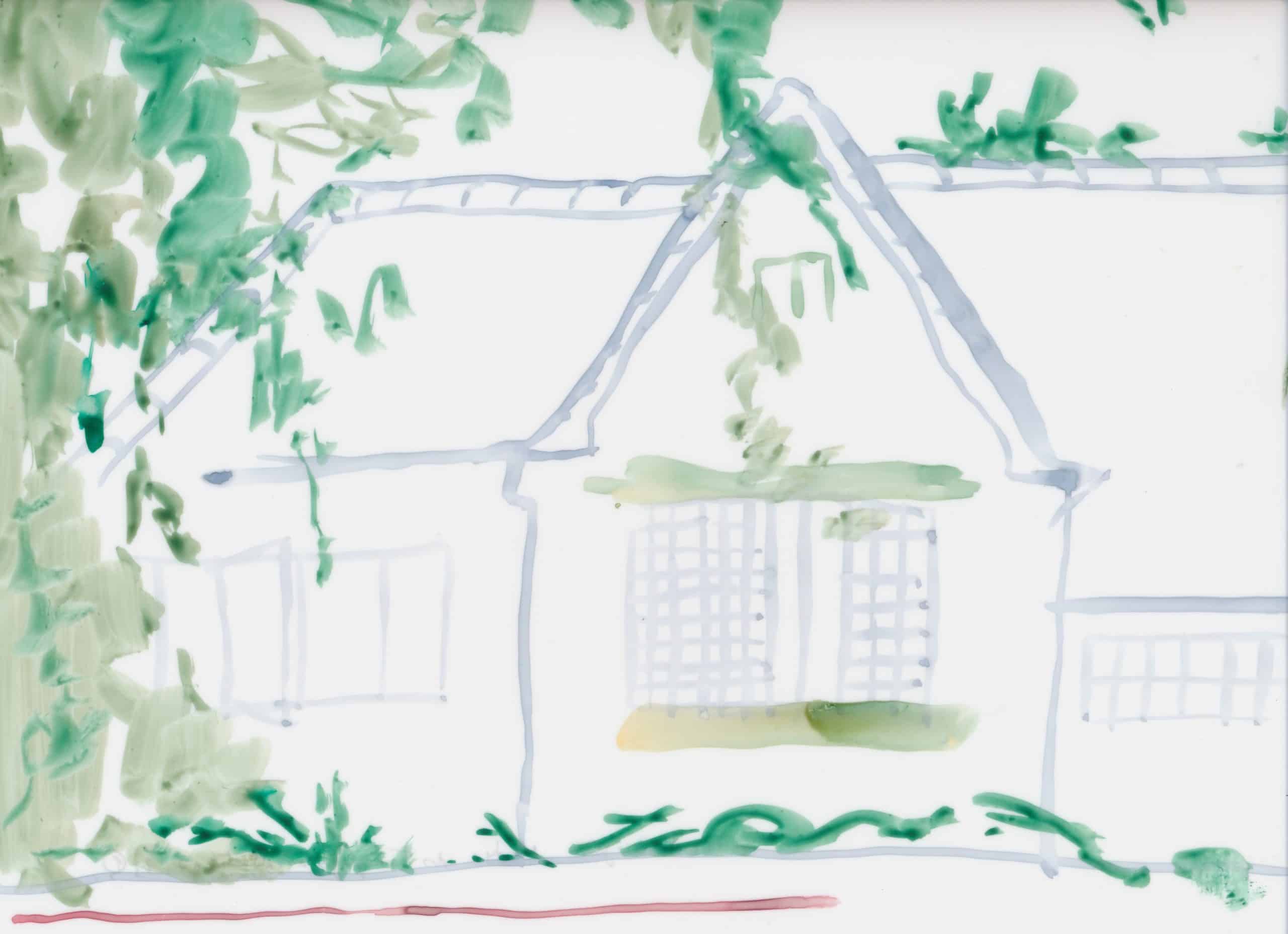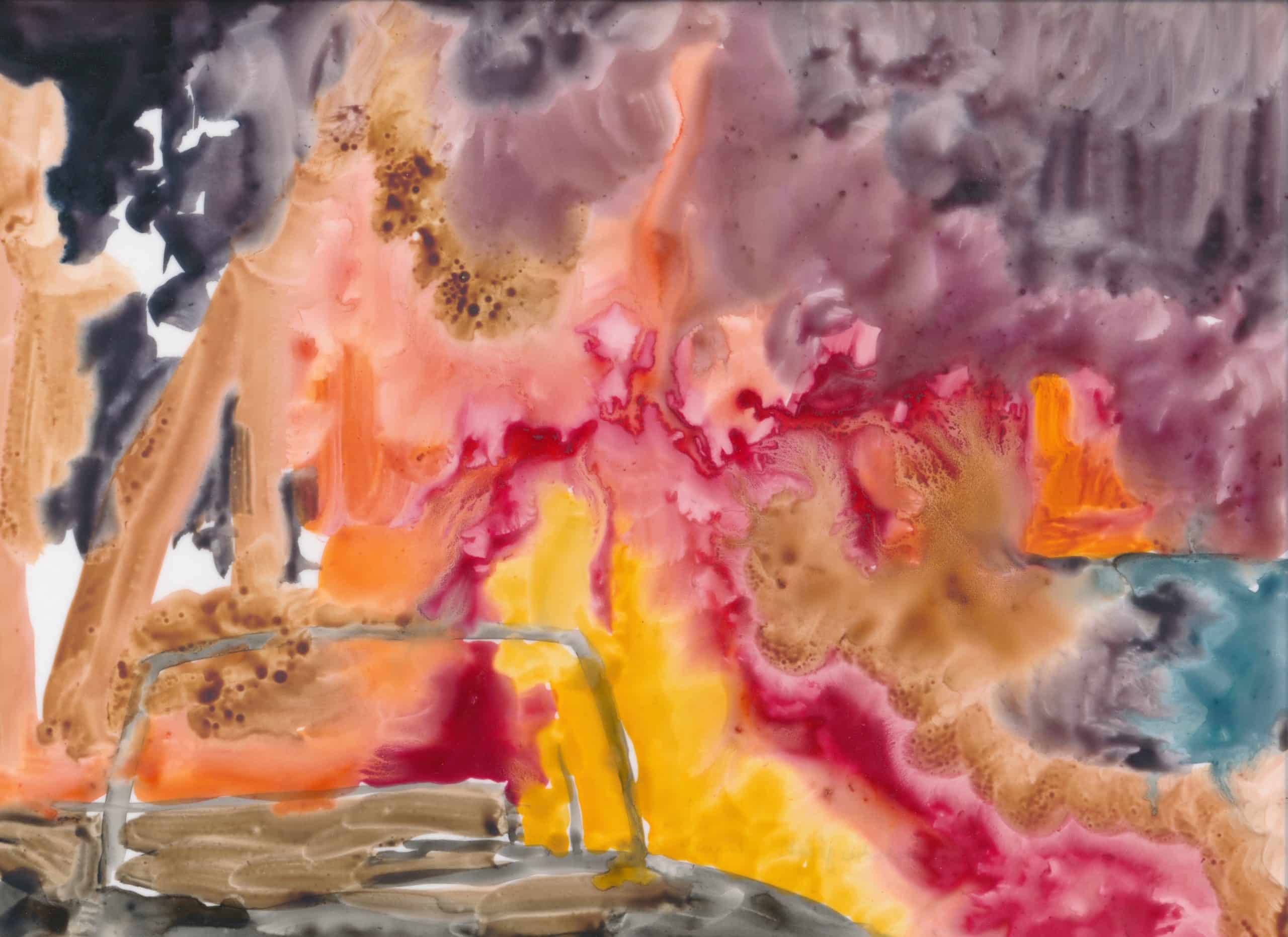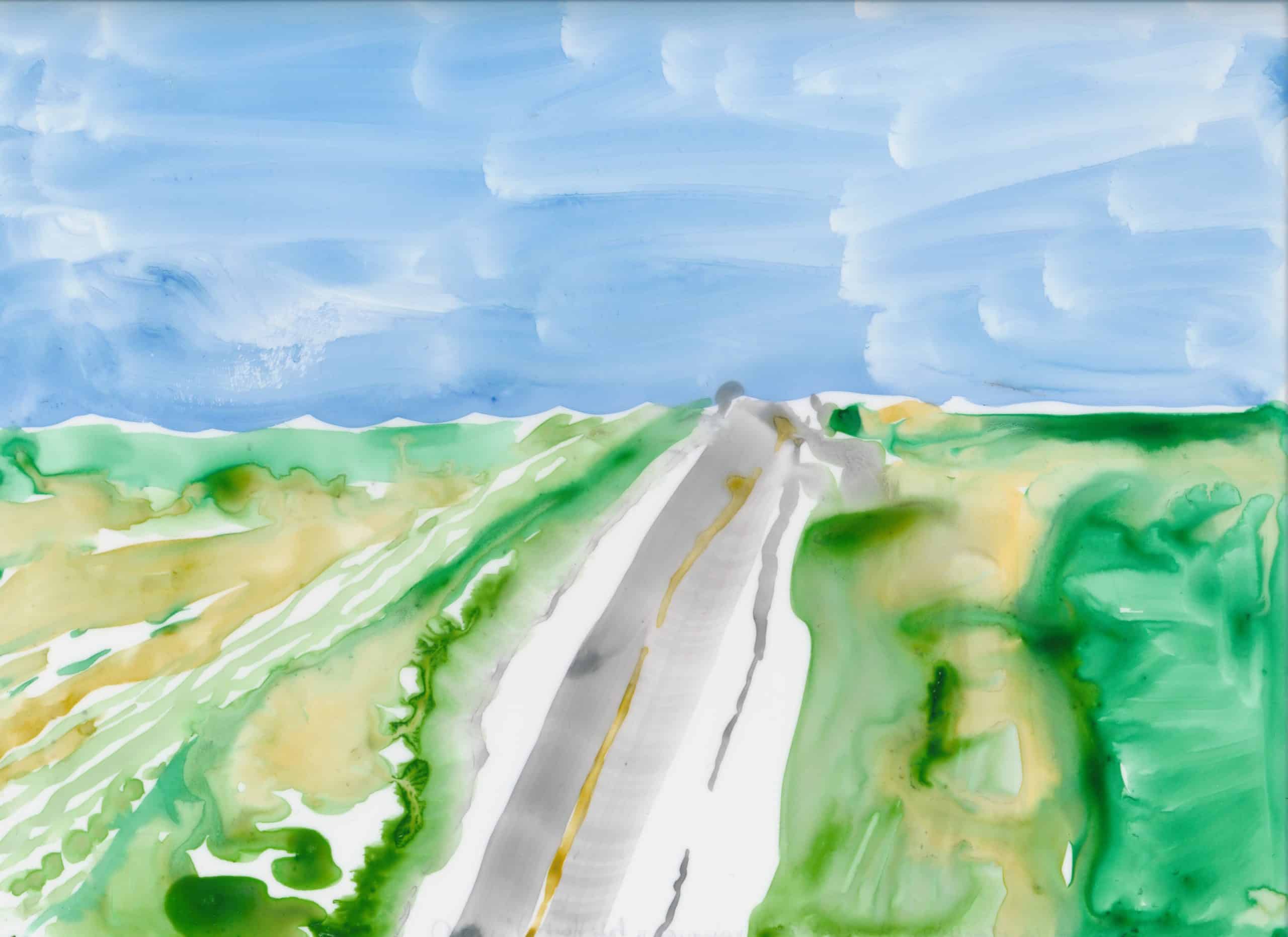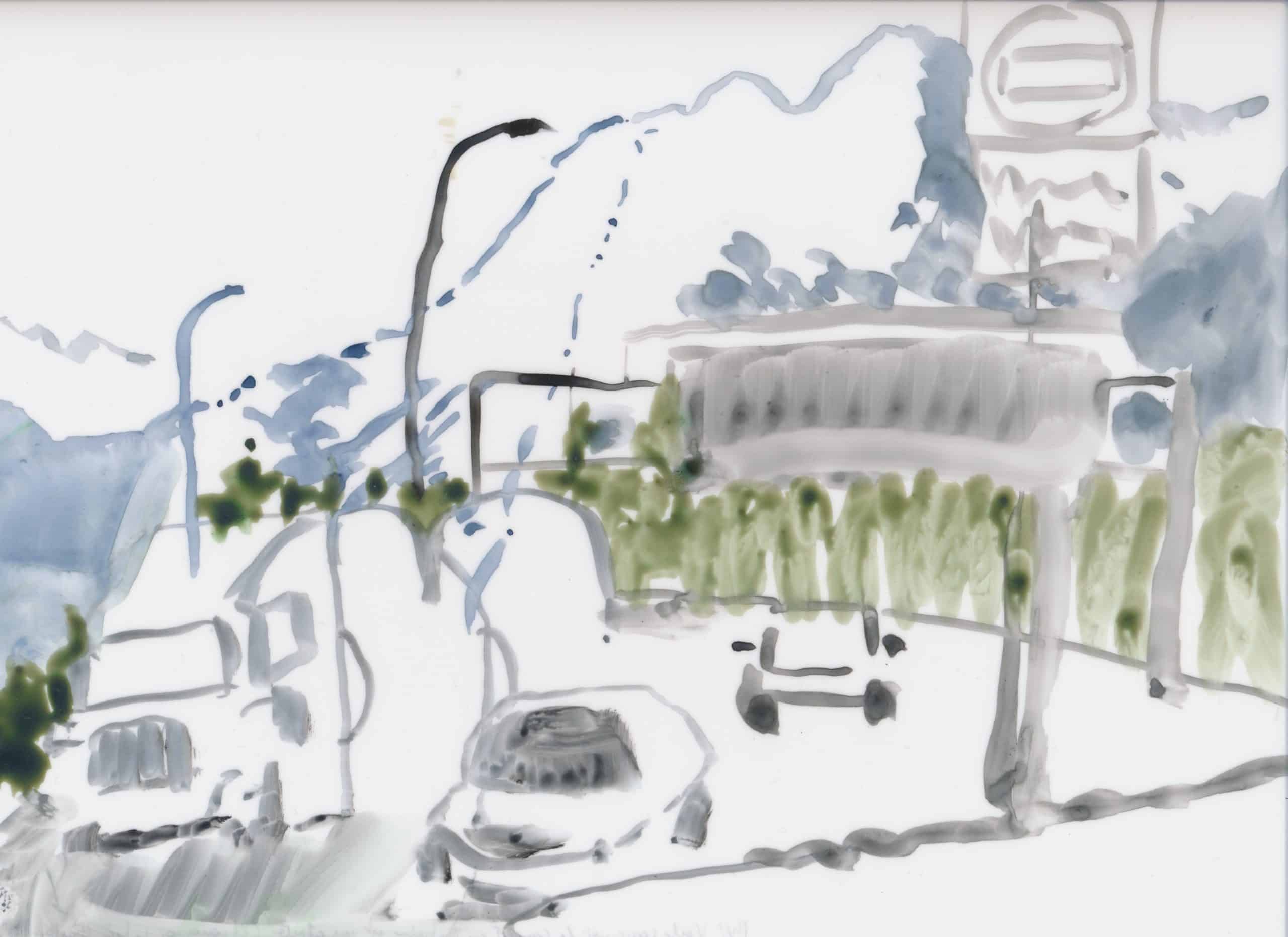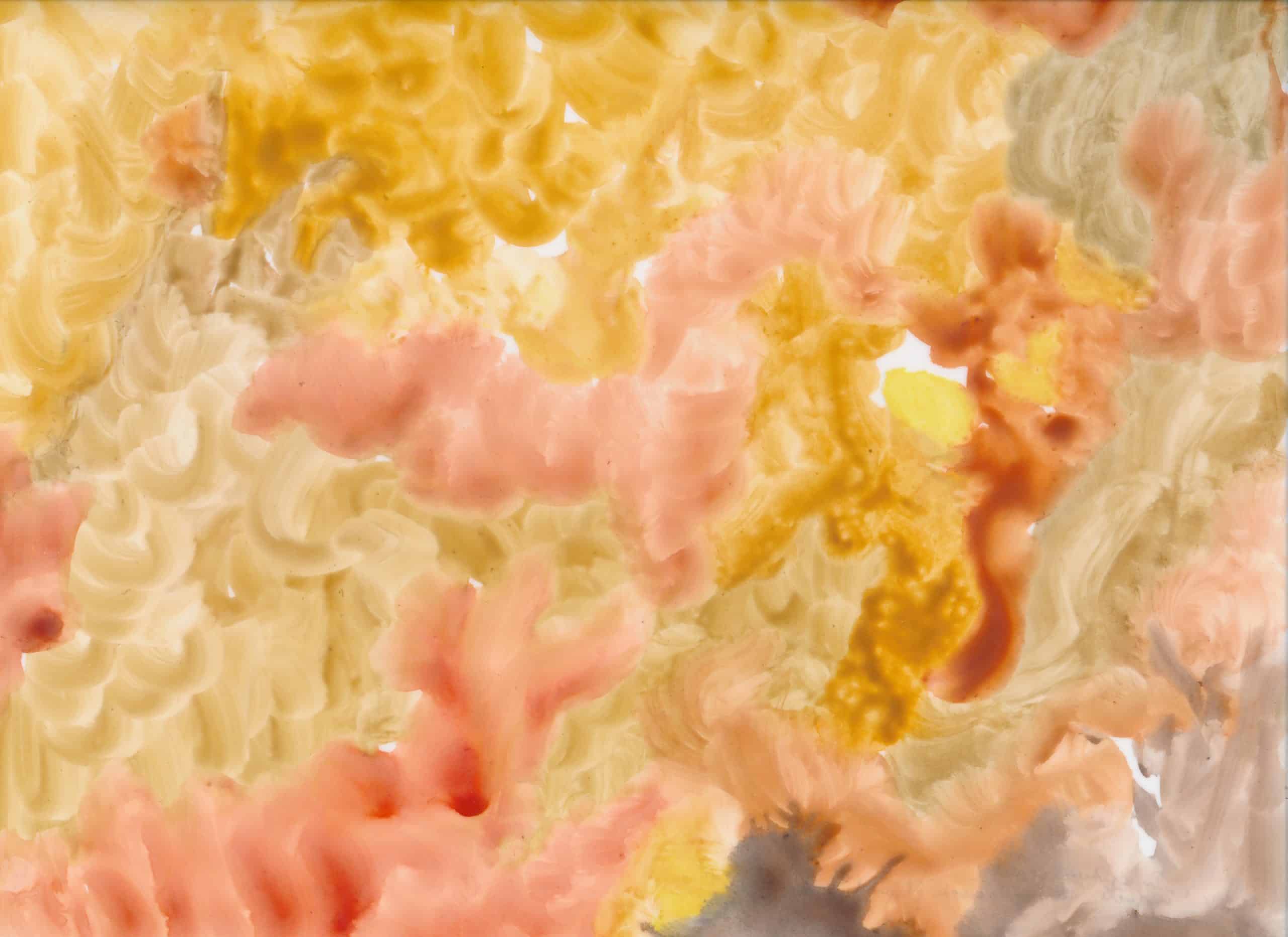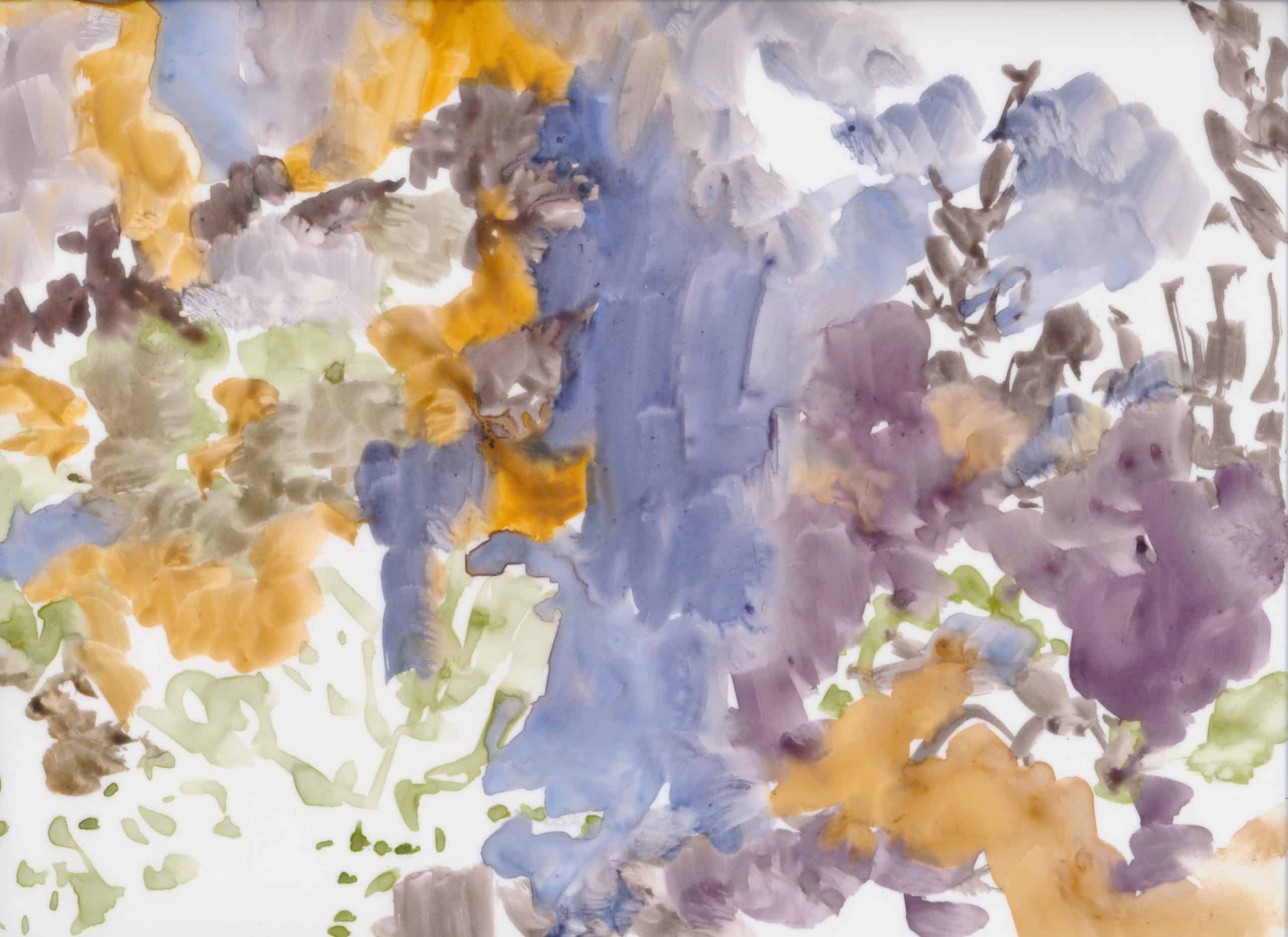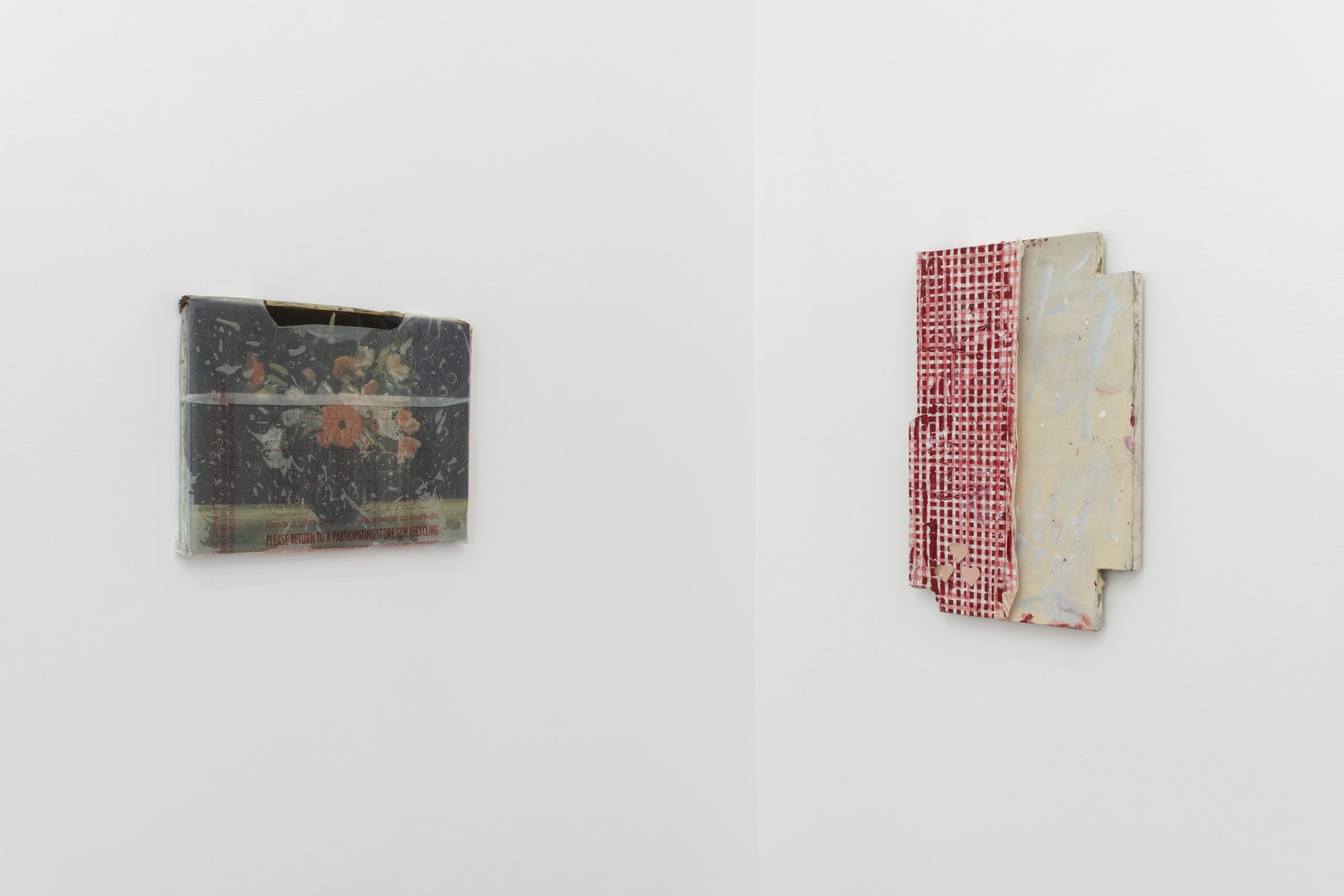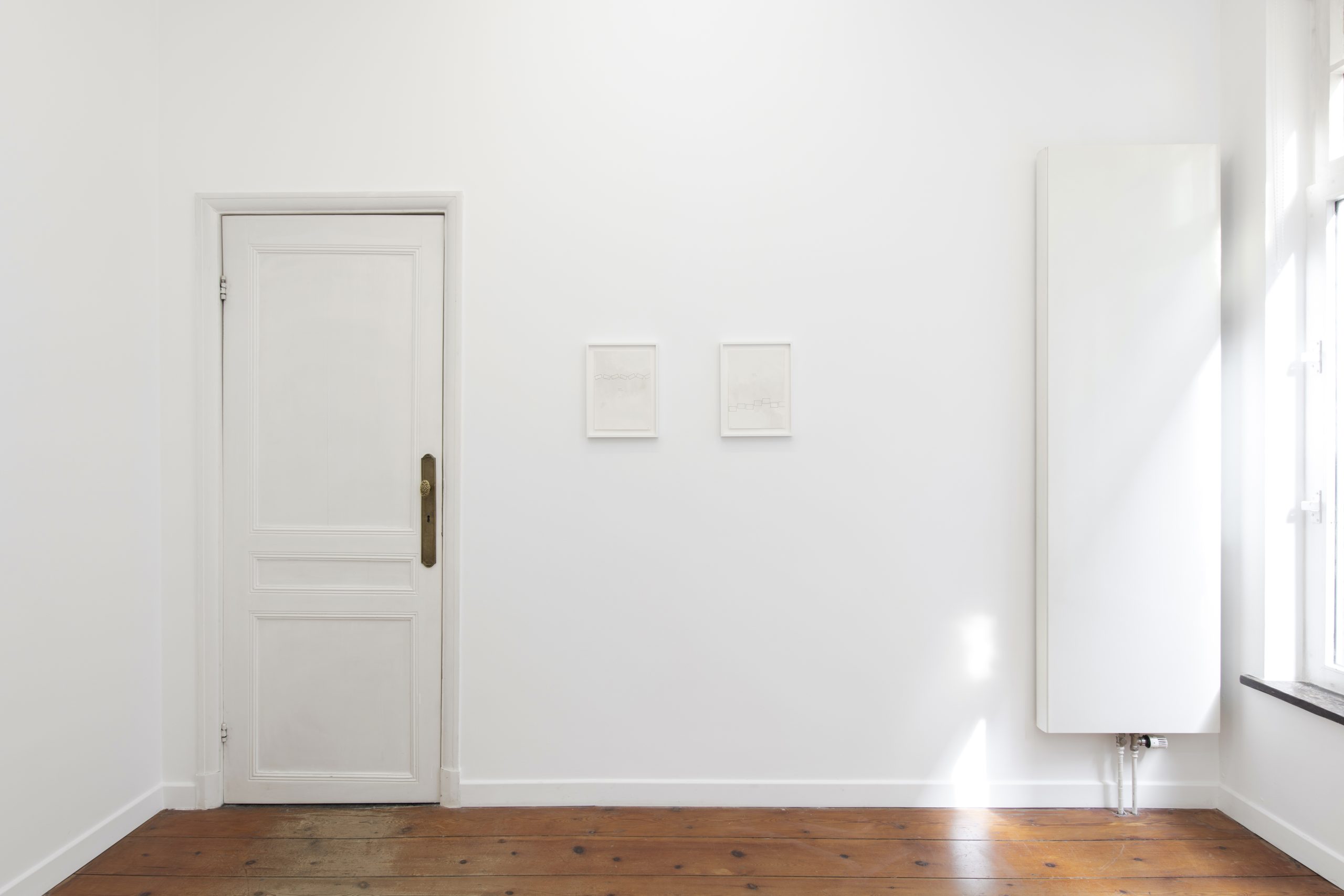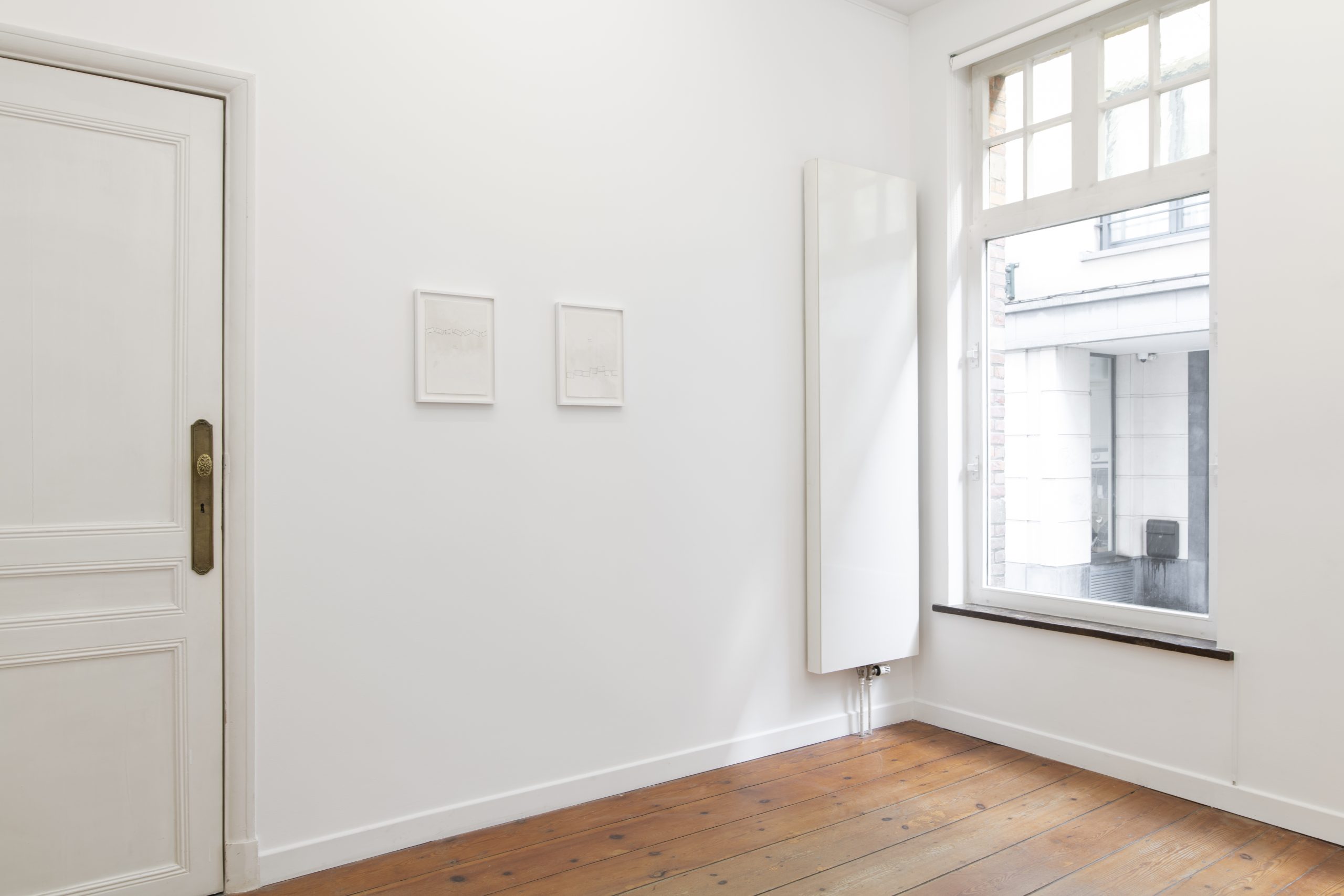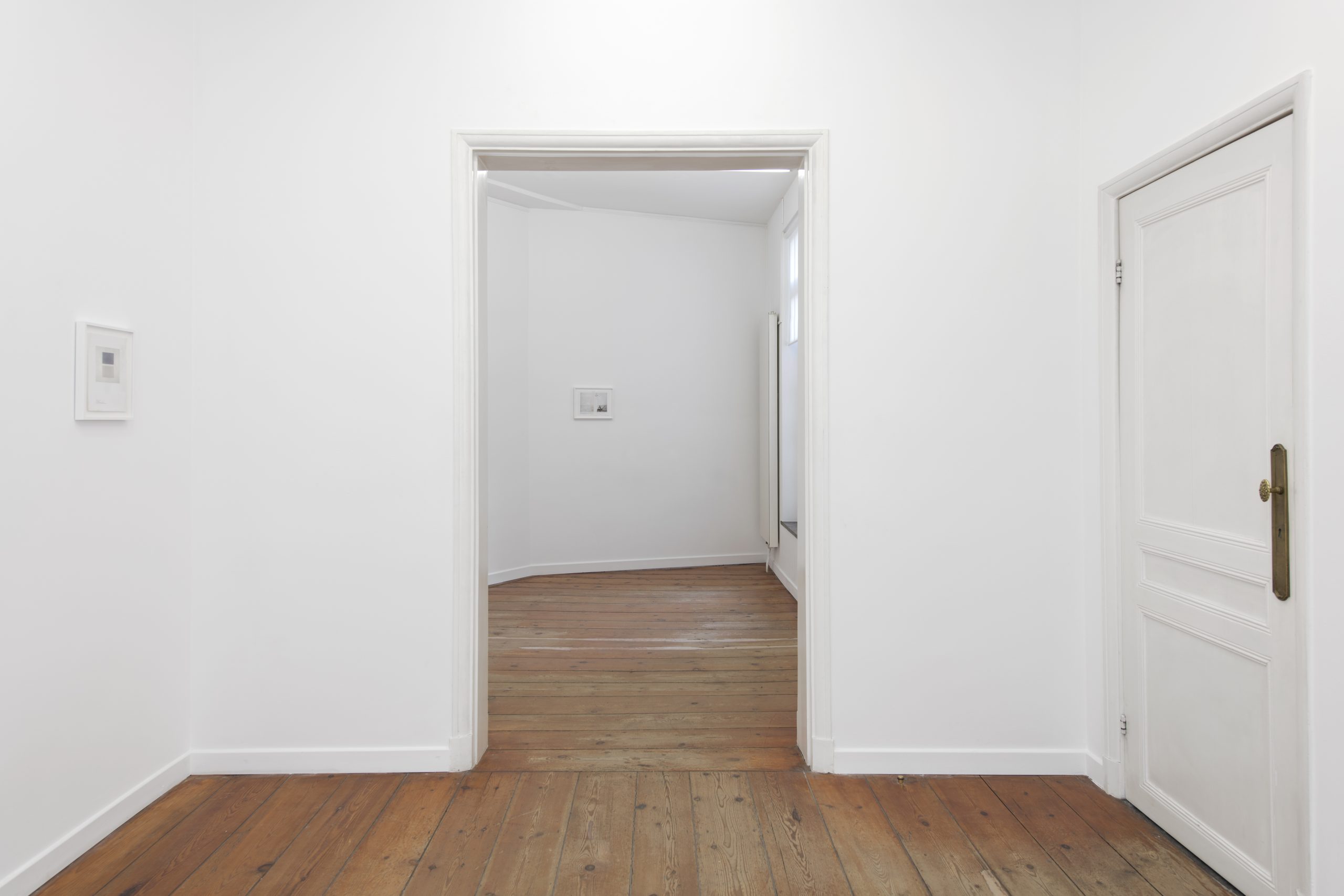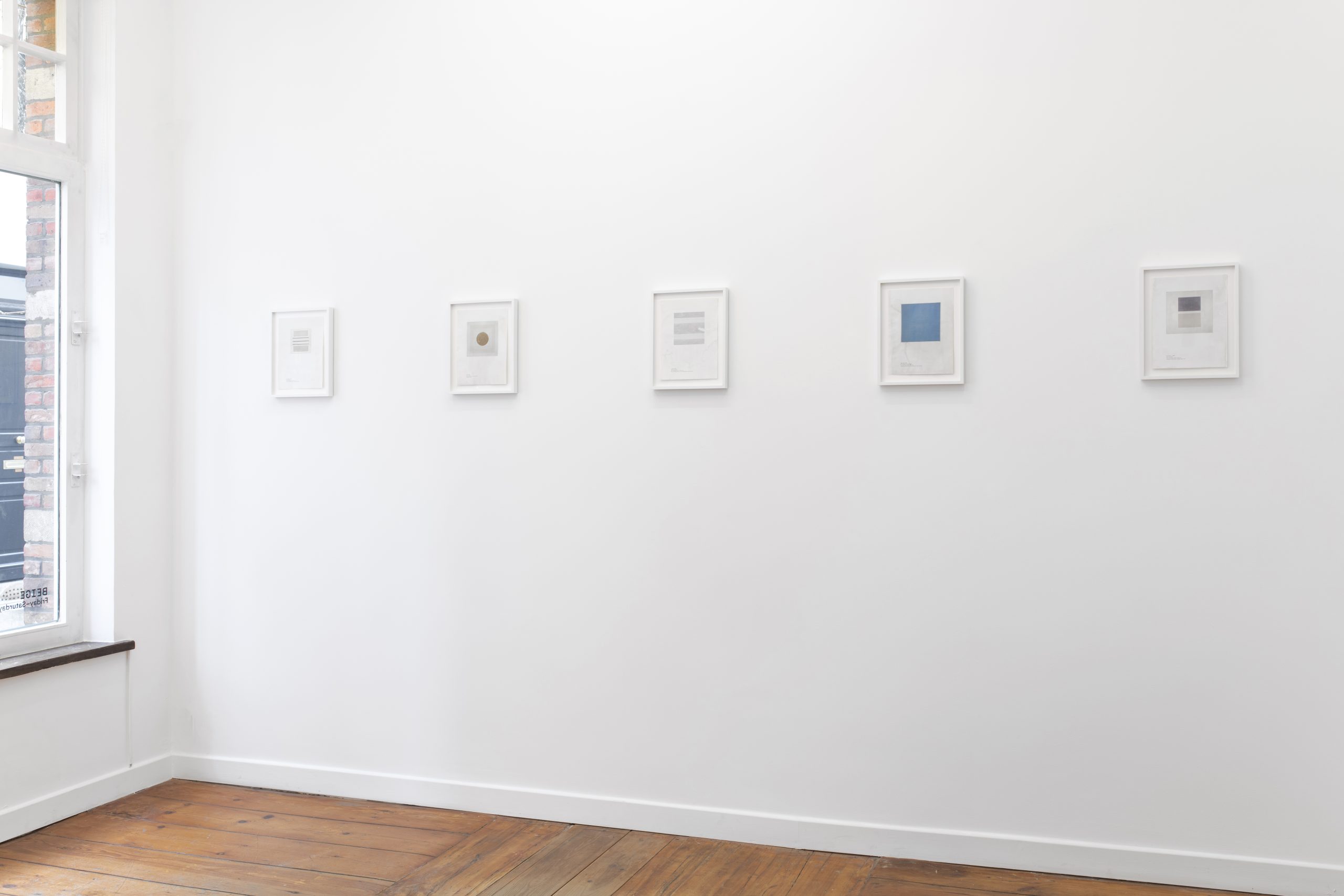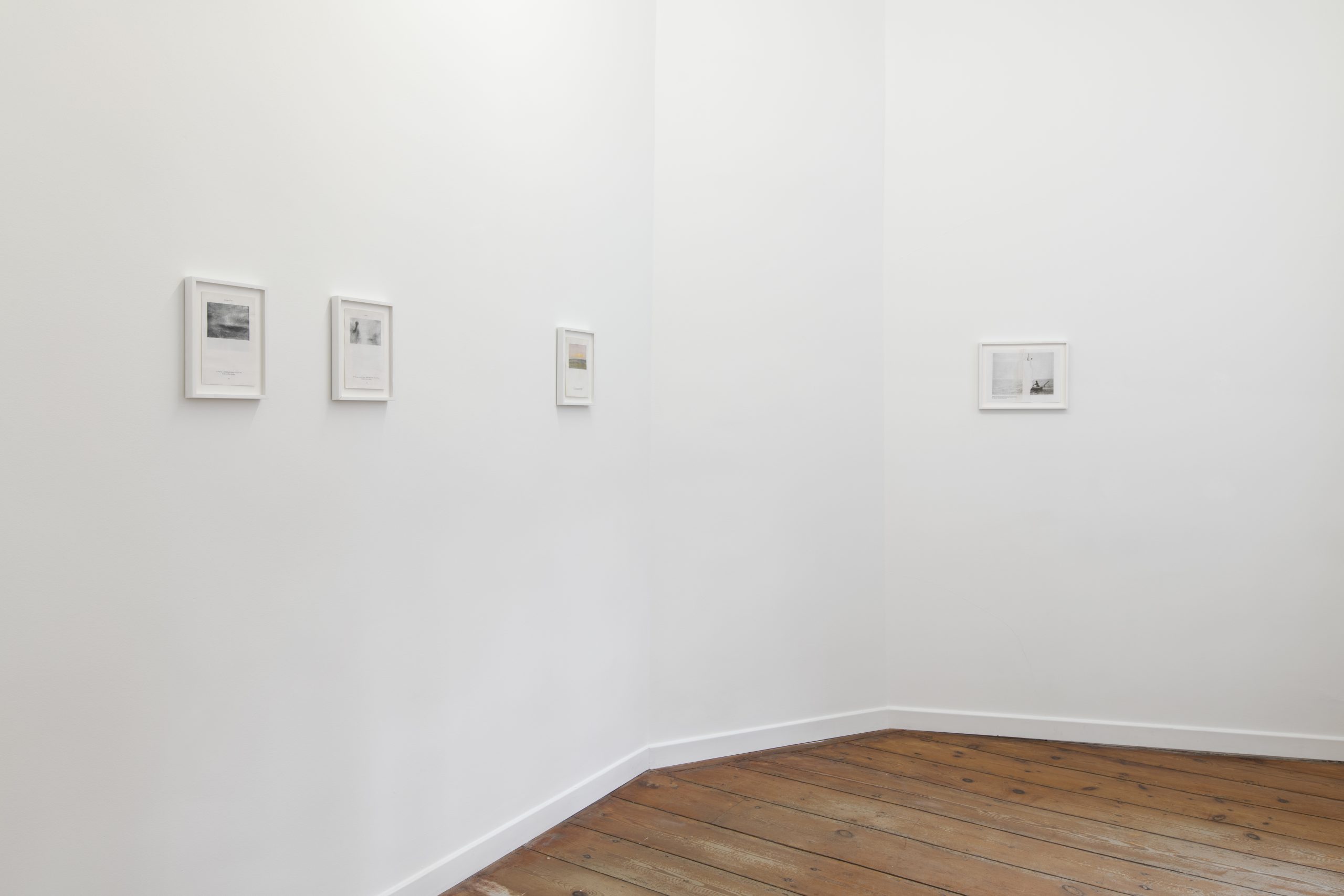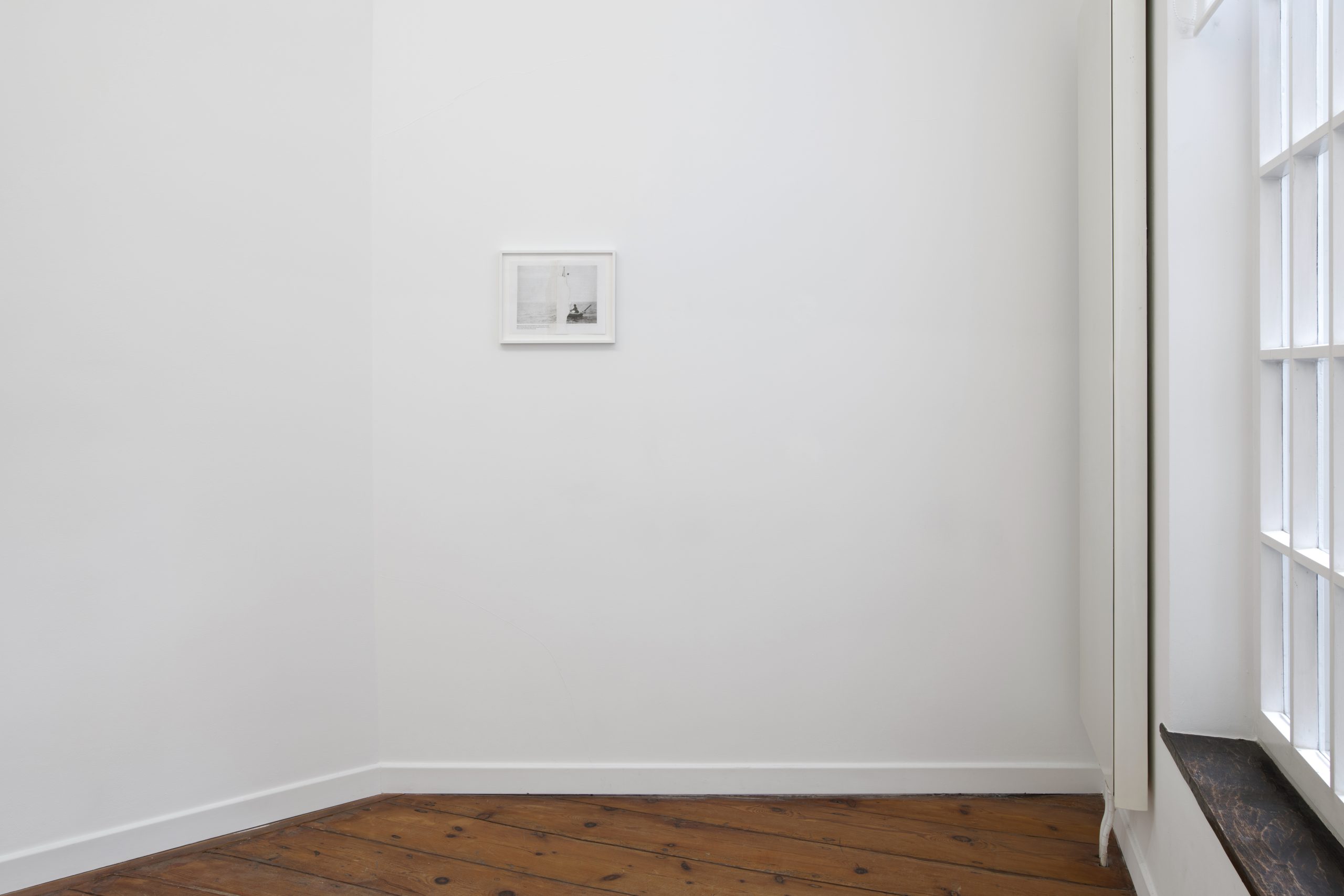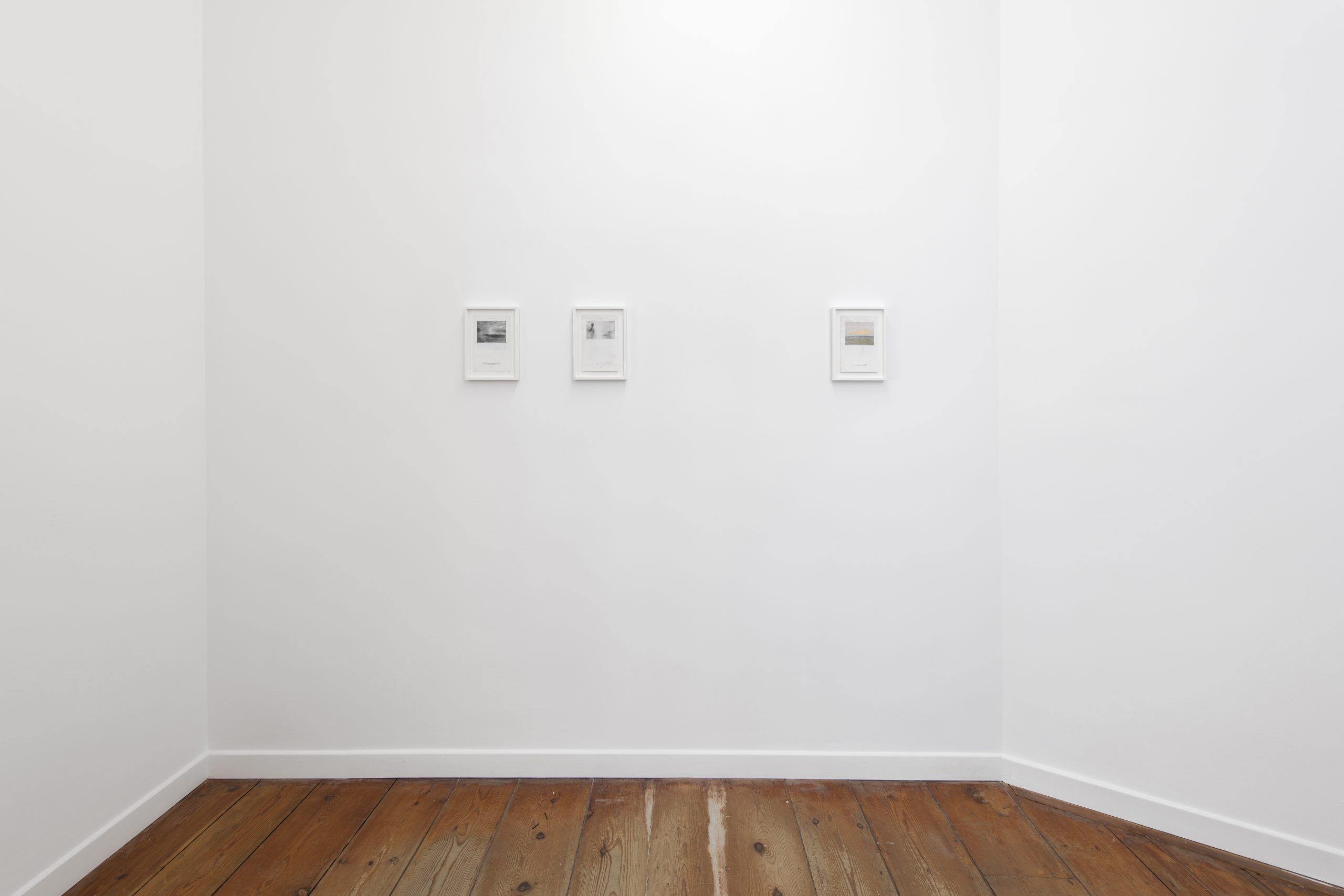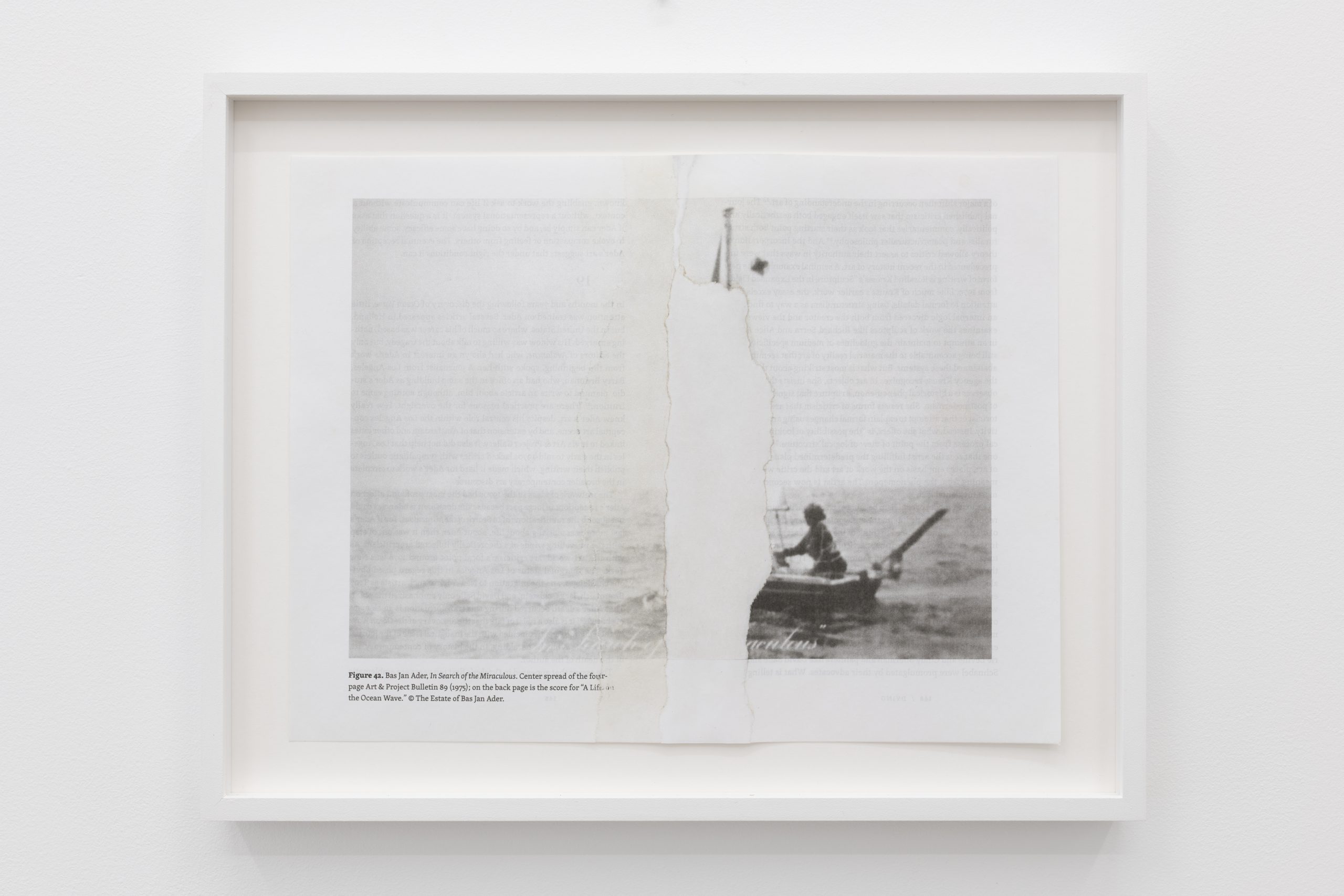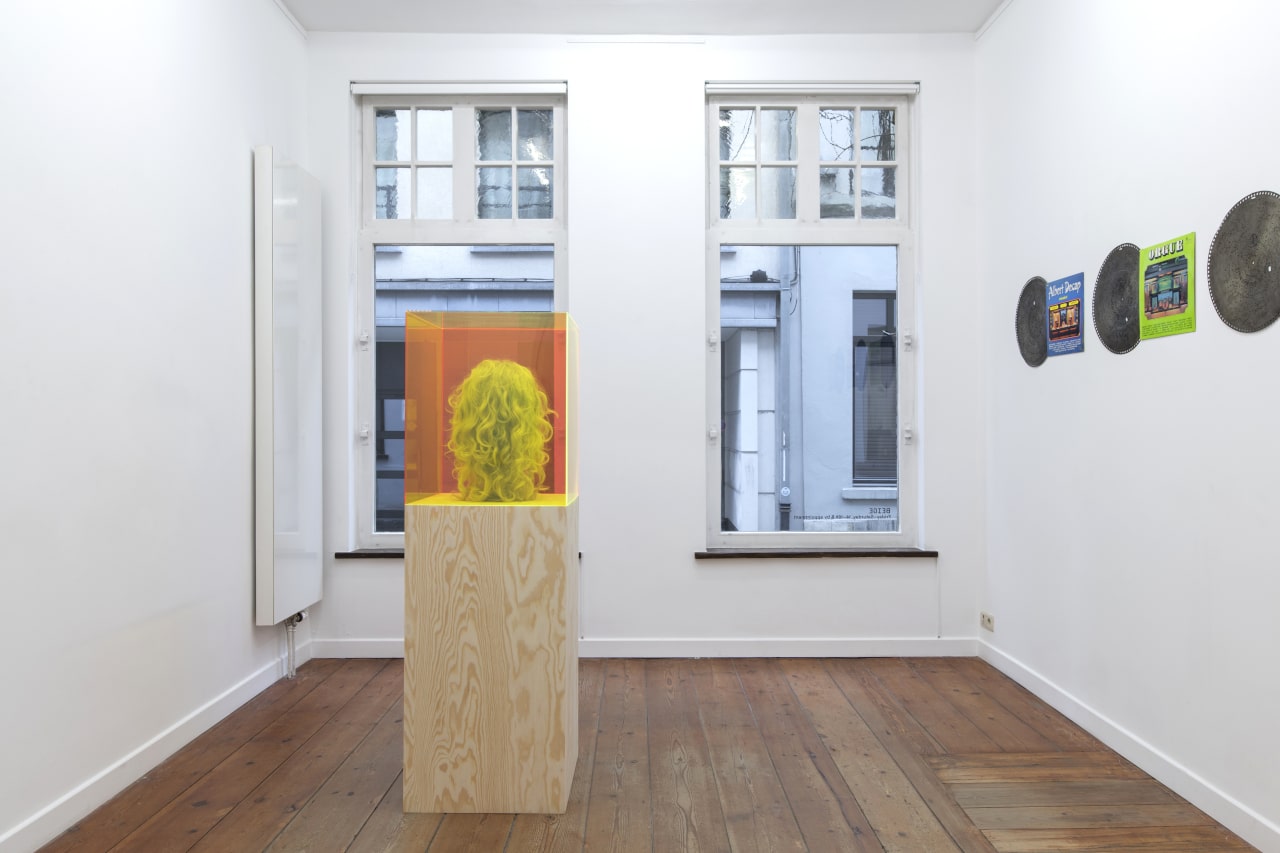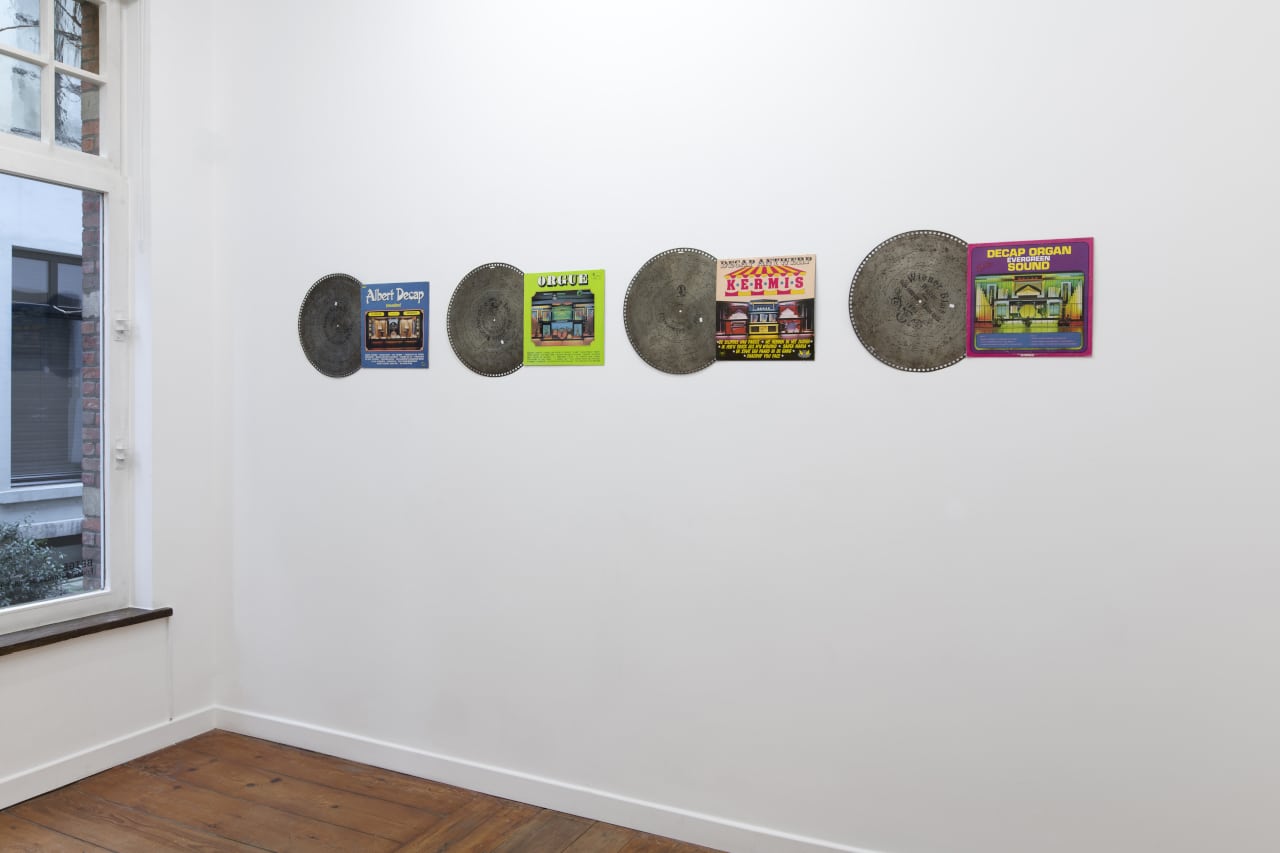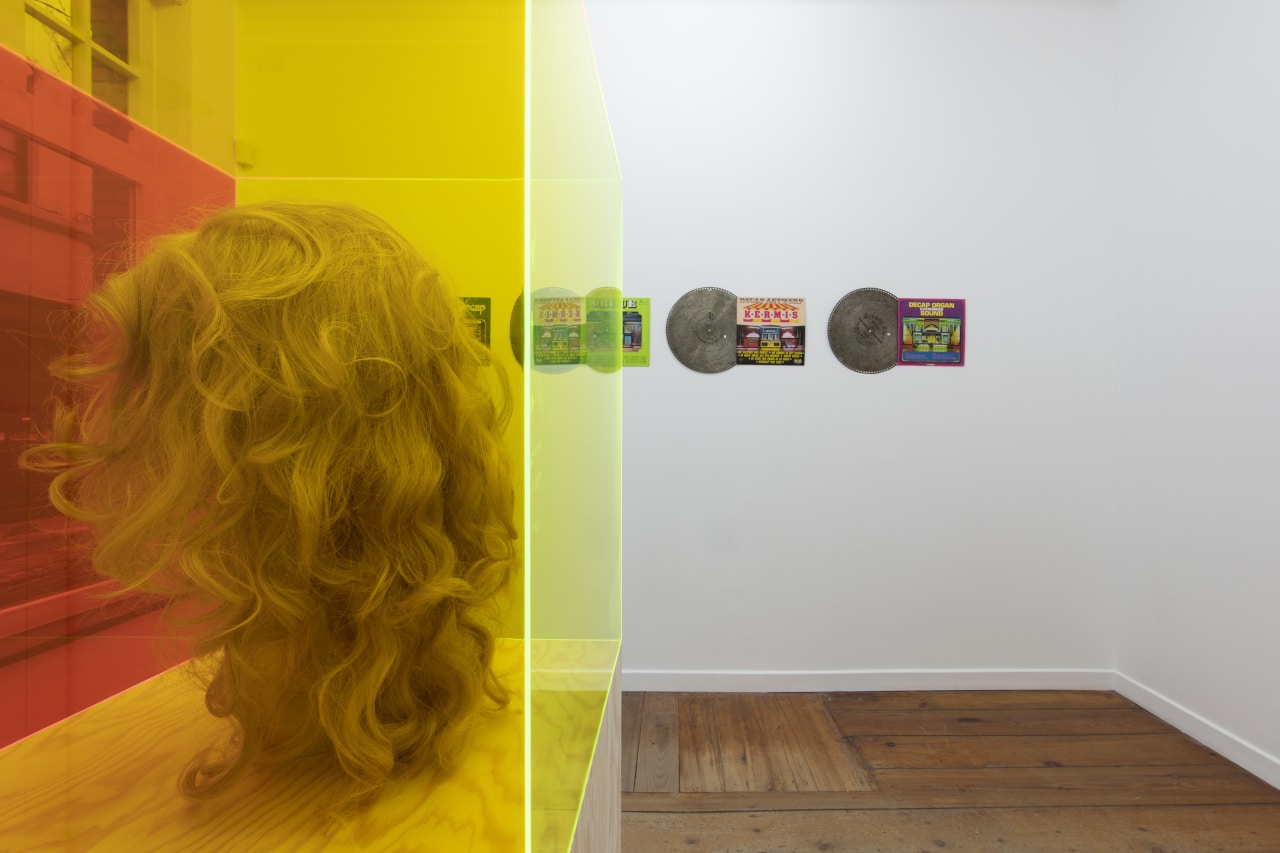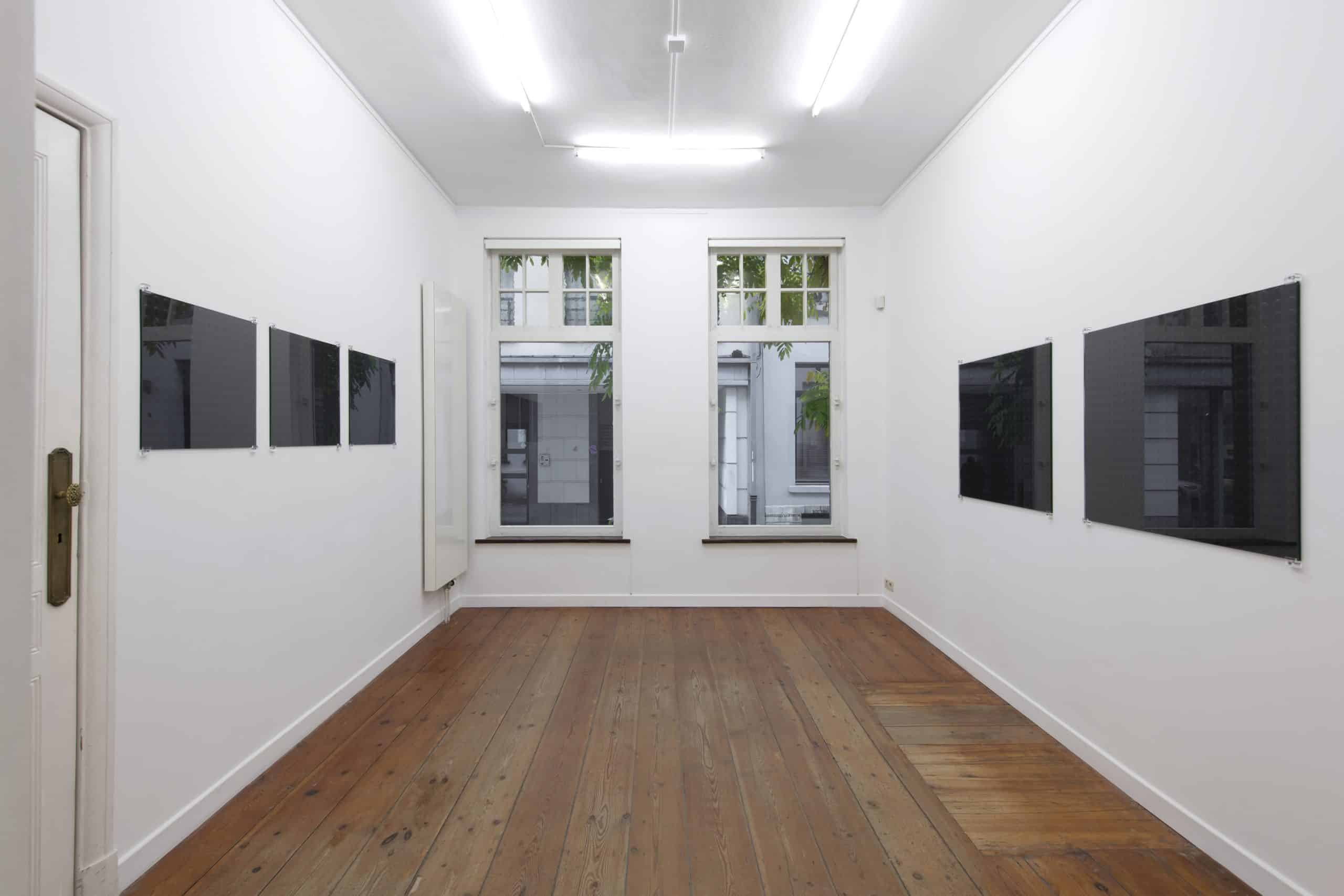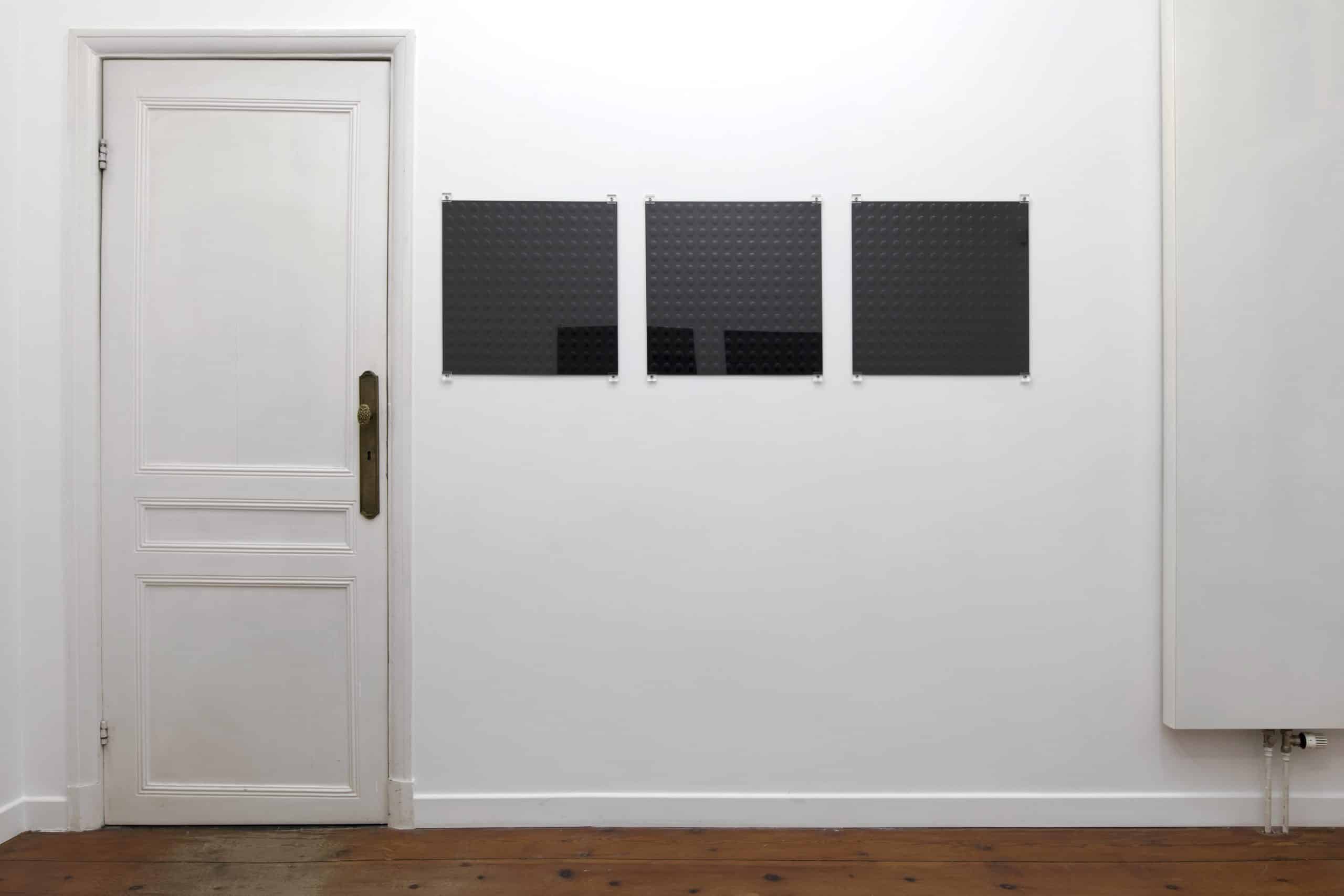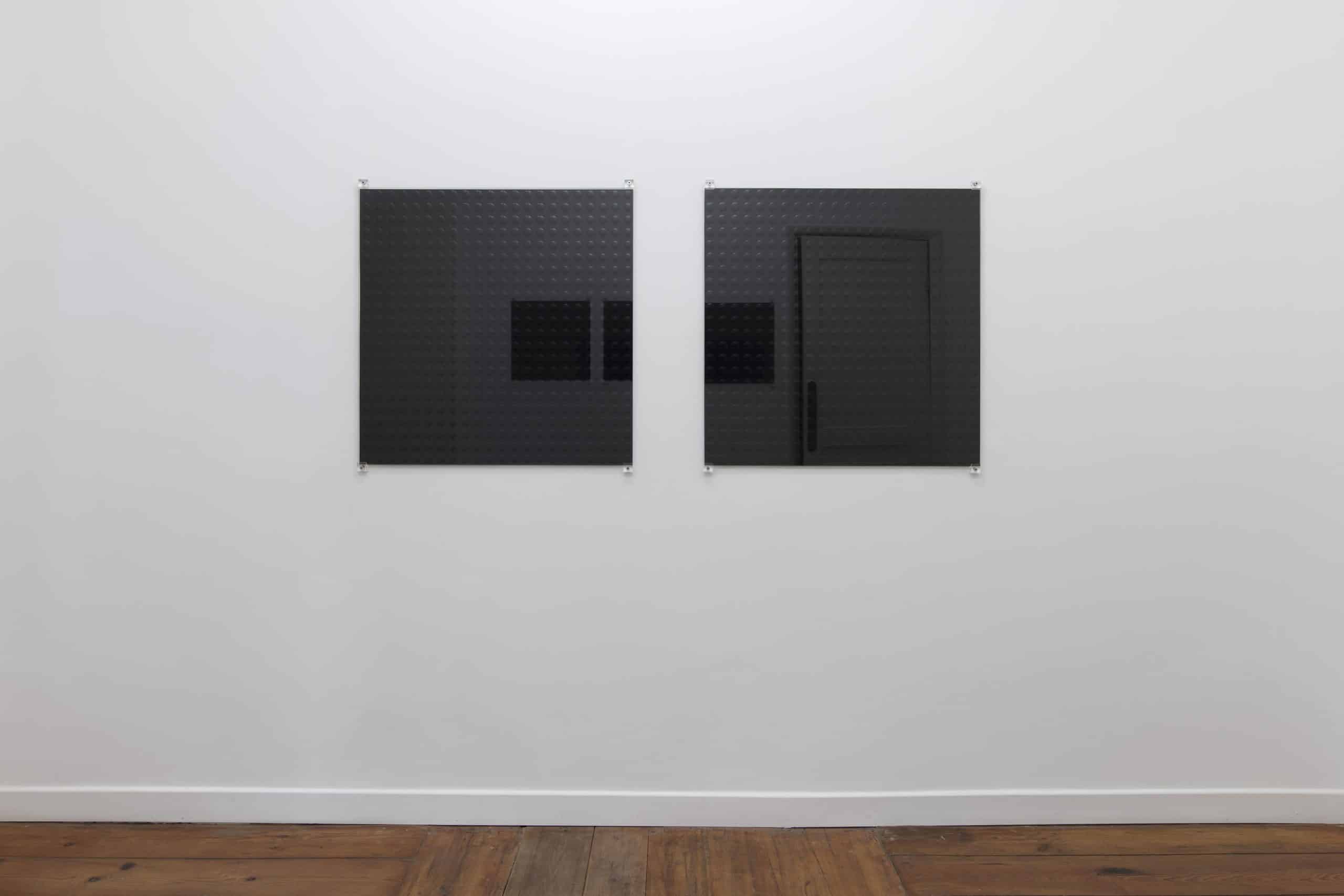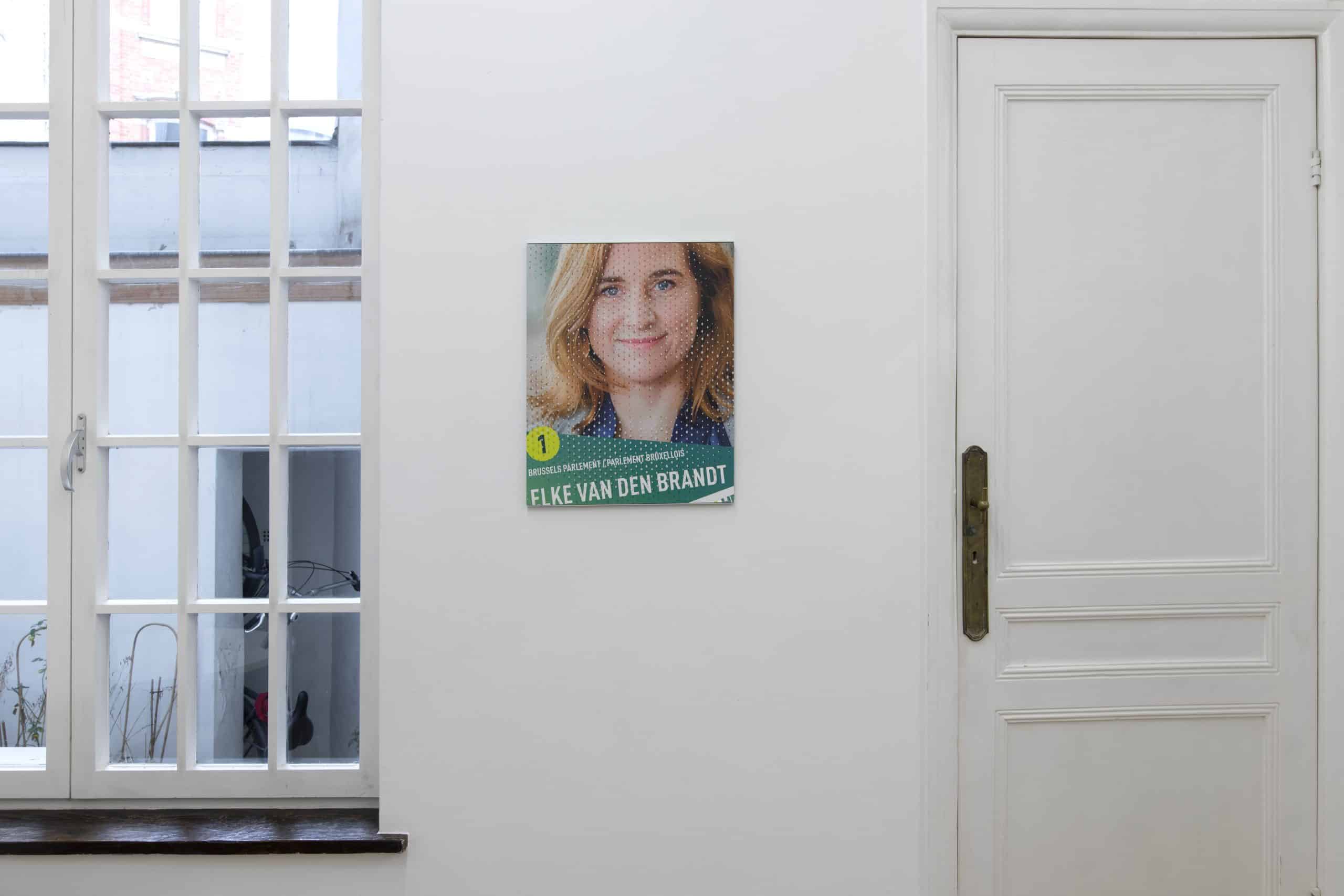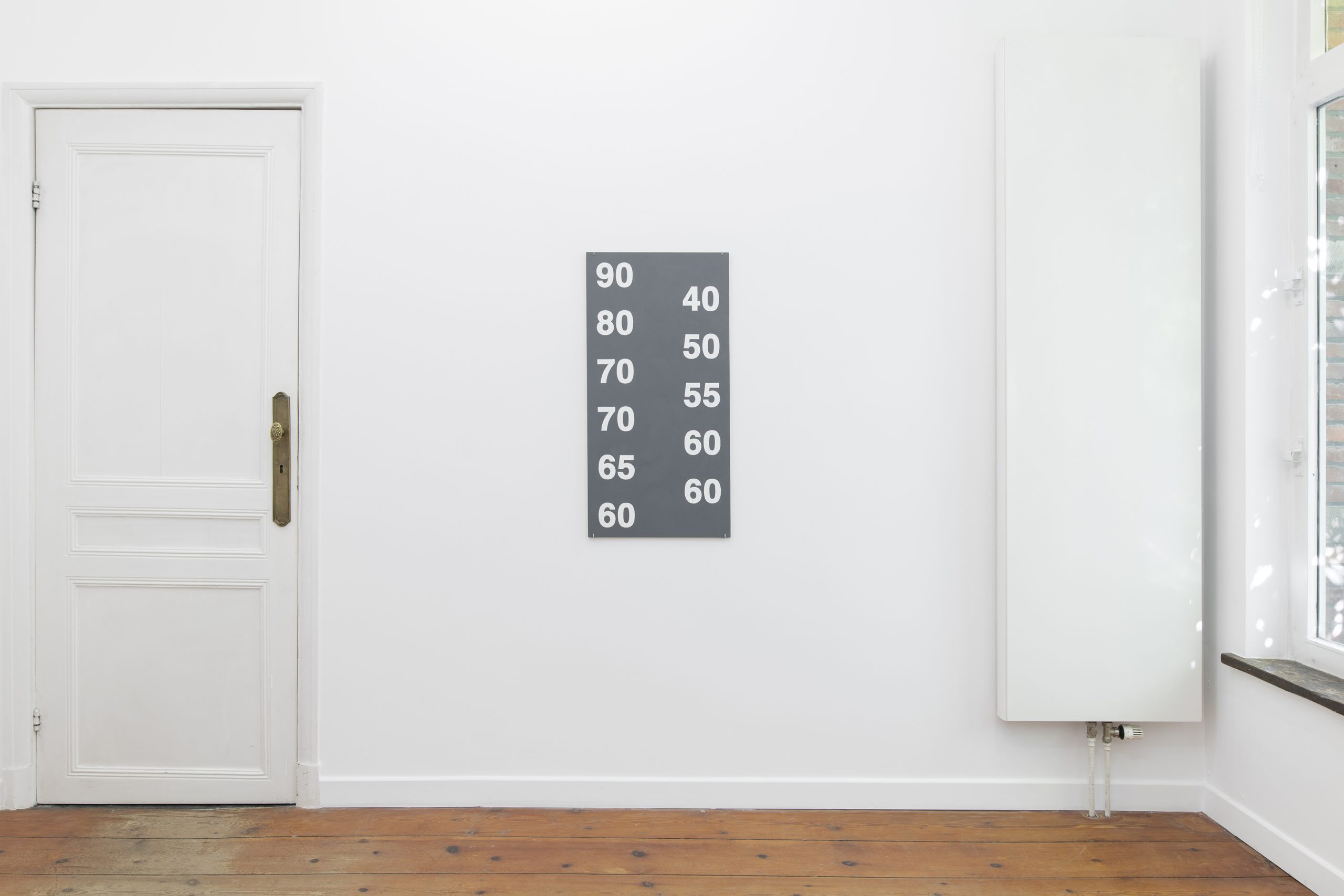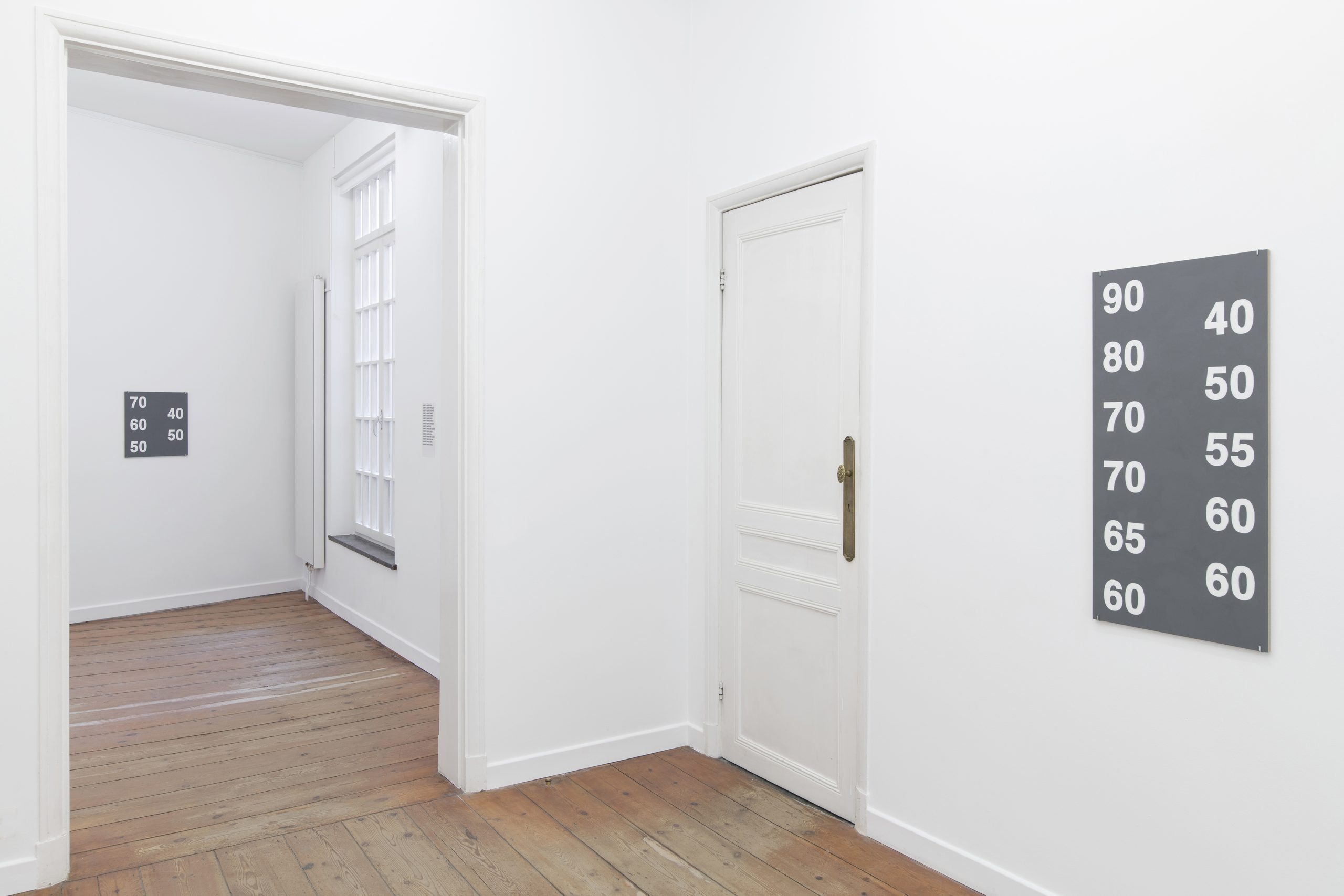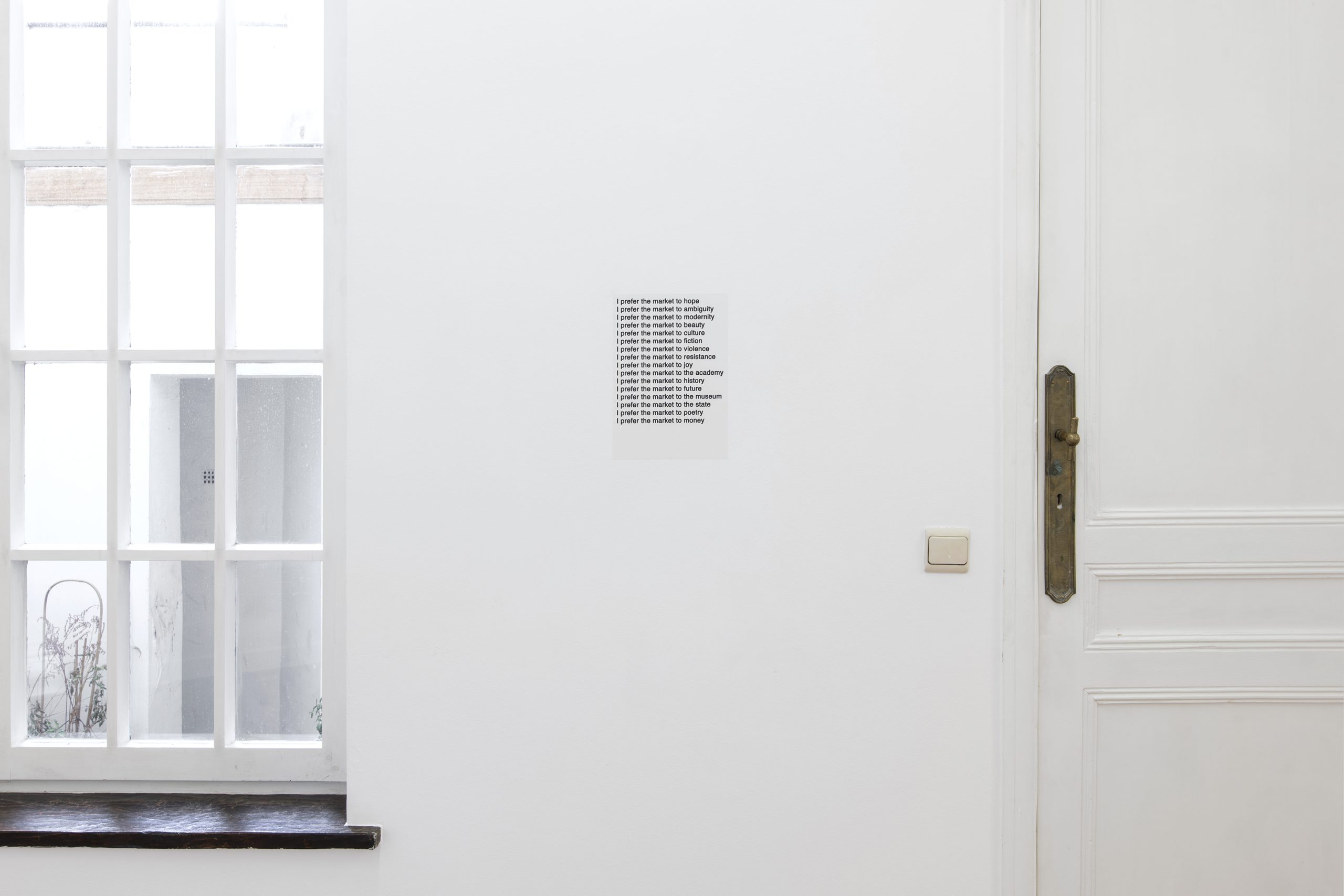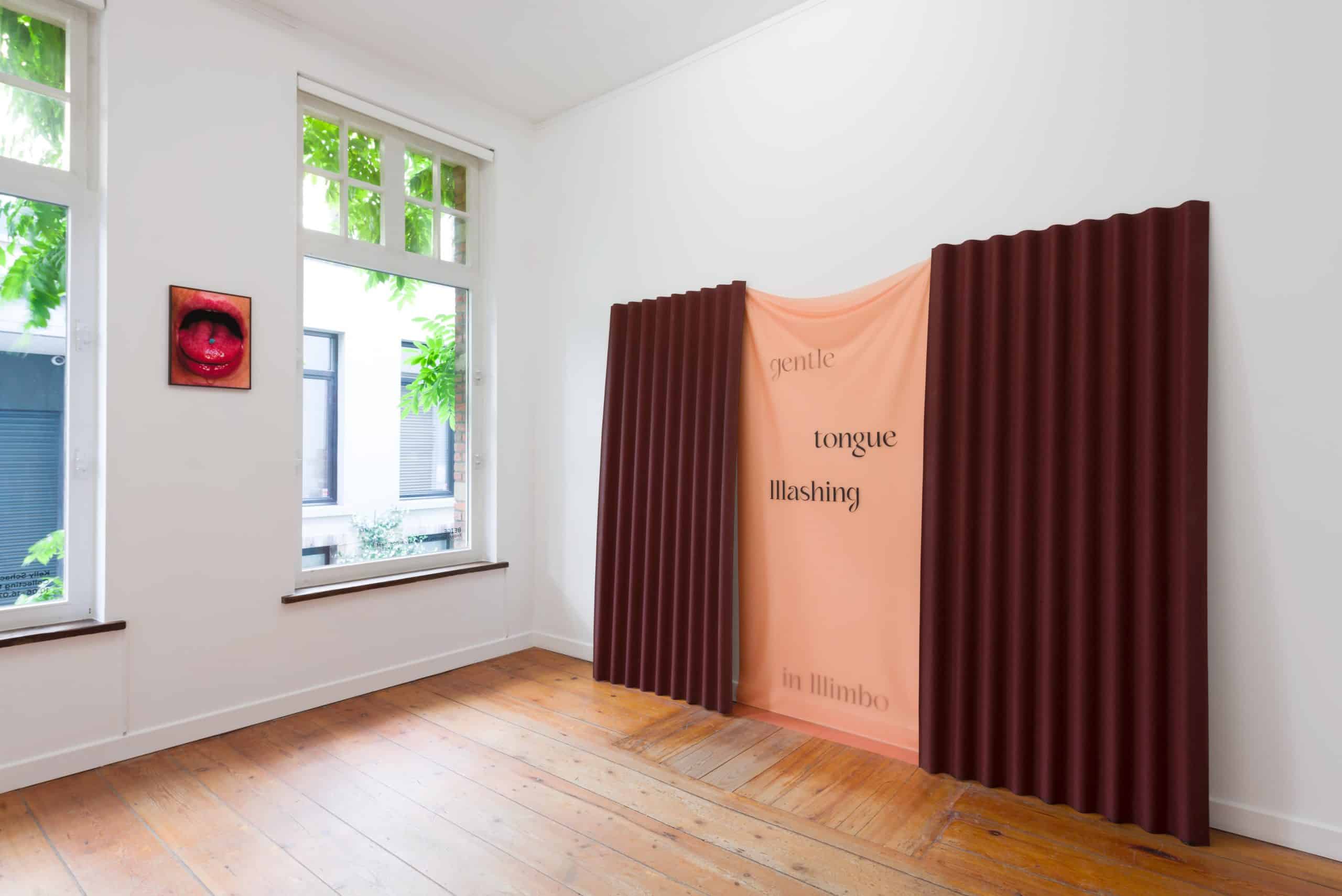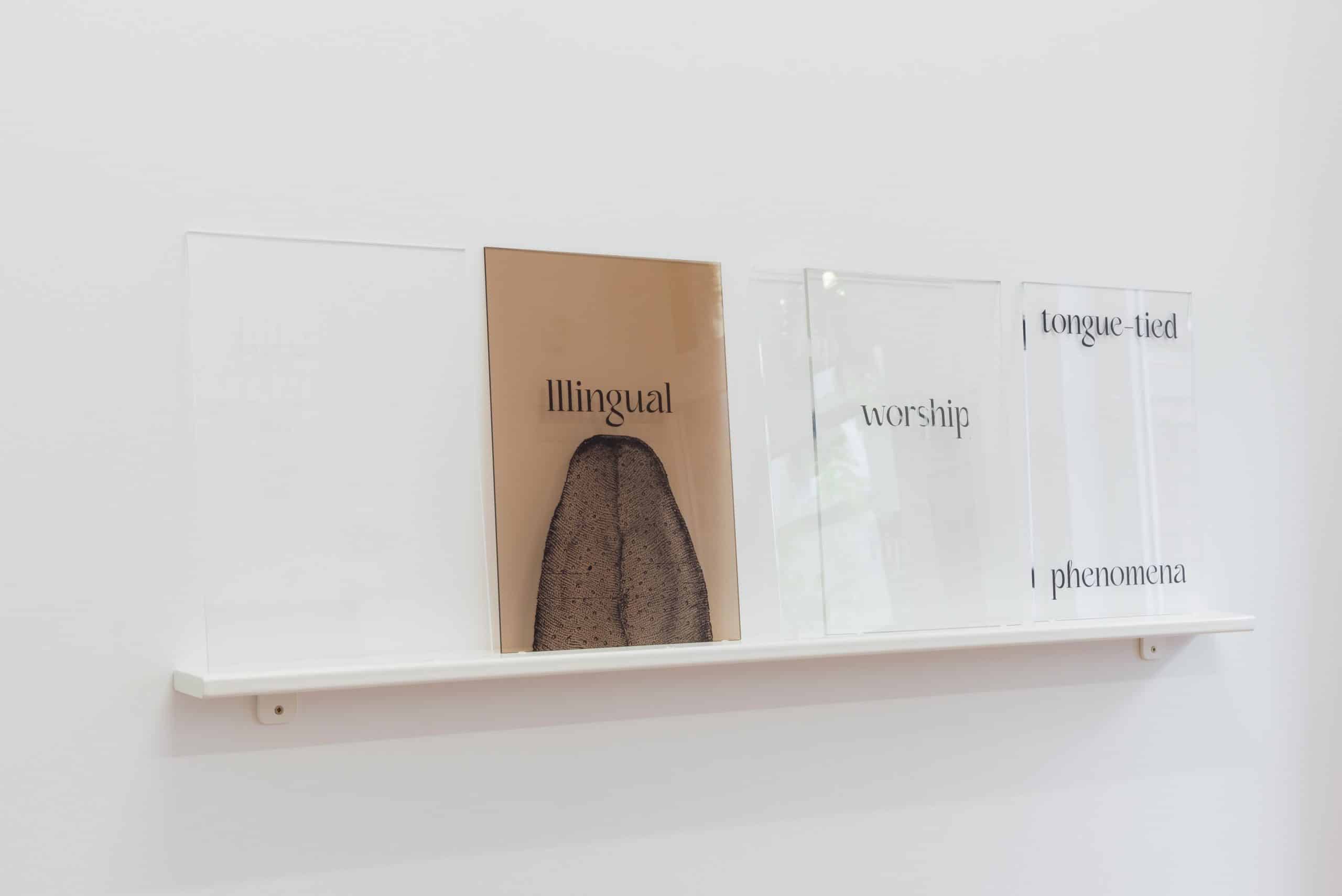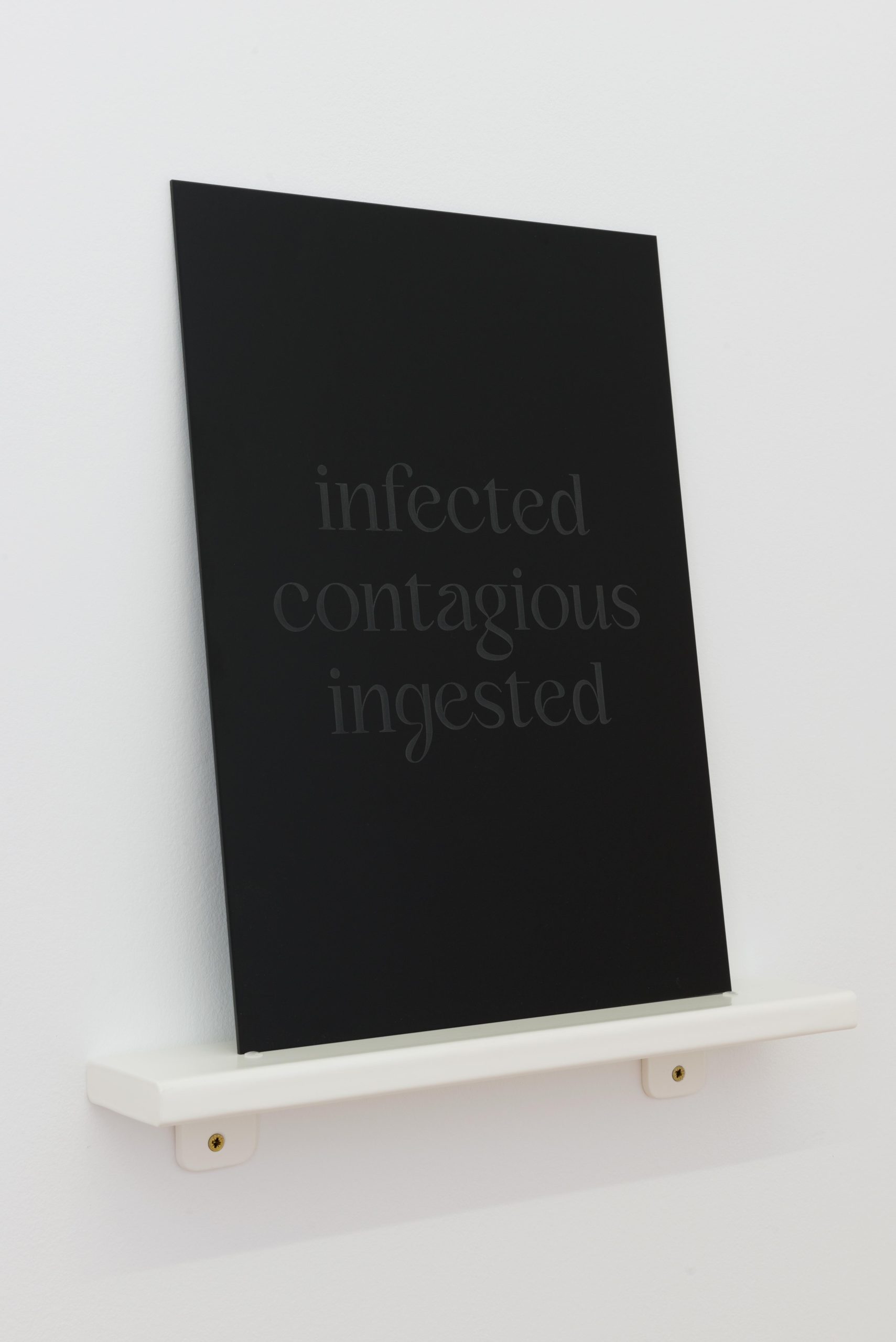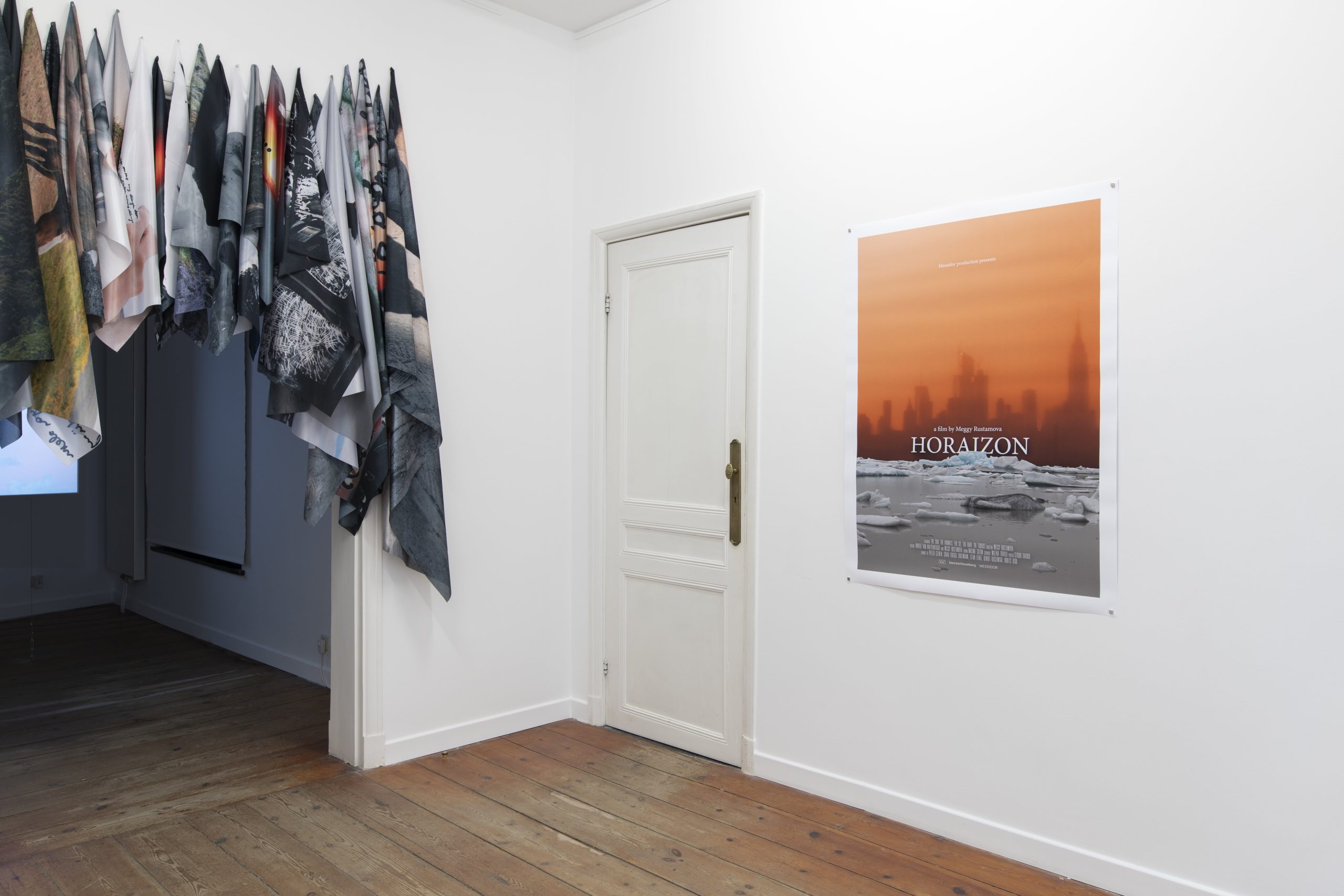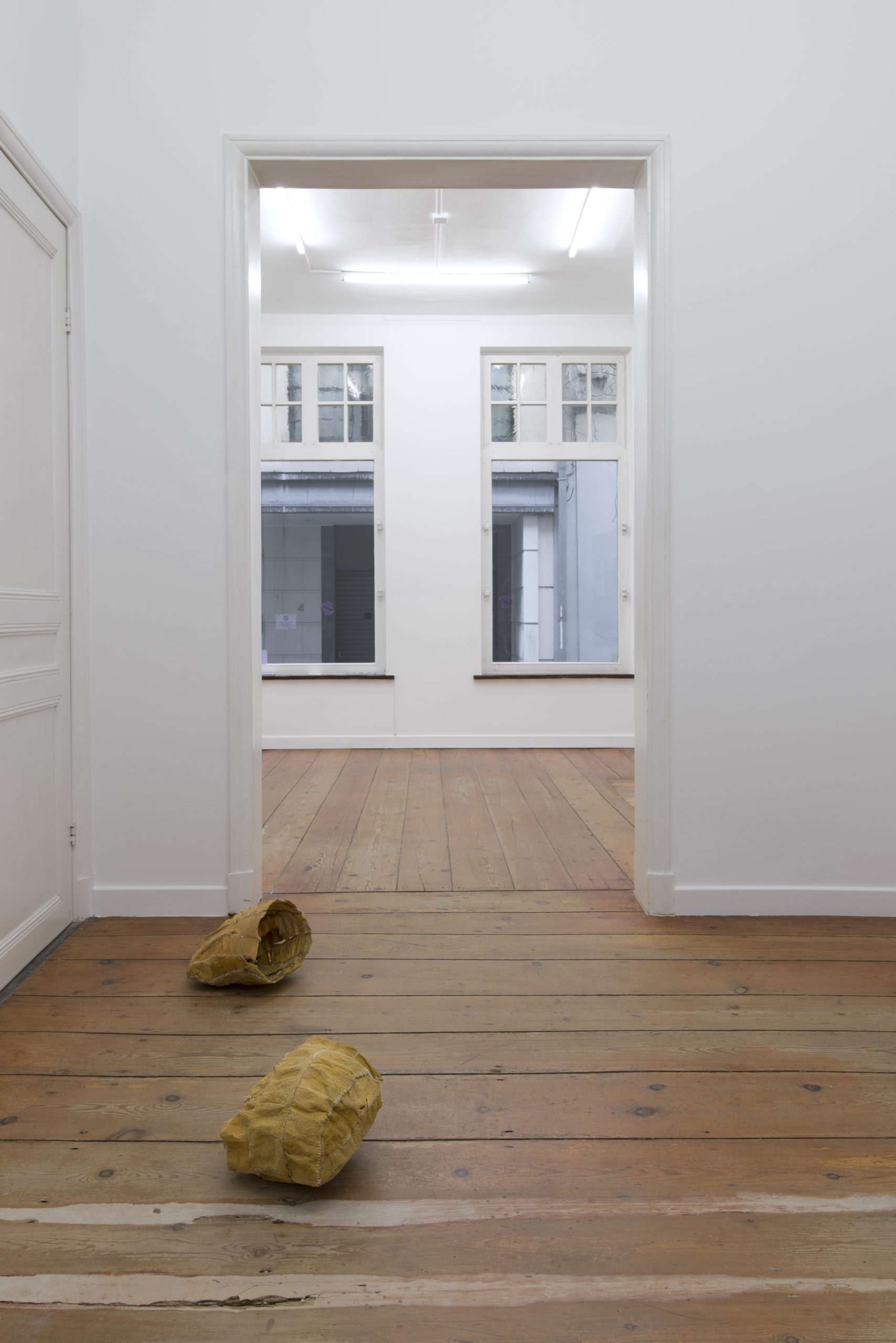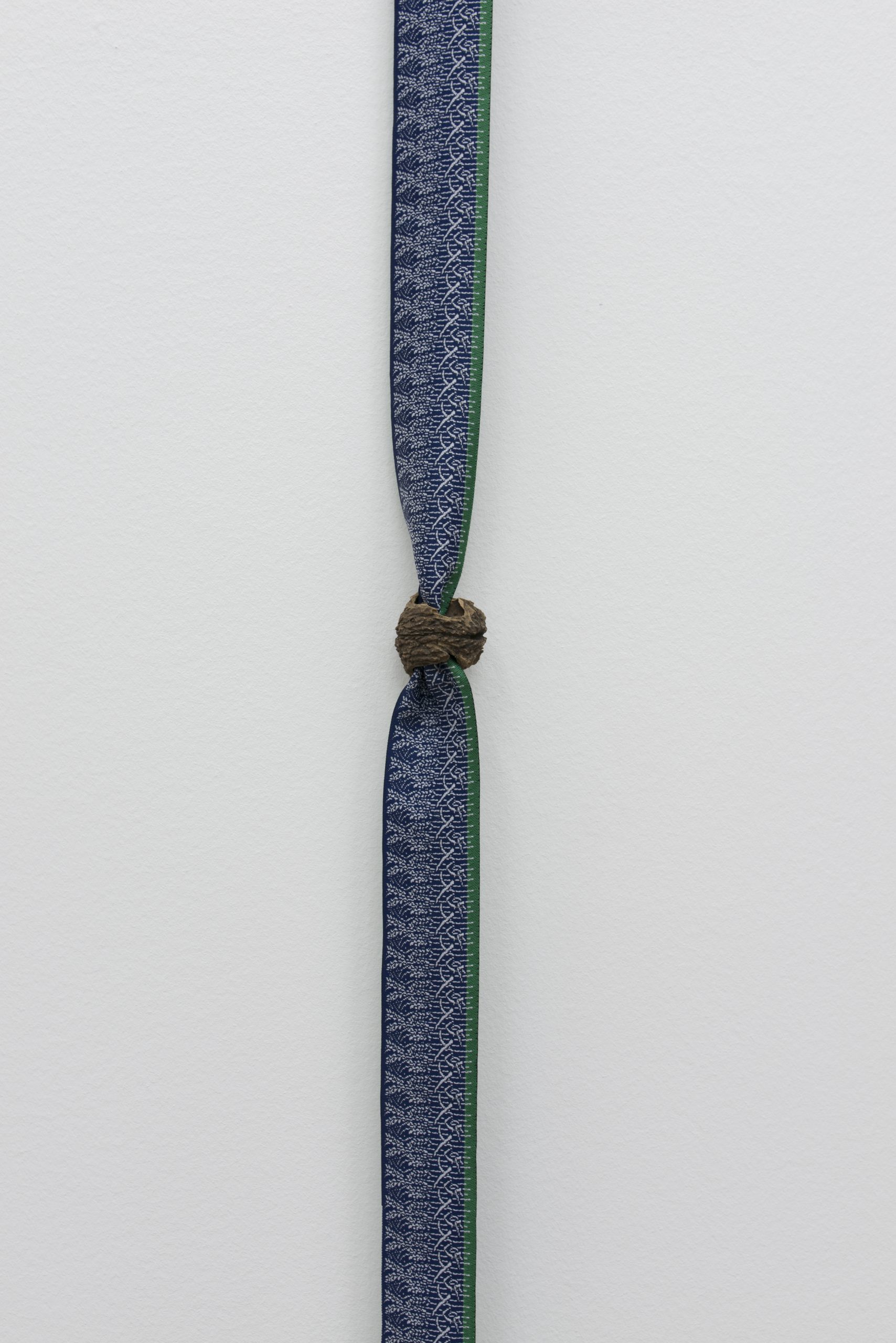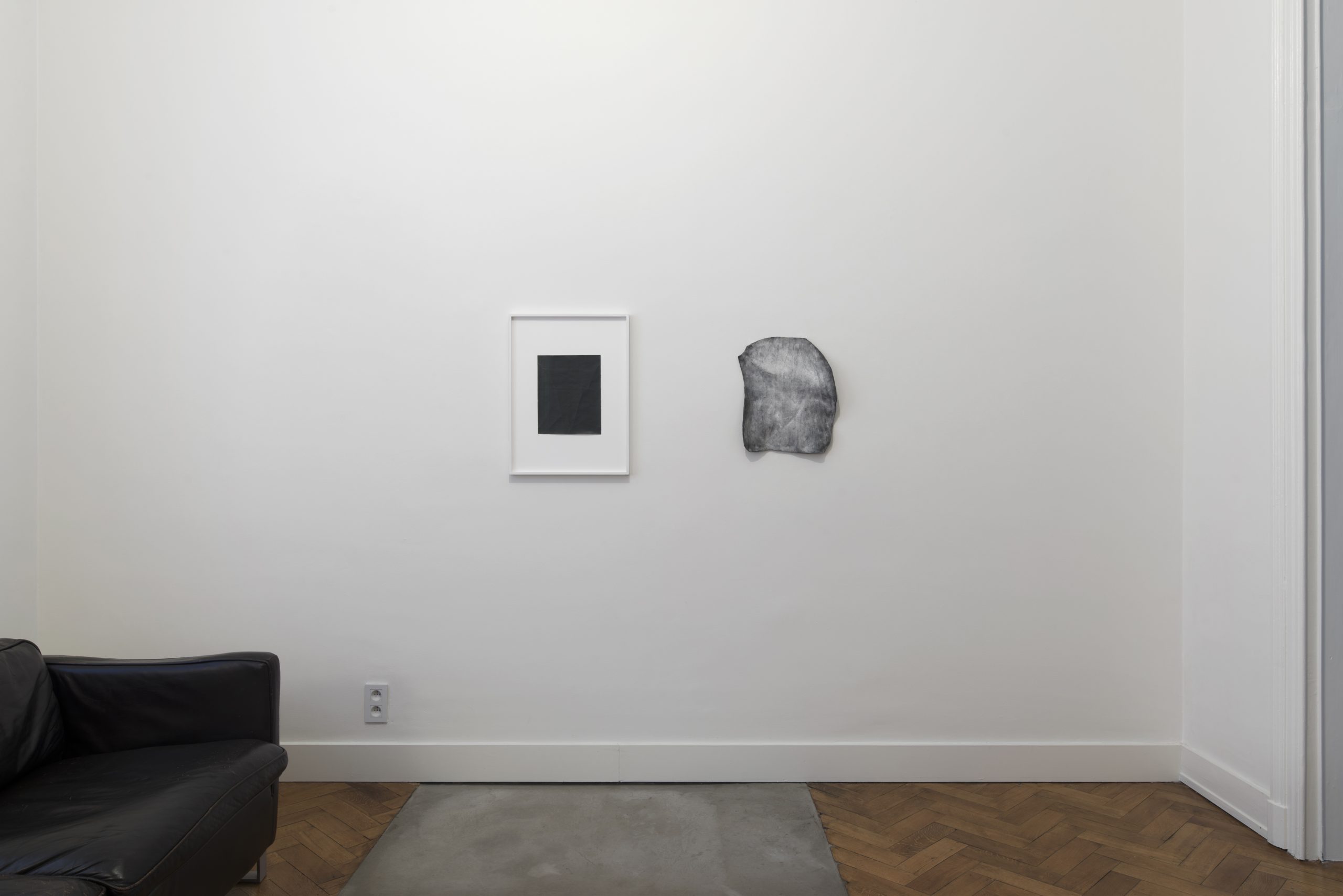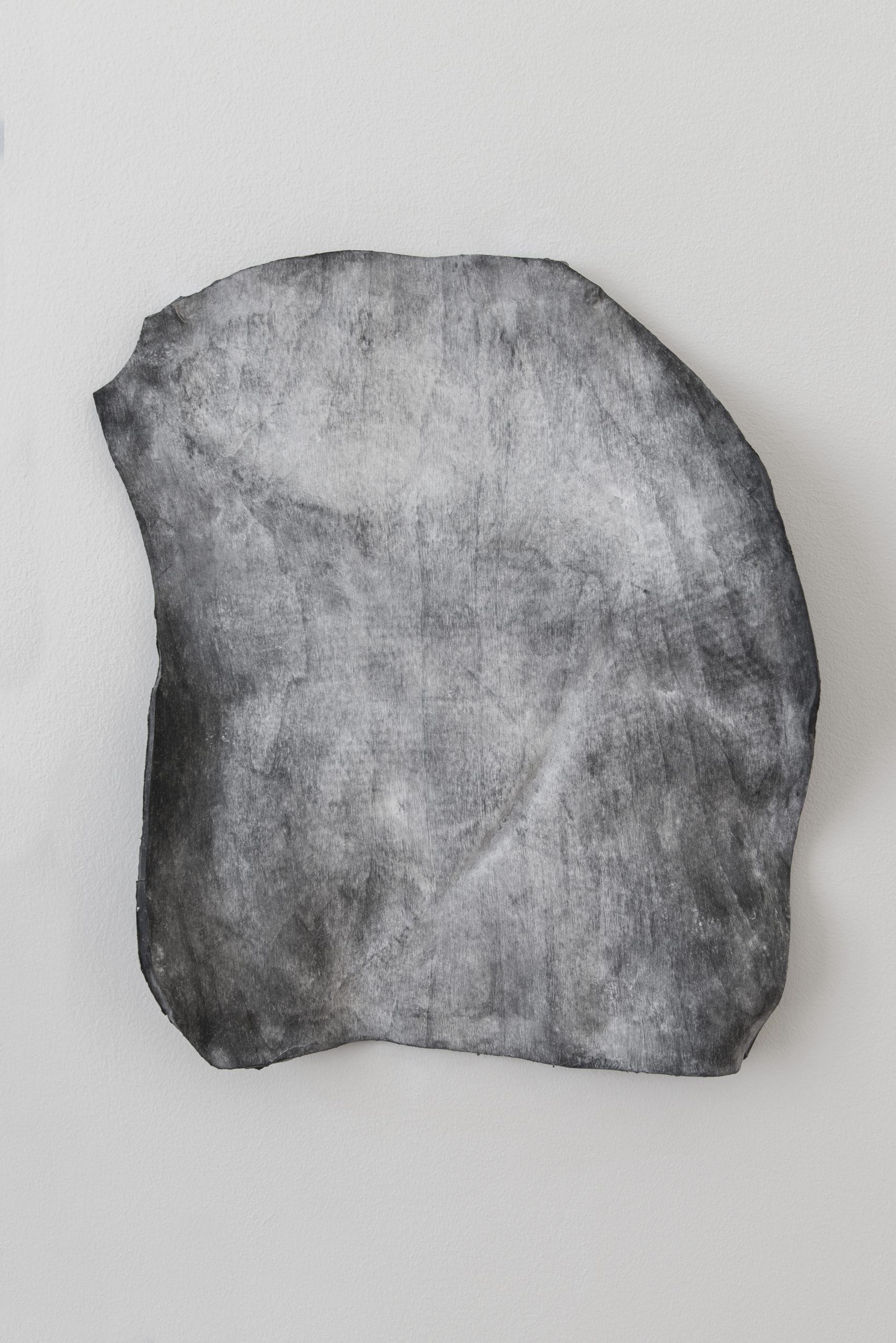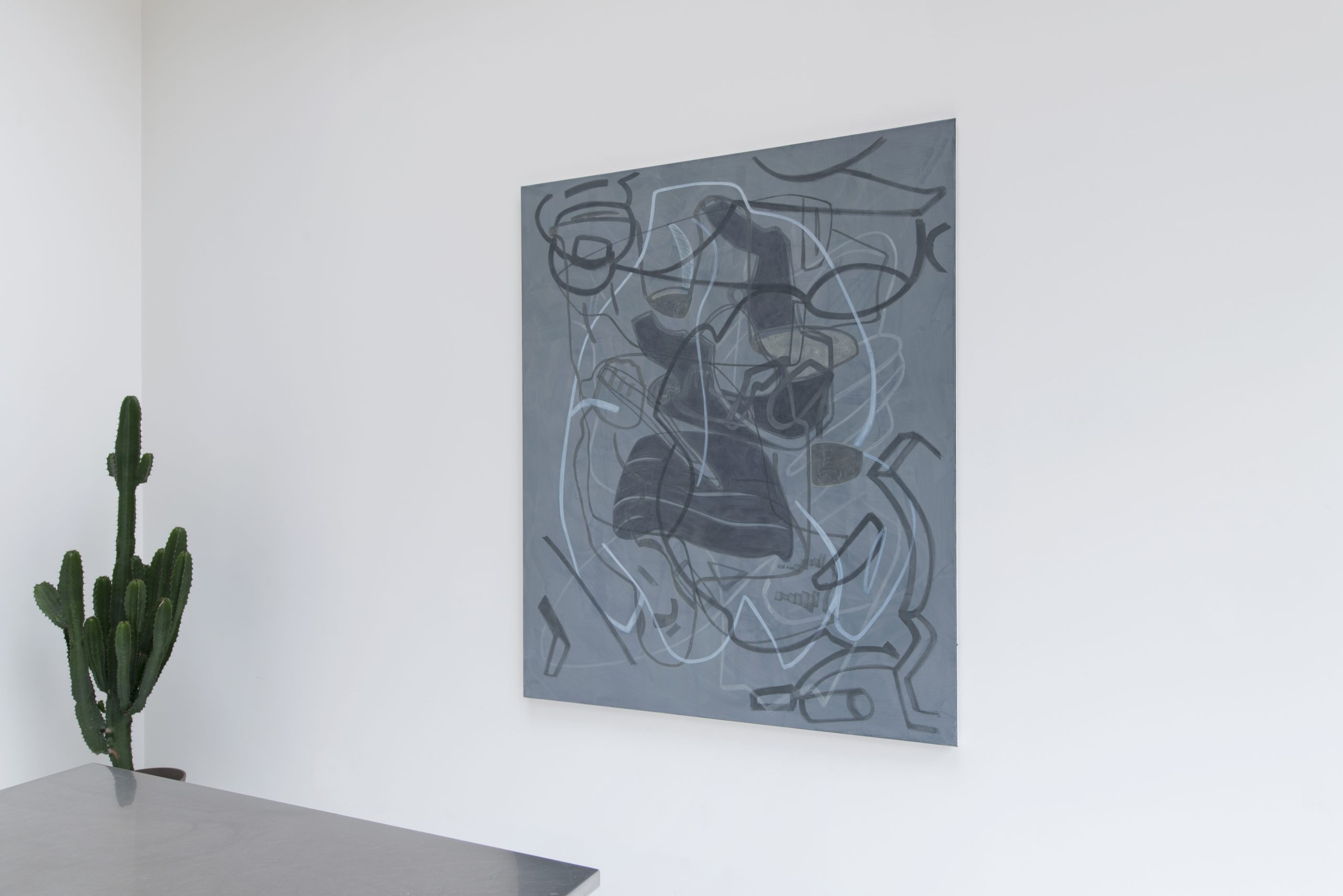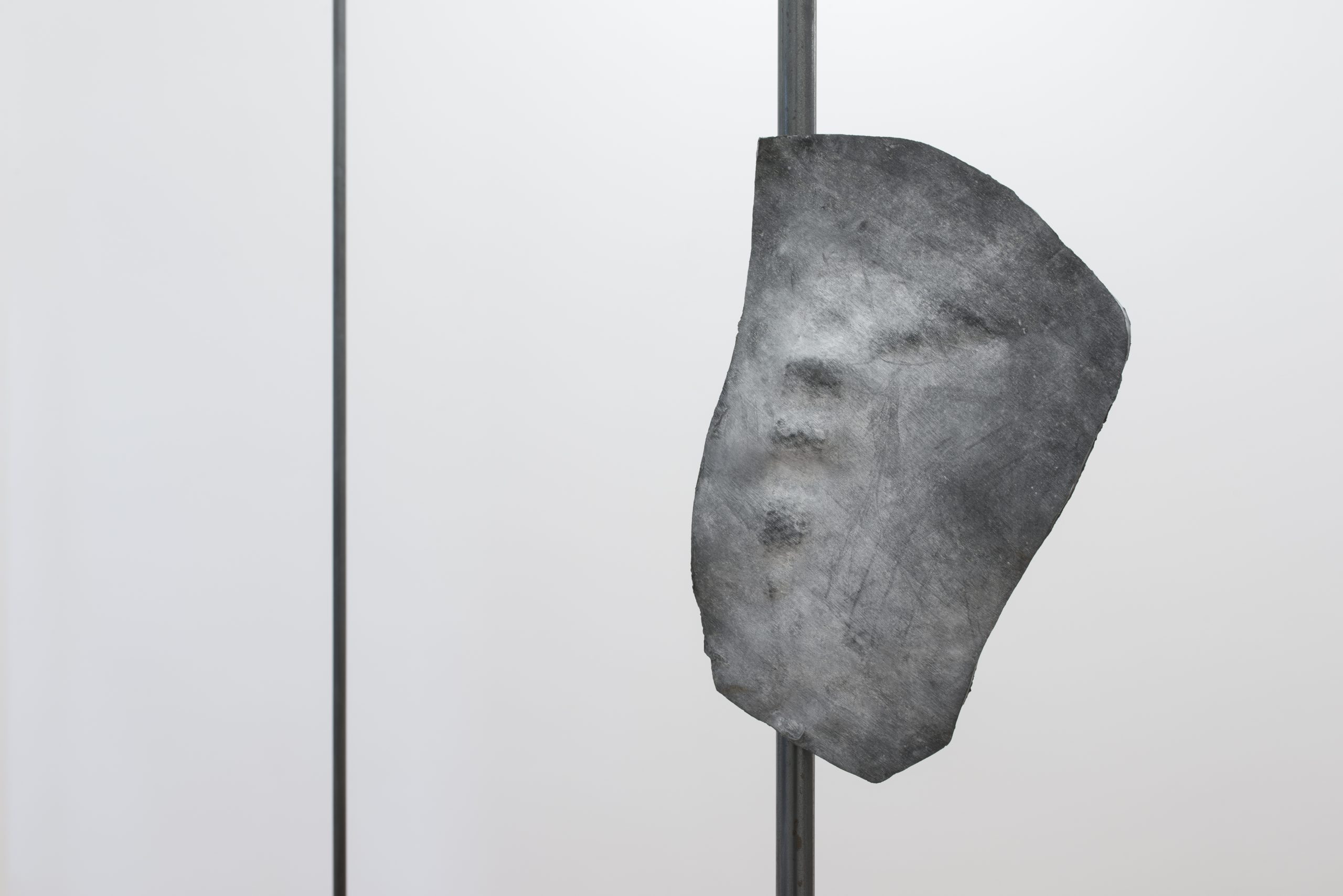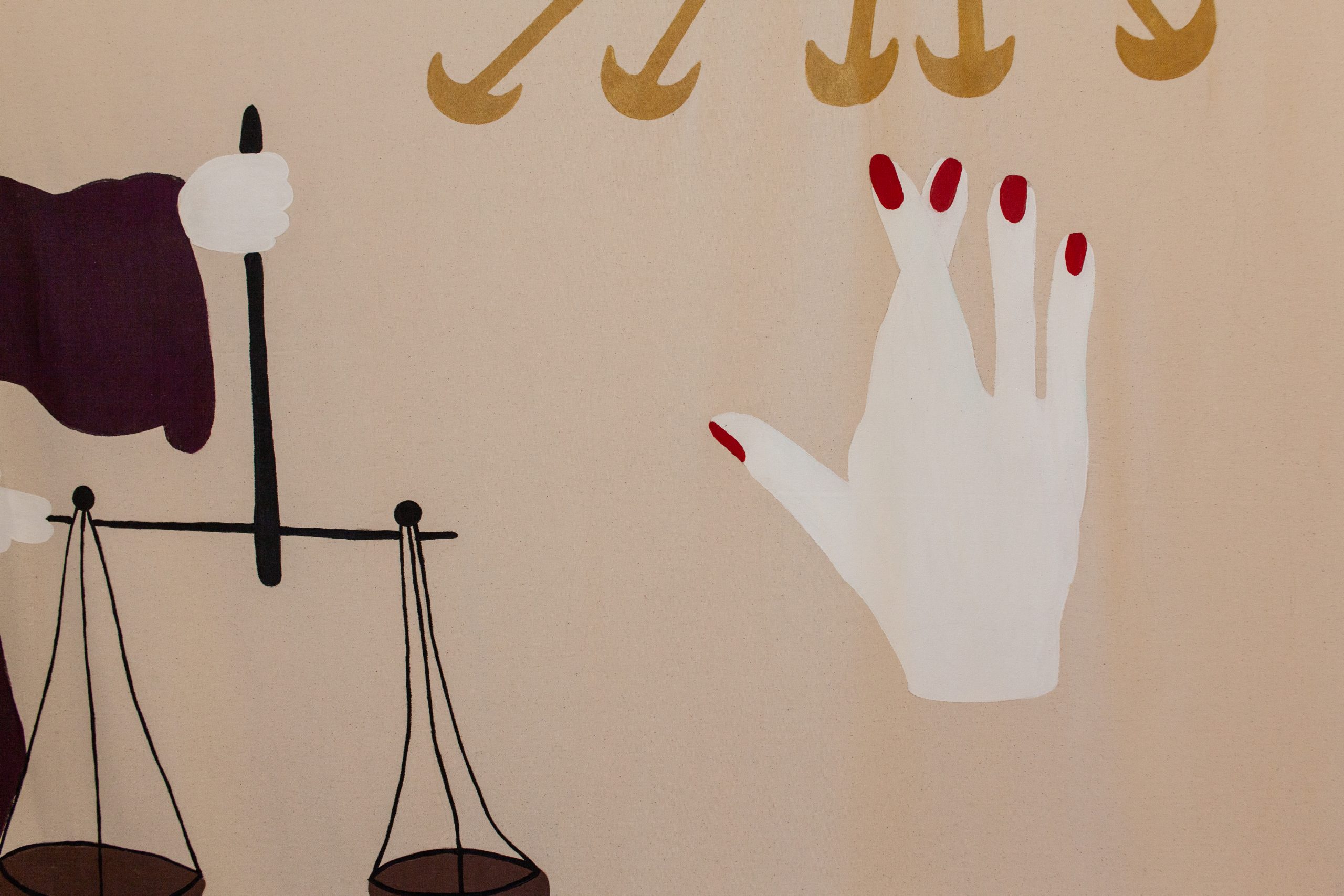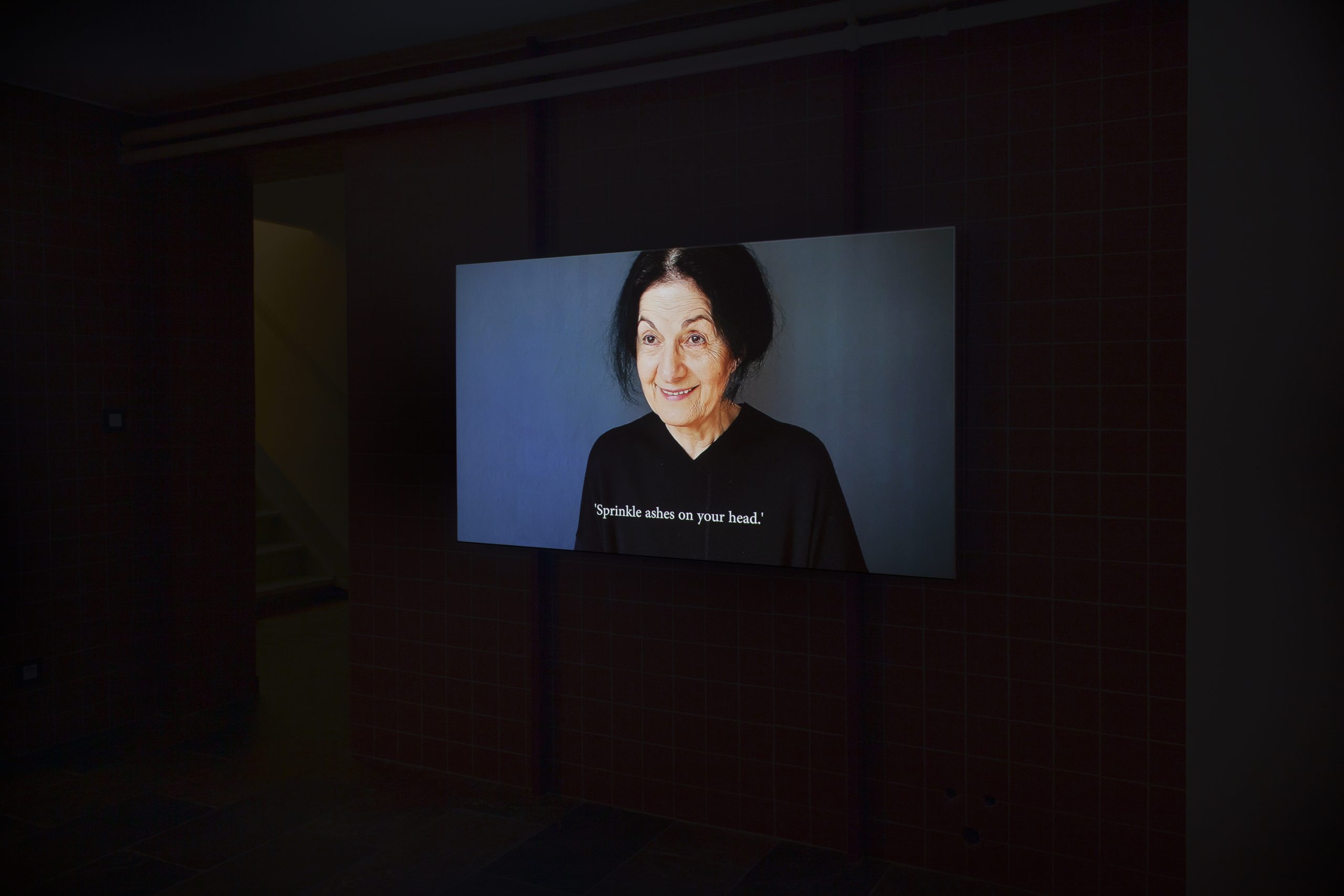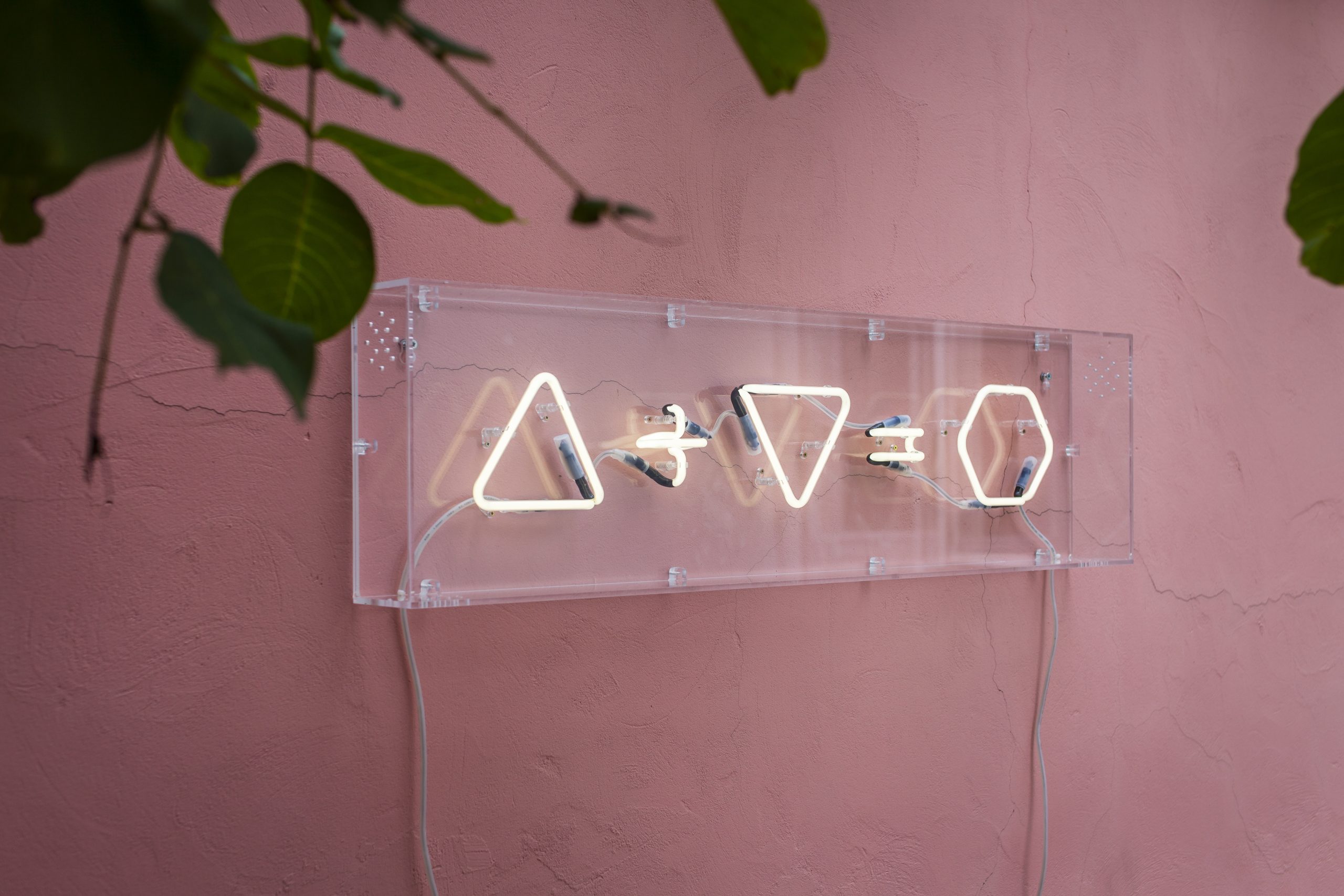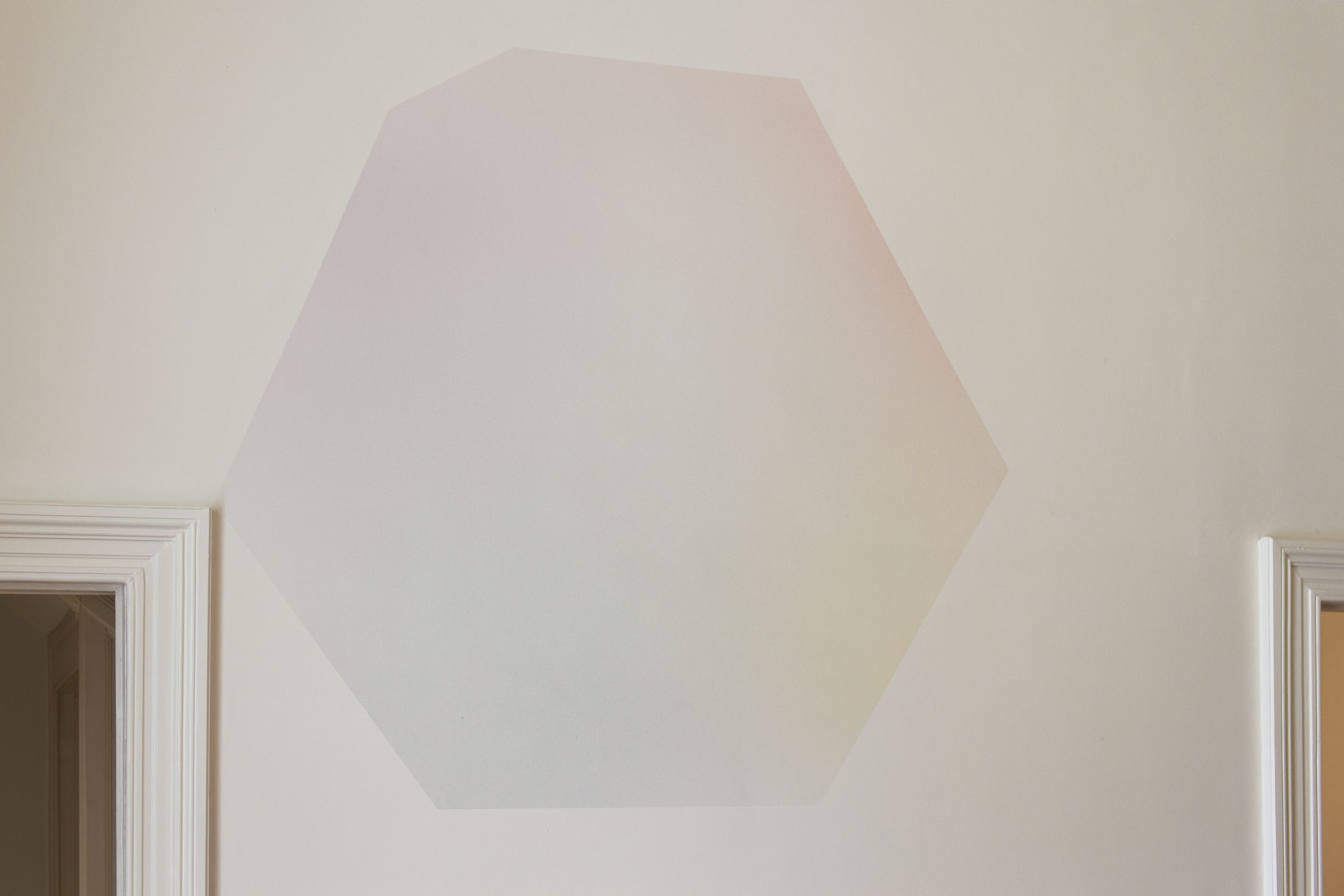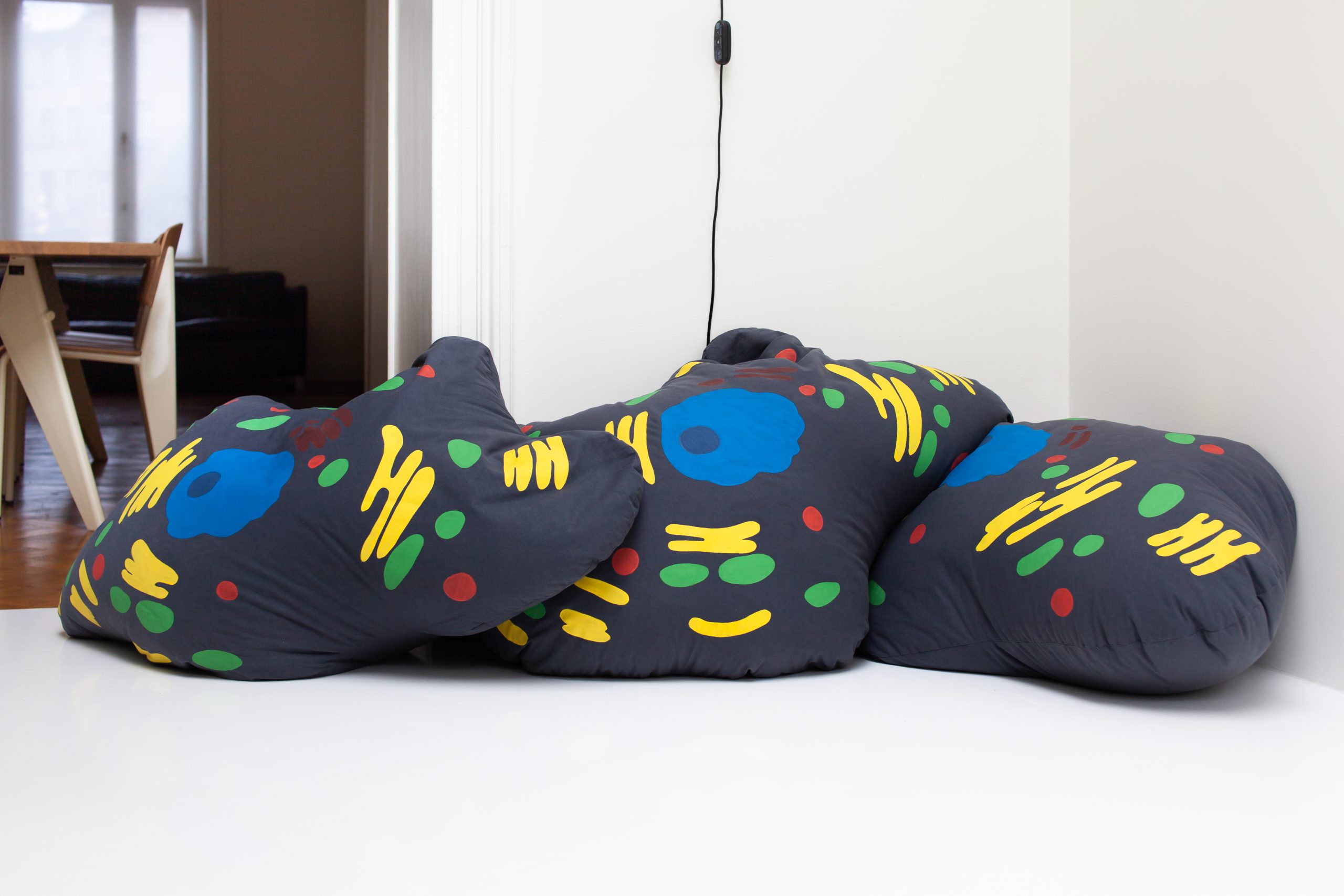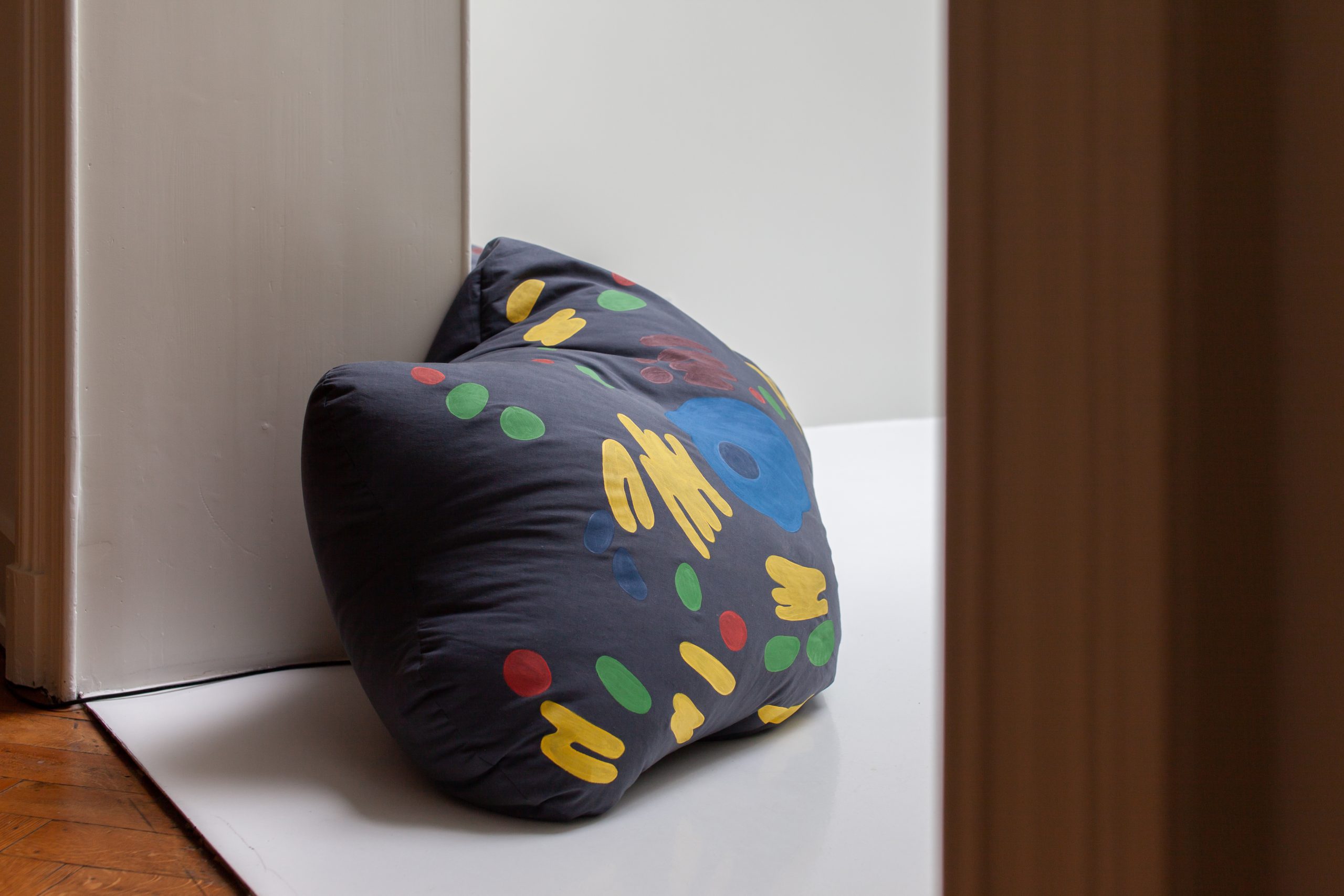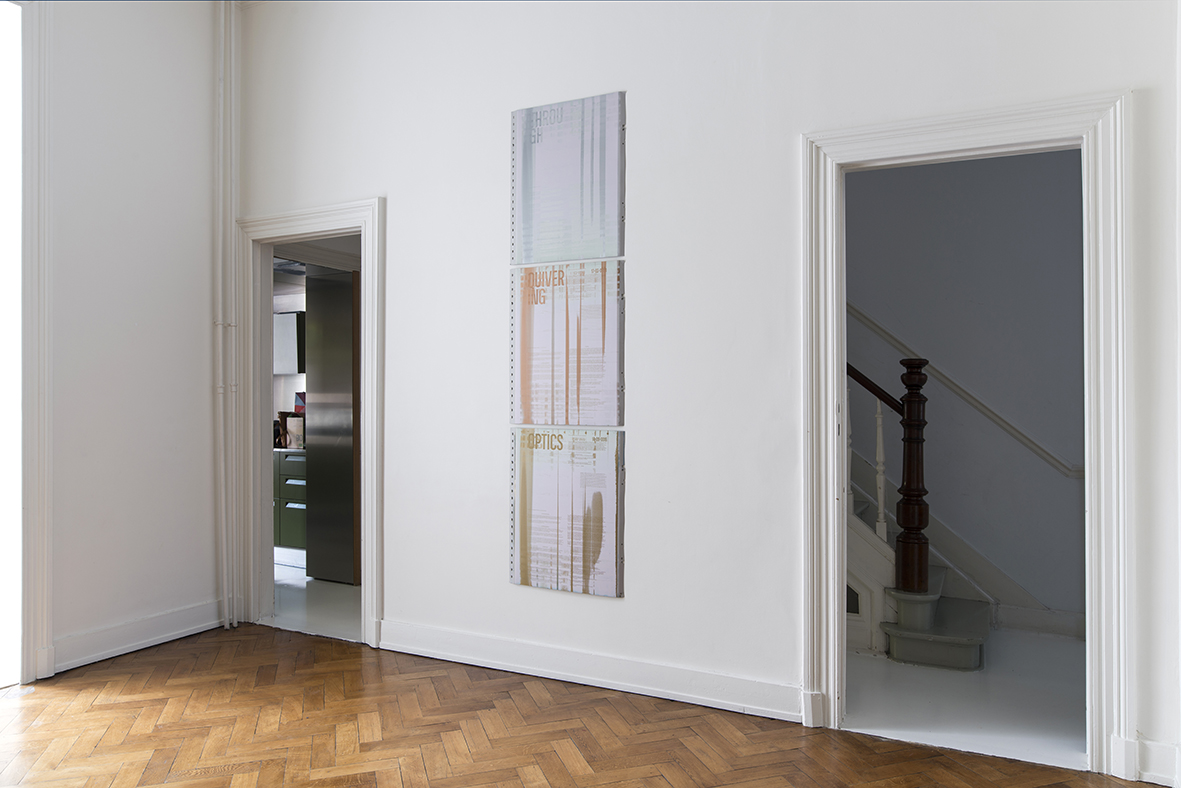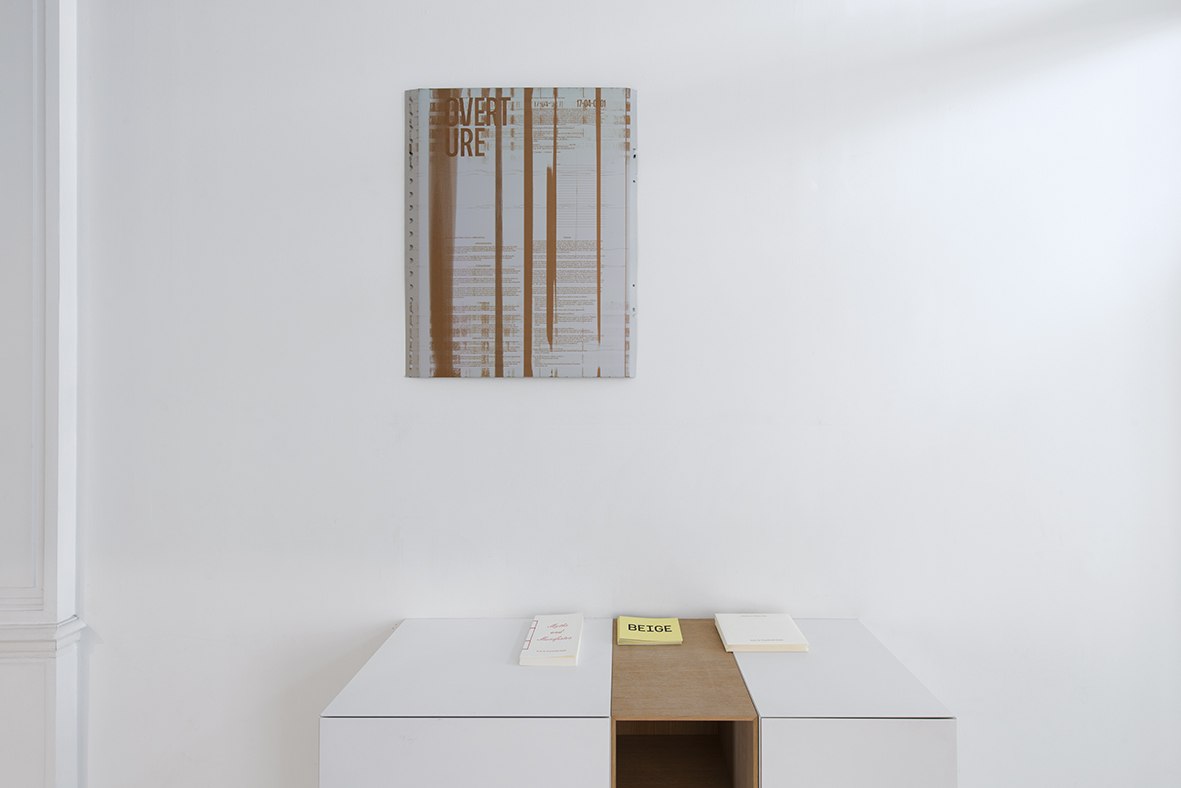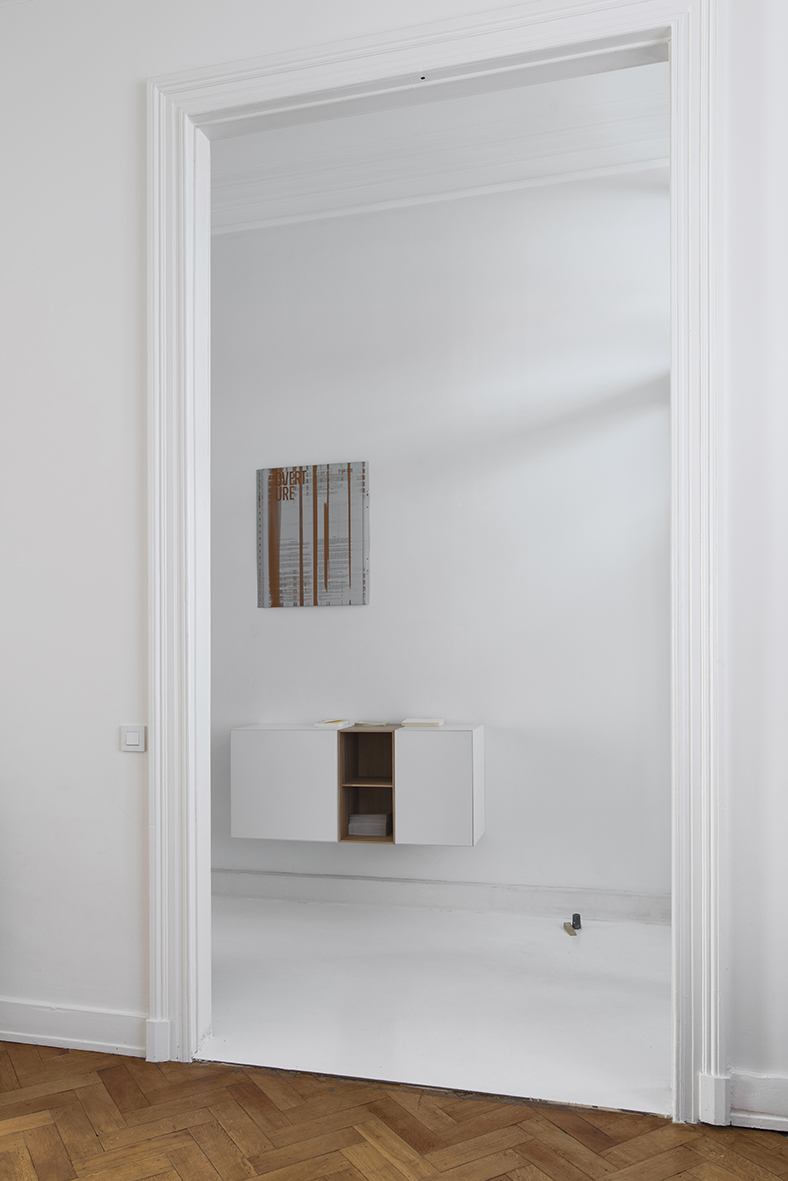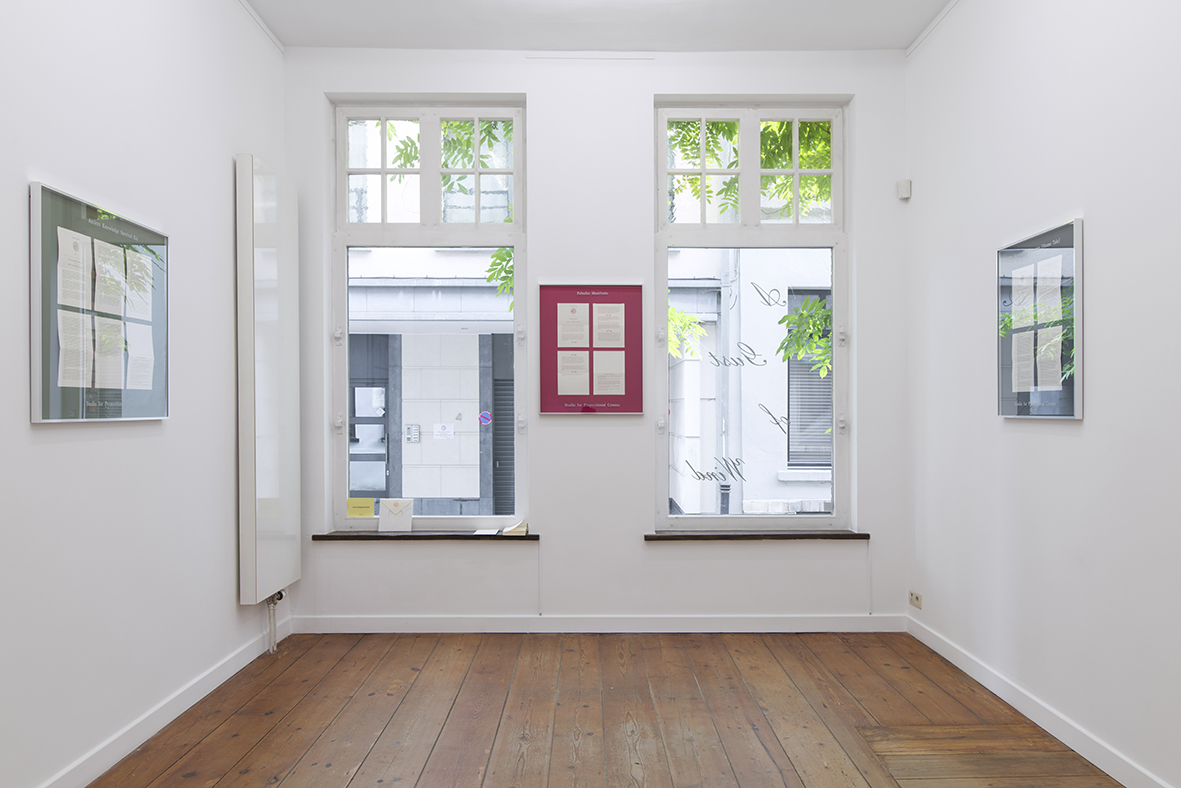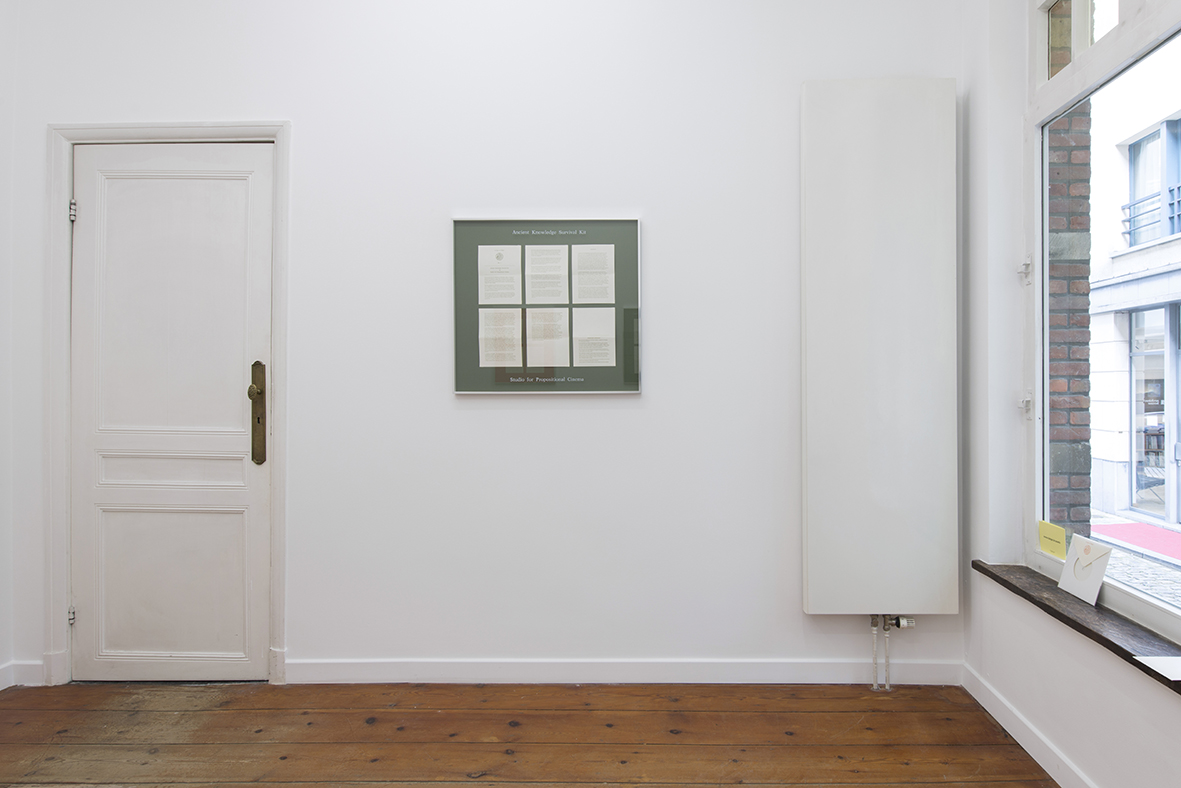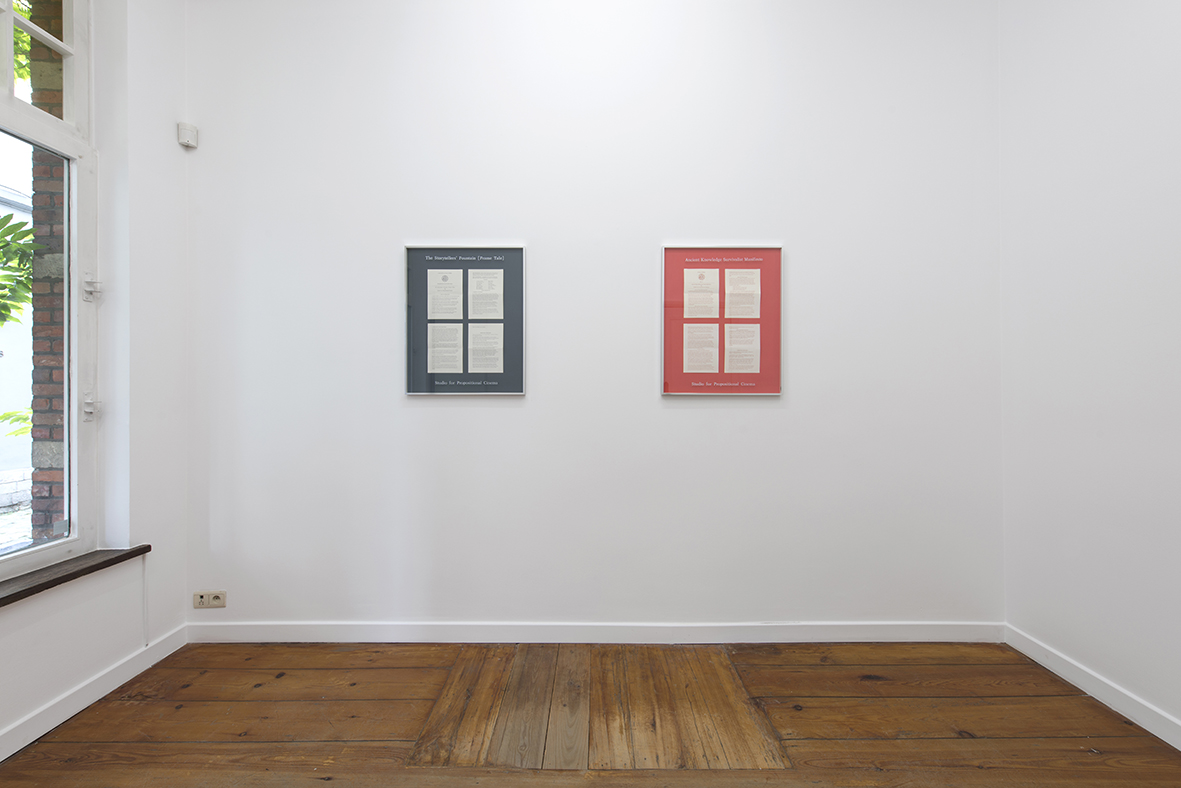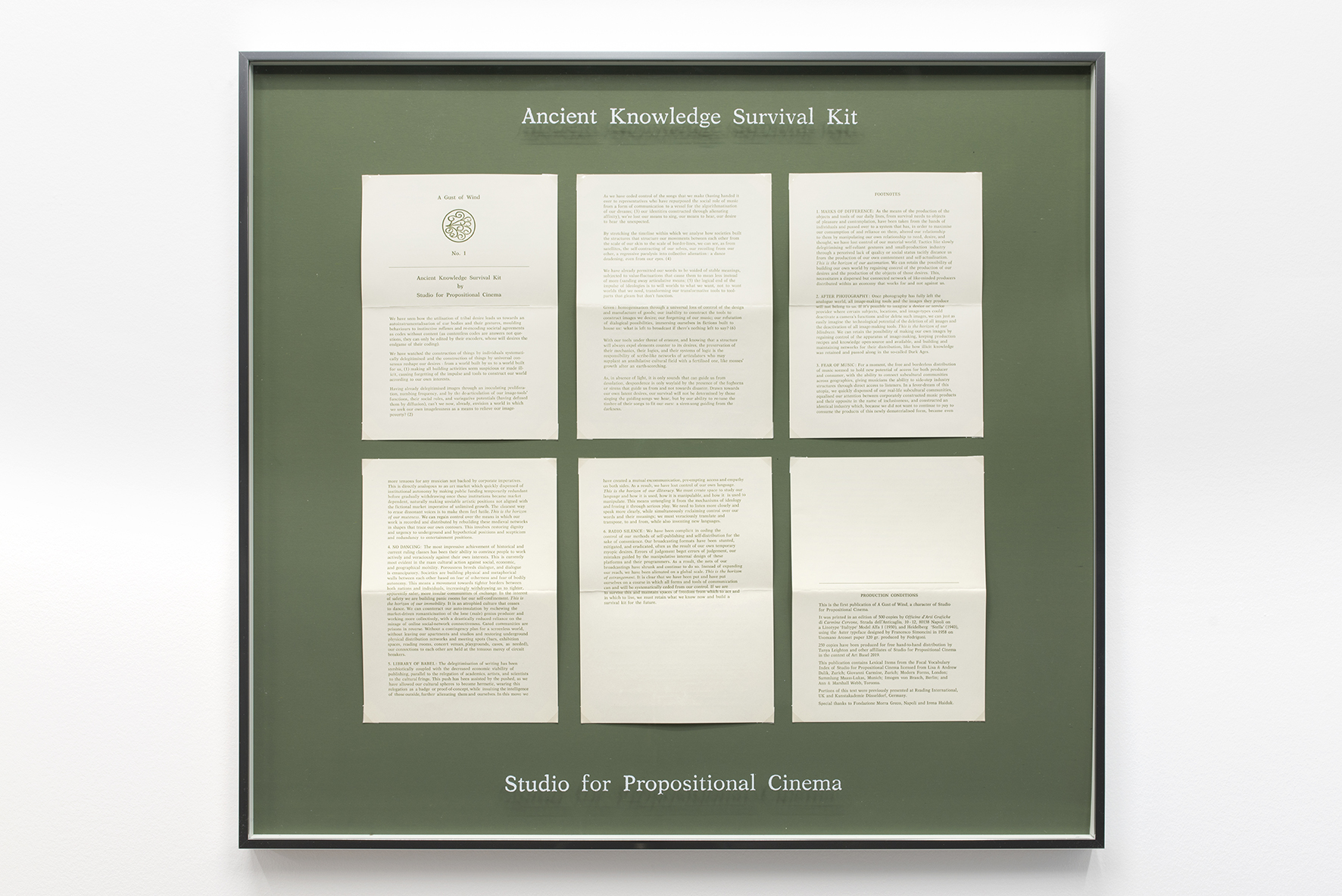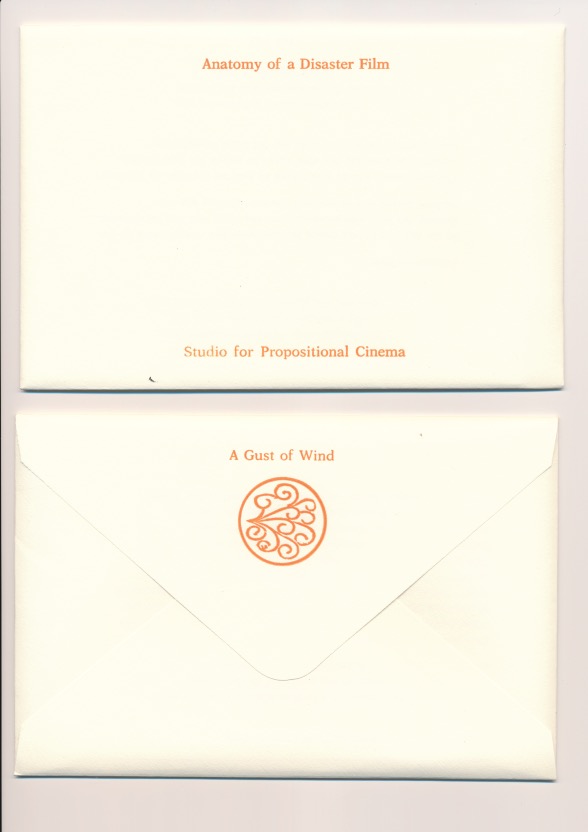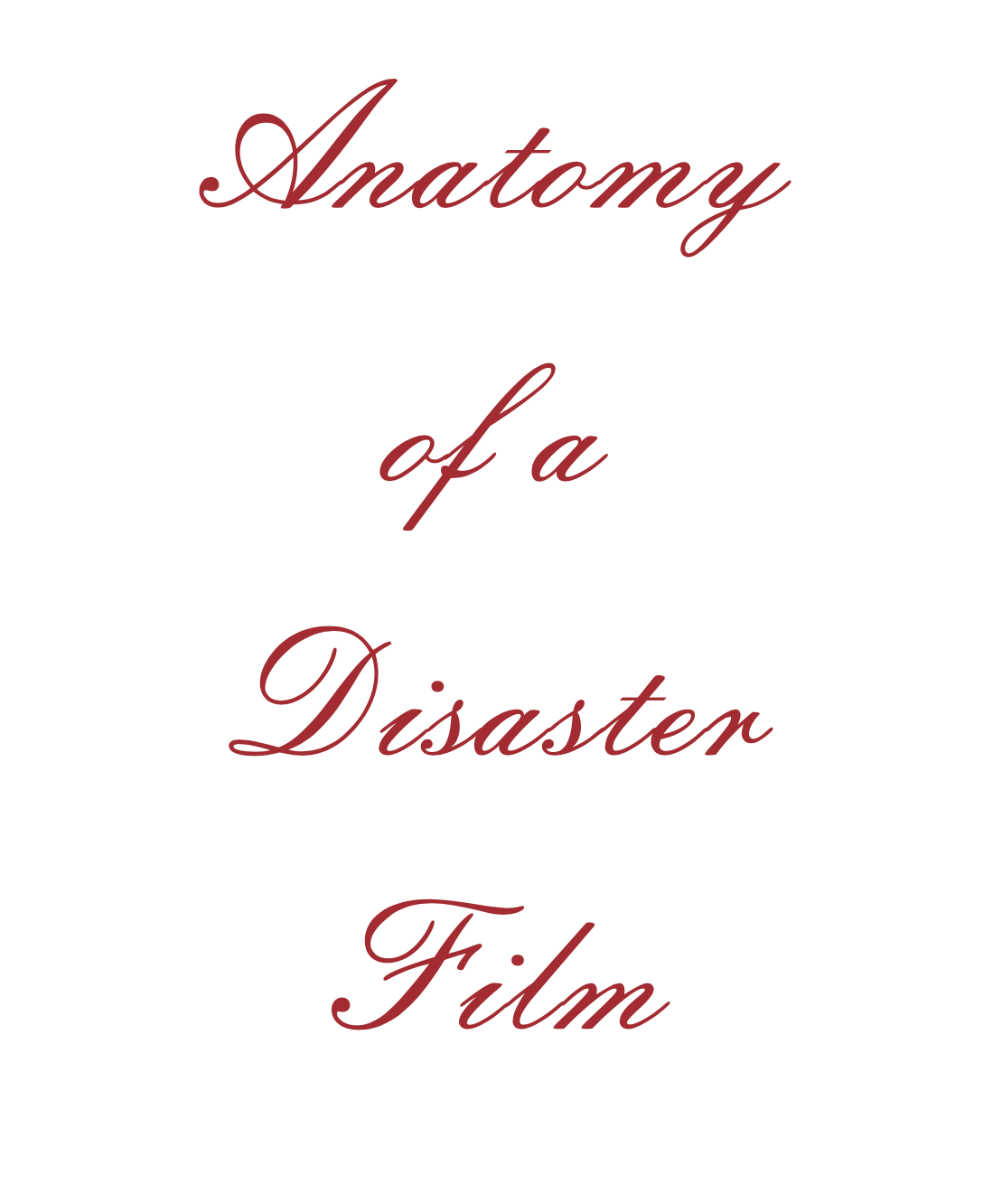BEIGE is thrilled to present Isabelle Andriessen’s first solo exhibition, BILE, in Brussels.
In her sculptures Isabelle Andriessen explores ways to physically obscure the interface between animate and inanimate (synthetic) materials by giving them their own metabolism, behaviour and agency. Through interlacing materials, parsing queer materialism and probing plastics, crystals, and coolant for latent dark intent, they offer a window into a speculative world.
Her work inhabits the liminal space between sculpture and performance; Addressing a world attuned to death but thriving with new organs and sex, as if to suggest how new entanglements might flourish in a non-human world. Seemingly beyond perception they transform into grim agents, often irreversible. They remind of re-animated automata or relics, revealing unreliable characteristics within materials that otherwise seem dormant or passive.
These processes unfold in phases choreographed over one or several exhibitions; Some performances last a few months, while others continue to develop over years. They showcase the passage of time, disturbing notions of permanence, posterity, and the primacies afforded the restoration and collection of art.
Installed in the first space is a work which has been on display since 2018 and revealing an increase of disintegration. Tidal Spill offers a glimpse into a grim future reality. A reality in which materials have agency, enabling them to control certain entities and bodies, transgressing them into resilient species that endure in crisis.
The title of the exhibition BILE refers to ‘black bile’. According to medieval the theory the body is comprised of four fluids—blood, choler (yellow bile), mucus, and black bile—which must maintain balance for good health. Historically, black bile was associated with not only sorrow but also heartbreak, irrational behavior, and uncontrolled bodily impulses. These sculptures become a cast of characters in a sticky landscape members of a semi-choreographed orchestra, an exhibition chorus.
Concluding, Andriessen alludes to loss, grief and horror, and in order to redefine what an apocalypse can be, understanding it as not necessarily (or only) a space for destruction but rather a continuum state in which there is apocalypse upon apocalypse, or catastrophe upon catastrophe—an inhospitable darkness that is also a fertile source.
Isabelle Andriessen lives and works in Amsterdam.
Andriessen has had solo exhibitions at art institutions including De Pont Museum, Tilburg (NL) and CAN Centre d’Art Neuchâtel, Neuchâtel (CH) (both 2021) and Kunsthal Gent (BE) (upcoming 2025). Group exhibitions include Middelheim Museum, Antwerp (BE) (upcoming 2024); Moderna Museet, Malmö (SE) (2022); GAMeC, Bergamot (IT); Modern Museum of Art, Warsaw (PL) (both 2020); 15th Lyon Biennale, Lyon (FR) (2019); Stedelijk Museum Amsterdam (NL).
Writing on works like RELAY and UNTITLED by Paul Czerlitzki, included in the artist’s show at BEIGE, brings back images of various Volcano eruptions and the traces they leave behind. On one image, the totality of what used to be a village was completely covered by masses of light gray dust. The interiors of a kitchen, along with the shapes of cans, vessels or tables, are covered in a fluffy, thick layer of dust (a sort of mirrored replacement of the real object) as a result of the earthly breathing. Only for a small moment, before it disappears again, through a wind or touch. While after time the ashes lower from the air to cover various surfaces, liquid stone, on the other hand, shapes the landscape and changes it by pressure. Moving without control, only guided by the multifaceted shapes of the ground. There is something profound yet fragile about the very nature of materials that make themselves space and how they move through the air and on the ground.
Paul Czerlitzki works as a painter, guiding pigments and paint in an indirect manner that balances between control and letting go within the boundaries of an artistic program that he has developed over the years. It allows variations in a minimal outline, concentrating on the basic principles of painting. His methodology, which he keeps coming back to in long series of works, allows him to operate as an instructor for the materials he works with. The artist takes paint and a painterly underground (canvas or walls), the very fundamentals of the medium, as his main working material, and deconstructs and maneuvers around the highly charged terms and histories of painting.
Shaped by the process of time and embracing chance, all works in his series RELAY consist of unfixed pigments deposited on canvas, welcoming traces and damages to enter the thin layer of dusty paint, allowing its fragility ever further. Only through those events, the very nature of the materiality becomes visible. With another layer of pigments (often in a different color tone), the works are being revised; scratches and touches that resulted of handling, are covered by another layer which results in partly deeper color and half-hidden traces. The monochrome paint thus creates several shades (in this exhibition it is red), by different amounts of paint applied. This creates certain depth on the surface, thicker and dark amounts of paint, and very thin and light layers.
A similar strategy was applied for the wall drawing UNTITLED: While pigments flow and eventually touch the canvas in RELAY, paint is sprayed through canvas that was previously fixed onto the wall, leaving traces and touches of paint back on it, carrying the irregular patterns of canvas, sort of as a negative imprint.
Both series combine a sense of materiality that always allows the process to take charge of the painterly outcome. That way, his process becomes part of what the work is, how fast paint dries and what way it behaves. These physical aspects, define the ground the artist created for himself. A space in which definition and process are the main figures in his minimal approach, that is very much site specific, as this exhibition shows.
Dust, which describes not the material itself but rather a time-based process and condition is also reflected in the show’s title: Not That Red. As in: Almost, not yet, in relation, a color, yet not quite there, a timely stretch, description, condition, a function, a gap?
Text by Carla Donauer
Beige is pleased to present new works by Heidi Voet.
The exhibition Am I moving atoms when I wave my hand? starts off from the physical gesture of waving one’s hand as an acknowledgment of a social context and a form of communication. The hand as a tool through which one connects, both tender or cruel, and interacts with the material world.
As one of the earliest motifs identified in art history, the hand gives agency and defines the specific abilities of primates. Whereas today, the creases and veins of the palm are used as biometric information to map identities. With the focus on a gesture through which one now shares and communicates personal information, the exhibition places this ordinary gesture in a context of world politics and future building.
For Am I moving atoms when I wave my hand? Heidi Voet worked together with a medium and AI developer to read the palms of world leaders, based on media images of their waving hand. Intimate details about aspirations, trauma, relationships, character flaws or strengths, and predictions, are read and articulated by both
medium and machine. The lines of the palms are translated into glass neon signs and placed on modular structures adorned with materials to form portraits of contemporary world leaders.
The glass tubes are filled with noble gasses such as Neon and emit a strong, coloured light when electric current is applied and the ionised gas rushes through the fragile veins. The element Neon, from the Greek work ‘neos’ or new, consists only of a single atom. An element more common in the cosmos than on Earth, where it is found mainly in the cracks of rocks in the Earth’s crust. Neon signs refer both to the early 20th century commercialisation and the obsession of man to explore far beyond Earth’s horizon.
The exhibition Am I moving atoms when I wave my hand? reflects on intimacy, agency, power and building futures. Through the abstract portrayal of powerful individuals, questions are posed concerning the structures that uphold contemporary society. How gestures, bodies, materials and signs are read to find a sense in the entanglement.
Heidi Voet lives and works in Brussels and Taipei. Her multidisciplinary practice is concerned with the place of an individual in contemporary societies, and locating this within cultural, historical and universal narratives. The interconnectivity of these elements is evoked in her practice through the use of everyday objects which are placed in large scale installations, sculptures and performances, creating links between the singular object or individual, and larger entities.
She recently participated in A Madeleine Moment: The Technology of Memories and Emotions curated by Amy Cheng at Forever Life Foundation, Taichung (TW) and But don’t tell anyone curated by Joanna Warsza at Elefsina (GR). In 2021 she was part of Beaufort 2021 curated by Heidi Ballet.
BEIGE is proud to announce the new exhibition My Address by Emmanuelle Quertain.
The exhibition My Address presents 440 watercolors painted while looking at a computer screen. The entire show is thought as a portrait of the IP (Internet Protocol) address of the artist. These watercolours partially transcript the subjects consulted online as well as a “time of focus”, concentrates on the virtual documents. The whole esthetical work of this exhibition proposes to the viewer a definition of the value of numerical data through painting. It’s also a way to approach the intimacy of the modern subjectivity.
Emmanuelle Quertain (°1987, Uccle; lives and works in Brussels) deals with the mass production of images in today’s society through painting. The eye is saturated therefore “we see nothing, yet there is something to see”. Through painting Quertain investigates and reframes the world around us.
After studying painting at ERG, School of Graphic Research in Brussels, she won the Young Belgian Art Prize in 2015. She had solo presentations at Nagel Draxler, Cologne (DE), EMERGENT, Veurne (BE), KRIEG, Hasselt (BE), CC Strombeek (BE) and Project room Galerie Baronian, Brussels (BE). The work was recently featured in group exhibitions at SMAK, Ghent (BE), Centre de la Gravure, La Louvière (BE), KIOSK, Ghent (BE), Kasteel van Gaasbeek, Gaasbeek (BE) and Roger Raveelmuseum, Machelen-aan-de-Leie (BE).
Her work is part of various private collections and the following public collections: MAC’S Musée des Arts Contemporains Grand-Hornu (BE); Cera Collection, M, Leuven (BE); Collection of Kasteel van Gaasbeek (BE) and Collection Vlaamse Gemeenschap (BE).
An artist talk was held between the artist and curator Nadia Bijl on October 14, 2023 at BEIGE, Brussels.
Opening 26.05
5-8 pm
BEIGE is delighted to present Recent Paintings, an exhibition by Béatrice Balcou (b. 1976, Tréguier, France. lives and works in Brussels), featuring new works on paper.
Whether through a stormy and atmospheric painting by William Turner; or a delicate and vibrant work by Agnes Martin; a rigorous and systematic print by Claude Rutault or a romantic yet melancholic photograph of Bas Jan Ader on his boat – in her solo show at Beige, Béatrice Balcou displays the restorative and emotional gestures that take care of the works of art. Through these gestures she investigates our relationship to the value and the role of art today.
The exhibition is composed of pages from monographic art books which suffered water and time damage. They were subsequently professionally restored in her studio with the help of two students from the restoration department of La Cambre. The project focusses on the restoration of the reproduction of a painting. The work of Balcou typically highlights the different agencies that take part in the life of the art work: the technicians, the registrars, sometimes even the cleaning agents and in the case of Recent Paintings, the restorers and in another way the publishers of art books. Balcou therefore levels the playing field between the artist, photographer, editor, collector, printer, restorer.
Lying underneath this apparently unrelated choice of works is their approach in portraying a natural element such as a seascape through abstraction; projecting through the lens of their own sensibility a depiction of one of the most classic examples of the aesthetic sublime. Through restoring their appearance to what it originally was, the artist underlines how every transformation and passage from a medium to the other – from actual artwork to catalogue reproduction – has already transformed them into something distinct.
Béatrice Balcou describes the process as follows:
« The restoration was carried out in collaboration with Mathilde Bezon and Camille Jallu. The pages were restored to be preserved over time. They were first dry cleaned, and then washed in various agar baths. Discolorations and distortions were reduced to improve the readability of the work. Next, they were stabilized in order to restore their physical integrity. The missing parts in the sheets were recovered with paper fibers similar to the original support. The most difficult part was filling the big or small gaps by “illusionist retouching” or by a neutral background. Some actions were even not possible at the risk of destroying the work. When finally the decision has been made to stop restoring, the last step consisted in flattening and relaxing each sheet – protected in between non-woven papers and blotters – under several weights, and then wait… ».
Various international institutions organised solo or duo exhibitions featuring her work, including Musée d’art de Joliette (Joliette, Canada), Société (Brussels), Rozenstraat – a rose is a rose is a rose with Tlön Project (Amsterdam), M Museum (Leuven, Belgium), Iselp (Brussels), Casino Luxembourg – Forum d’art contemporain (Luxembourg), Le Quartier Contemporary art center (Quimper, France) and the FRAC Franche-Comté (Besançon, France).
Her work has been featured in group shows at Jeu de Paume (Paris), Kunsthalle Recklinghausen (Germany), Société (Brussels), Fondation CAB (Brussels), Salle Principale (Paris), Villa Kujoyama (Kyoto, Japan), Kunstverein Langenhagen (Germany), FRAC Bretagne (Rennes, France), Kunsthalle (Mulhouse, France), Été 78 (Bruxelles), WIELS (Brussels), FRAC Franche-Comté (Besançon, France), Center Georges Pompidou (Paris) and Palais de Tokyo (Paris).
With the support of:
CNAP, Centre national des arts plastiques
Beige is pleased to announce the exhibition: Hocus Pocus, with works by Jurgen Ots and Heidi Voet.
Jurgen Ots gives new life to objects by turning them over, seeking them out and experimenting with them in assemblages. For the exhibition Hocus Pocus, Ots worked with the representation of the folkloric music tradition, combining record covers of mechanical orchestras and metal disks made for music boxes. His material, found on flea markets, is consistently turned into the archeologic domain of human communication, language, images and identity. The works in this show present six record covers paired with a metal music disk. The disks and the LPs refer to a nostalgic time, presenting a world that is gone which lives only through this manufacts: in this series we can observe the theatrical and the kitsch juxtaposed with the austere and rusty. As the LP covers for the records of the massive Decap organs are beginning to fade, the musical discs have already become obsolete to the point it is for us hard to imagine the melodies they produced. The titling of the works – a pastiche of the inscriptions found on both elements of each piece – becomes a playful attempt to reconstruct their intended use and original place in the world through association of meanings, opening entryways and portals to the organ rooms pictured in the covers and multiplying the spaces within the gallery.
The work of Heidi Voet investigates the position of an individual within contemporary societies, embedded in cultural, historical and universal structures. Her practice illustrates this interconnectivity through the use of everyday objects comprising her sculptures and installations, thus linking the individual to the larger entity. Starting from hacked personal data, Heidi Voet presents for the exhibition at Beige two sculptures, two stolen and reconstructed identities, two possible outcomes of the same dataset. These life-size sculptural portraits are comprised of a vase, representing the female and the domestic, and a cast of a ball, representing the male and the public domain, covered by a wig meticulously imitating the hairstyle of the presumed victim. Their elements share a complex relationship, both the vase and the ball are reproductions – the vase is a copy, and the ball is cast – made redundant and cold; whereas the wig is on surface realistic and seductive, and quickly becoming uncanny. The sculptures are turned away from the viewer and placed in a multi-colored display, rendering the true colors and materials invisible and alienating the viewer’s gaze.
Jurgen Ots lives and works in Brussels. Most recent exhibitions include: CC Strombeek, Brussels 2021; Biennale de Curibita, 2020; Cabaret Voltaire, Zurich, 2019; Walker Art Center, Minneapolis, 2018; BOZAR, Bruxelles, 2018; Gemeinde Museum, 2010.
Heidi Voet had recent solo exhibitions at BANK, Shanghai, 2022; Project Fulfill Art Space Taipei, 2020; Sint-Lukas gallery Brussels, 2018. She participated in group exhibitions as Beaufort21 Triennale, 2021; CHAT Center for Heritage, Art and Textile Hong Kong, 2019; S.M.A.K. Ghent, 2017; 11th Shanghai Biennale, Shanghai, 2016; Center for Contemporary Art Vilnius; and Wiels Brussels, 2008.
Beige is pleased to announce the new exhibition 1, 2, 3 Pirelli by Willem Oorebeek. The exhibition gathers for the first time all the works of the celebrated Pirelli series, started in the mid-nineties.
The work of Willem Oorebeek (b. 1953, Pernis NL; lives and works in Brussels) focusses on the perception of the image and the message as seen through graphic technical processes. He often appropriates printed matter found in public space, like advertising, magazine covers, electoral campaign posters and reworks them. Either through the use of the ‘black-out’, a layer of black ink that covers and obscures the image, or by applying a halftone grid. Both methods sharpen our awareness of our perception of the image.
The show at Beige gathers for the first time all the works of the Pirelli series. The series is a formal exercise that explores the schematic representation of the self through the techniques of the printing process. The dots in the Pirelli rubber point to the dots of the printing process. These black studded rubber flooring tiles are positioned behind a reflective glass plate. At once the viewer’s image is reflected in the glass that is framing the work, thus creating a temporary merging of the original image and the viewer. The works function as ‘a tool for seeing’, images, space, the self.
The different formats that consist the series make us conscious of the variety of different standardised forms: the portal, the landscape and the portrait. The Pirelli Portal has the size of a standard door and therefore it also relates perfectly to the human body. The formats like portrait and landscape are interchangeable. They relate to each other, to the printing process and to art historical formats. The work Without Title follows the same procedure as the Pirelli series. Here the person is already portrayed and is pushed back in the grid through the added rubber dots. Playing with the perception and perspectives the artist sets a frame that make the viewer more aware of all the frames he is already surrounded with in everyday life.
From 1970 until 1975 Willem Oorebeek studied graphic art, painting and drawing in Rotterdam. He would go on to become intensively involved – as a teacher, advisor and mentor in the Netherlands, Belgium and Austria – in knowledge transfer, the debate on art and art education and the reception of art. First at the Jan van Eyck Academy in Maastricht and later in Amsterdam, Hamburg and Vienna. In 1997, together with Aernout Mik, he represented the Netherlands at the Venice Biennale. In 2008 he set up the artist-in-residence-program at WIELS where he was one of the artistic mentors. He was influential to numerous generations of artists. Recently he stopped teaching and is now fully committed to his own artistic practice in his Schaerbeek studio.
His work is held in the collection of Kanal, Brussels; S.M.A.K., Ghent; Generali Foundation, Vienna; Boijmans van Beuningen Museum, Rotterdam; MHKA, Antwerp.
Oriol Vilanova (°1980, Manresa, Spain) lives and works in Brussels. His artistic practice is developed through the context of the (flea) market, which he visits ritually while building a collection of postcards. This process functions as a ‘thinking machine’ for his fundamental questioning of political, cultural and economic mechanisms inherent to the construction of a collection. His witty conceptual play results in installations, performances and theatre-performances, but equally in artist’s books and printed matter.
For his show at BEIGE, Vilanova reconstructed the bargaining act at the flea market. The exhibition’s title ‘the end of the ancient world’ touches on themes such as the economic recession, and the dominance of numbers in our daily lives. In a typical deadpan manner, the artist recalls the price negotiation between the seller and the buyer in two communicating columns with numbers. It visualizes the dynamics of the process and the performative act of the transaction.
“Economical Poems are the memory of a conversation, sometimes heard, sometimes experienced. Moments of bargaining. Price and value. Empathy and sharing. In an oral language, immaterial as the economy. Economical Poems reproduce the process of bargaining between the seller and the buyer. The market as a poetic experience.” – Oriol Vilanova
The work of the artist resonates strongly with the work of other conceptual artists. The minimal paintings are hand painted on wood referring to the wooden signs used on the market. Yet when one looks closely at the painting, one discovers the painterly quality to the surface.
His work was recently presented in solo exhibitions in: NMNM, Monaco (France); Albright Knox Art Gallery, Buffalo (USA); Fundació Antoni Tàpies, Barcelona (Spain); CA2M, Madrid (Spain); Fundació Joan Miró, Barcelona (Spain); M Museum, Leuven (Belgium); Centre d’Edition Contemporaine Genève (Switzerland); L’Appartment 22, Rabat (Morocco).
He was part of the following group exhibitions: Palais de Tokyo, Paris (France); Les Abattoirs, Toulouse (France); Les Rencontres de la Photographie, Arles (France); Kunsthal Extra-City, Antwerp (Belgium); LLS Paleis, Antwerp (Belgium); Triennial APAP6 Anyang, Seoul (South-Korea); PetahTikva Museum of Art, Tel Aviv (Israel); Kunstverein Langenhagen, Langenhagen (Germany); Centro Botín, Santander (Spain); CAAC, Sevilla, MACBA, Barcelona (Spain); FUTURA Center for Contemporary Art, Prague (Czech Republic).
He published artist books with: JAP, Brussels; Christophe Daviet-Thery, Paris; JRP Ringier, Zurich; FRAC Champagne-Ardenne, Reims; Cru, Figueres.
His work is part of the following public collections: MAC’S Musée des Arts Contemporains Grand-Hornu (Belgium); M Museum & Cera Collection, Leuven (Belgium); MACBA, Museu d’Art Contemporani de Barcelona (Spain); Centre d’Art La Panera de Lleida (Spain); Fundación Montemadrid (Spain); Fundación Botín, Santander (Spain); Ministerio de Asuntos Exteriores, Madrid (Spain); Albright-Knox Art Gallery, New York (USA), NMNM, Nouveau Musée National de Monaco (France); Mathaf: Arab Museum of Art (Qatar); FRAC Grand-Large – Hauts-de-France, Calais (France); DZ Bank Kunstsammlung, Frankfurt (Germany).
10.06 – 16.07.2022
Collecting the Alphabet: The Oracle’s Tongue
Kelly Schacht
Beige is excited to present Collecting the Alphabet: The Oracle’s Tongue, a new exhibition by Kelly Schacht (°1983, Roeselare, Belgium – Lives and works in Ghent, Belgium).
Opening: 09.06.2022, 17-20h
01.04 – 28.05.2022
Shot by Shot
Meggy Rustamova
Beige is delighted to present Shot by Shot, a new exhibition by Meggy Rustamova (b. 1985, Tbilisi, Georgia).
It will premiere the film Horaizon, an immersive and experimental film where sound and image have no hierarchy. The film addresses topics such as tourism, the human urge to visit landscapes and the ecological impact of this. Shot by Shot will showcase the bare bones of the filmic structure, as there are storyboards, the script and a film poster.
Opening: 31.03.2022, 17-20h
As the first exhibition of Beige’s 2022 program, Beige is pleased to present The Praise of Folly, a group exhibition with Maud Gourdon, Gaëlle Leenhardt and Jurgen Ots on view from January 28 to March 12, 2022.
The exhibition’s title is borrowed from the satirical writings ‘The Praise of Folly’ by Erasmus who resided once in the same borough of Brussels in the 16th century where all the artists in the show have a connection to. In this book, the author’s oblique attitude and his absurdly light-hearted expression led a critical mind to take a penetrating look at the world. The three artists here broadly represent this state of mind of the time in that they can probe into the prosaic minutiae of everyday life through their unique artistic process.
Often presented in minimal and precise arrangement, Maud Gourdon’s (b.1991, Beauvais, living and working in Brussels) installations are the result of intimate stories and objects wrapped up in a play of words, lines and multiple forms. Gourdon investigates history and traditions for possible connections – through analogy, homophony, homography, coincidence, slip of the pen or tongue – and brings materials together to create fictions of today.
Gaëlle Leenhardt (b.1987, Neuilly-sur-Seine, living and working in Brussels) builds a strong and intimate relationship with the context in which her works are created. Leenhardt’s sculptures are often made from materials from the construction sector, such as soil, concrete, rock or marble, which forces her works to remain non-permanent given their weight and size. In this respect, she uses photography as a tool to keep track of her work, but also as an essential part of her sculptures.
Jurgen Ots (b.1978, Dendermonde, living and working in Brussels) gives new life to used objects by turning them over, seeking them out and experimenting with them in assemblages, collages and animations. Crossing a fragile boundary between sculpture, installation and performance, Ots creates a singular visual language developed through repetitive gestures and extended ways of manipulation while exploring the possibilities of the image.
The reduced paintings and sculptures by Ute Müller take us to a timeless space where associations freely roam. Balancing on the edge of abstraction and figuration, form and anti-form, representation and presentation her works inhabit a curious space. Because of the share size of the works, the viewer not only mentally but also physically finds him- or herself immersed in the paintings or the architectural space created by the sculptures.
The colour palette is reduced by existing mainly out of blues and greys refers to dreamscapes. The shapes are reduced forms of daily objects that are then placed on top of the others to create their own language or story. The works can be read as a modern ‘palimpsest’ or a visual kind of hard disk. The historically loaded technique of egg tempera brings about a translucent quality. The light breaks through layers of colours and lines.
Ute Müller is reducing the paintings to their bare essentials. She illustrates with one of her favourite quotes by the late Sol LeWitt: “Obviously a drawing of a person is not a real person but a drawing of a line is a real line”.
Ute Müller (b. 1978 in Graz, lives in Vienna) studied at the University of Applied Arts Vienna and at the Royal College of Art in London. She is a founding member of Black Pages: http://www.blackpages.at.
Exhibitions: Établissement d‘en face, Brussels; Kunsthalle Wien, Vienna; Galerie Max Hetzler, Berlin; Museum für angewandte Kunst Wien, Vienna; Tiroler Künstlerschaft – Kunstpavillon Innsbruck, Galerie Kunstbuero Wien (solo), Nomas Foundation Rom, Austrian Cultural Forum New York, Galerie Kamm Berlin, Künstlerhaus – Halle für Kunst & Medien Graz, Galleria Collicaligreggi Catania (solo), 21er Haus Wien, Pigna Project Space Rom, Kumho Museum Seoul, Galerie Dana Charkasi Wien (solo), Künstlerhaus Wien, Künstlerhaus Klagenfurt (solo), NJP Art Center Seoul.
BEIGE BRUSSELS is delighted to present its inaugural exhibition I Love Today, I Can’t Wait for Tomorrow. The exhibition showcases works by 4 artists: Laurie Charles, Chris Goennawein, Meggy Rustamova and Kato Six.
Laurie Charles’ (1987, Brussels) work draws on folklores, alternative medicine and histories with narrative and speculative fiction. Charles’ textile work Pharmakon, 2019, interprets a herstory of medicine. The symbols draw on mythological and historical stories of female health and healing: The moon represents the lunar cycle, which is closely linked to the menstrual cycle; the bowl with the snake refers to the pharmacy sign; the image of the hand with red-painted nails is linked to the healing power of the laying on of hands; ginger, spoons, scales, and herbs are all known as medical aiding instruments. They illustrate Charles’ interest for witchcraft, wellness, (female) health and illness.
The interdisciplinary oeuvre of Meggy Rustamova (1985, Tbilisi) consists of photographic works, videos, installations and performances. During her extensive travels Rustamova is often inspired by nature and the landscape in relation to the human presence, as one can tell from the photographic works Headlights and Rock Formation. Her work also offers a poetic look at the relationship between individual and collective memory, between language as communication and visual vocabulary. She searches for ways to translate contemporary social tendencies and issues into her own work, often by means of microhistories. Her latest film Babel shows the artist’s mother recalling Assyrian words. As she remembers some words, she is unable to cite everything. It talks about language and migration but also of memory or dementia, as she often explores the thin line between fact and fiction.
In her artistic research Kato Six (1986, Bruges) uses familiar material culture to reconfigure the ways we make ourselves at home in the world. She creates a poetic dialogue between a domestic space and a more formal environment. The sculpture Outer Hebrides, 2020, is based on a photograph the artist took while visiting one of Scotland’s outer islands. In resemblance to architectural practice she extracts the experience of landscape from its original form. In the Outer Hebrides / Dust, 2020, which relates to the sculpture, Six explores how far one can push a material until it goes beyond its conventional limits. Colored mdf plates are sanded and through static electricity fixed on the wall. The fragility of the work gives it a poetic status and raises questions about temporality, disintegration and decay.
The work of Chris Goennawein (1979, Heidelberg) is marked by a specific graphic precision. It is severe yet playful. A play on words is a recurrent theme throughout his oeuvre. The diptych Tabula Rasa Rasa Tabula, 2020, is a fine example of the interchangeability between words and images. He actives the viewer’s imagination while being economical with images. The neon illustrates a functional and alternative way to view the world around us.
BEIGE presents its two-part exhibition in separate venues: A Gust of Wind by Studio for Propositional Cinema, and RECORD: Redundant as eyelids in absence of light. by Hampus Lindwall & Studio for Propositional Cinema.
Studio for Propositional Cinema is known for their innovative exhibition formats and polemical poetics. Their work taps into the tradition of conceptual art and deals with the use of language as a means of creation, interpretation, and communication. This attitude often results in the exhibition space through text-based installations and audio works.
Hampus Lindwall is a Swedish organist and composer of contemporary experimental music. He frequently collaborates with artists like Cory Arcangel, Noriko Baba, Raphaël Cendo, John Duncan, Leif Elggren, and others.
The exhibition RECORD: Redundant as eyelids in absence of light consists of a libretto for a five-dimensional dystopian opera set in a society in which all forms of language and interpersonal communication have been mitigated or eliminated. It was realised in various formats: first as a concert, then as an exhibition at Kunst Halle Sankt Gallen and finally as a publication and vinyl record. The libretto was translated from English to Greek to an endangered Greek whistled language, then transcribed to musical notation. Each of the six songs of the libretto represents the desperate attempts of the protagonists to relearn various forms of communication.
BEIGE presents its two-parts exhibition in separate venues: A Gust of Wind by Studio for Propositional Cinema, and RECORD: Redundant as eyelids in absence of light. by Hampus Lindwall & Studio for Propositional Cinema.
Studio for Propositional Cinema is known for their innovative exhibition formats and polemic poetics. Their work taps into the tradition of conceptual art and deals with the use of language as a means of creation, interpretation and communication. This attitude results in the exhibition space as text installations and audio pieces.
The exhibition A Gust of Wind is centred around a series of small publications produced in Naples between 2019 and 2021. The full series is shown together for the first time with hand-mixed silkscreens and framed at Beige. The series includes Ancient Knowledge Survival Kit (pub. Tanya Leighton), Fabulist Manifesto and The Storytellers’ Fountain [Frame Tale] (pub. Fondazione Morra Greco), Ancient Knowledge Survivalist Manifesto (pub. Jacob Lawrence Gallery), and Anatomy of a Disaster Film (pub. Beige). Anatomy of a Disaster Film is the fifth publication of A Gust of Wind, a publishing entity but also an archetypal fictional character who appeared in several past works by Studio for Propositional Cinema. It was hand-printed in a small linotype printing workshop in Naples, Italy, as part of an ongoing series of publications.
Studio for Propositional Cinema was founded in 2013 in Düsseldorf. Solo exhibitions and projects include Museum Abteiberg, Mönchengladbach (forthcoming), Fondazione Morra Greco, Naples (2019); Kestner Gesellschaft, Hannover (2017); Swiss Institute New York, New York (2017); Kunstverein Düsseldorf, Düsseldorf (2016); Taylor Macklin, Zurich (2016); Kunsthaus Bregenz, Bregenz (2016); Tanya Leighton, Berlin (2015); mumok, Vienna (2015). Performances: LISTE Performance Project, Basel (2018); Kunstsammlung NRW, Düsseldorf (2017); Kunsthal Bergen, Bergen (2016); Index, Stockholm (2016).














